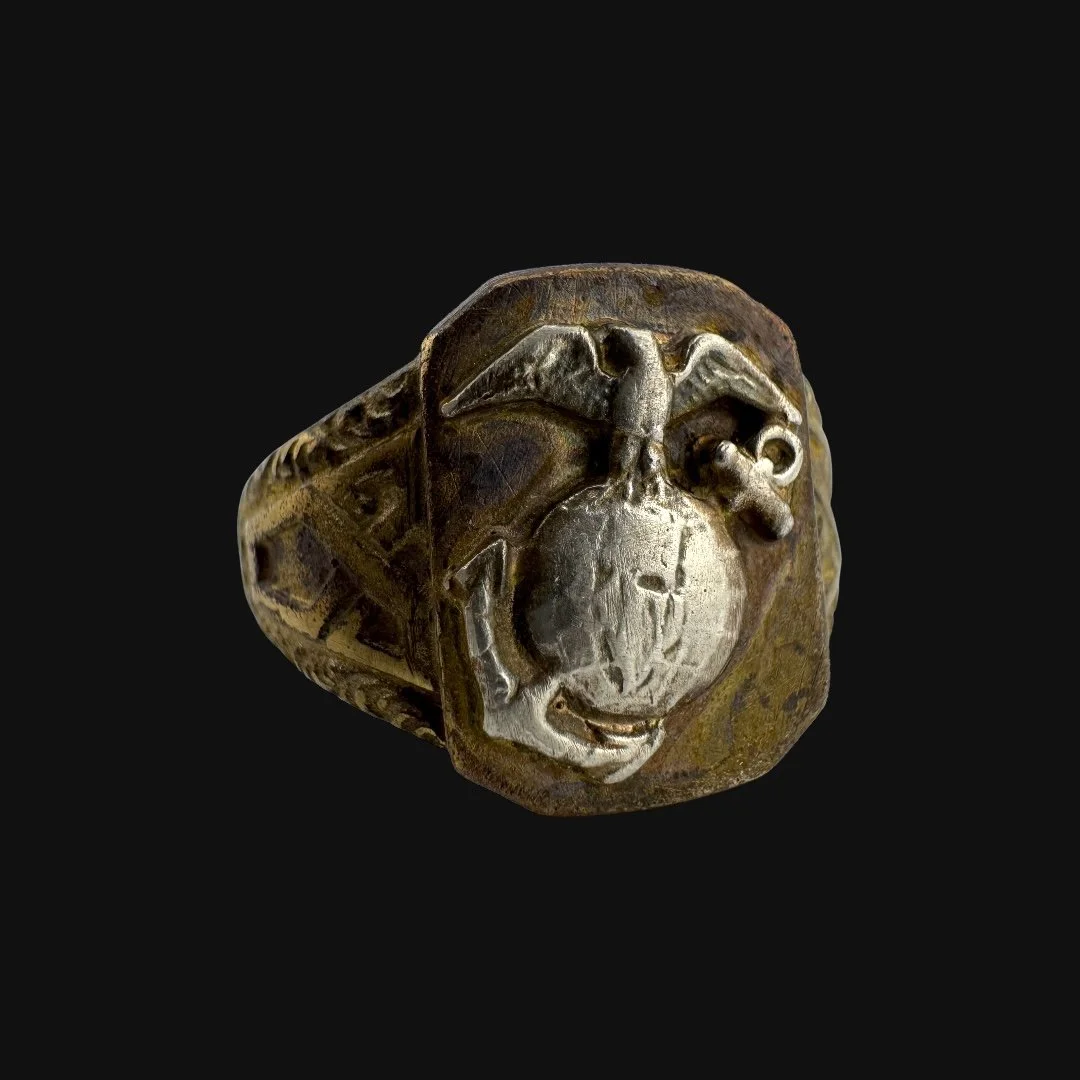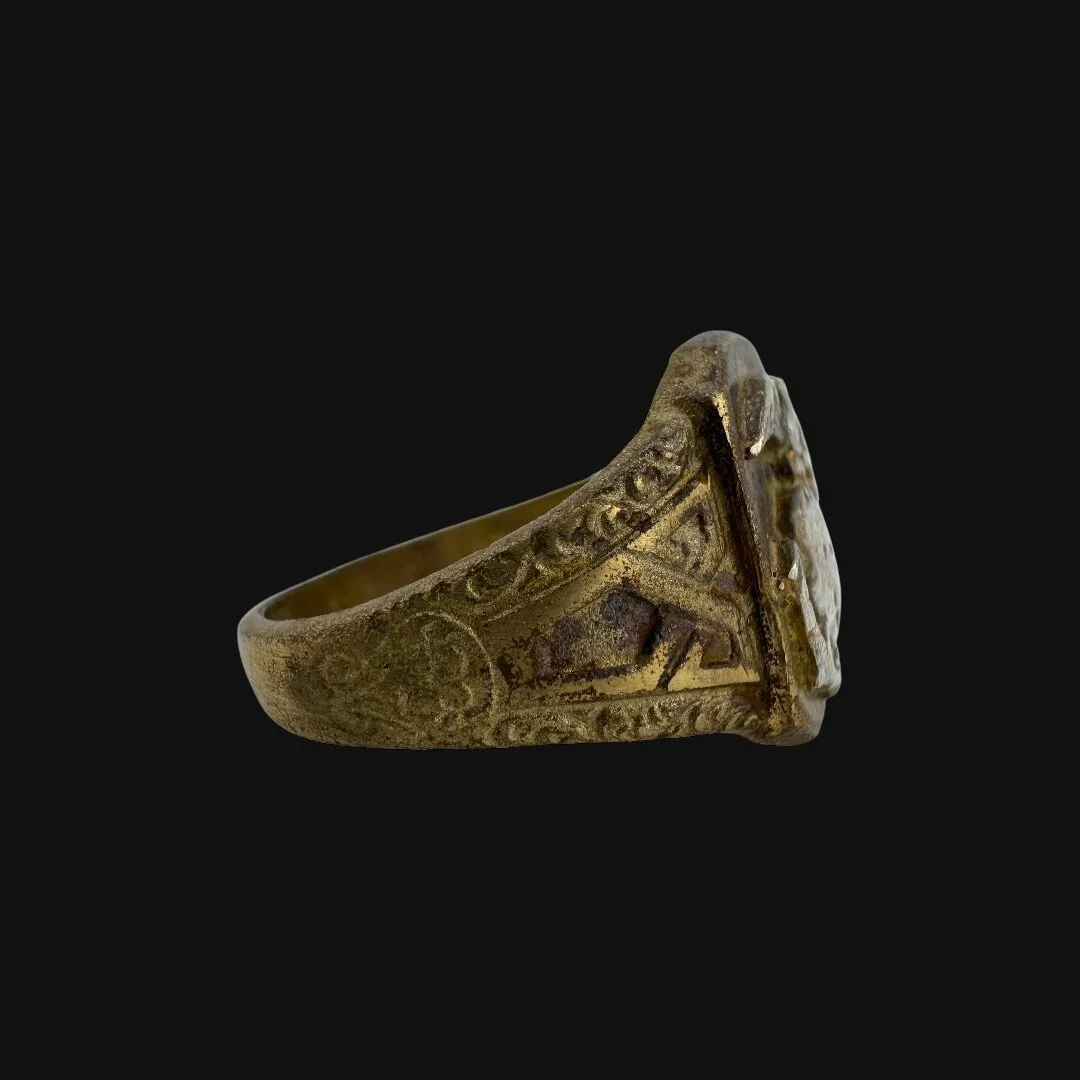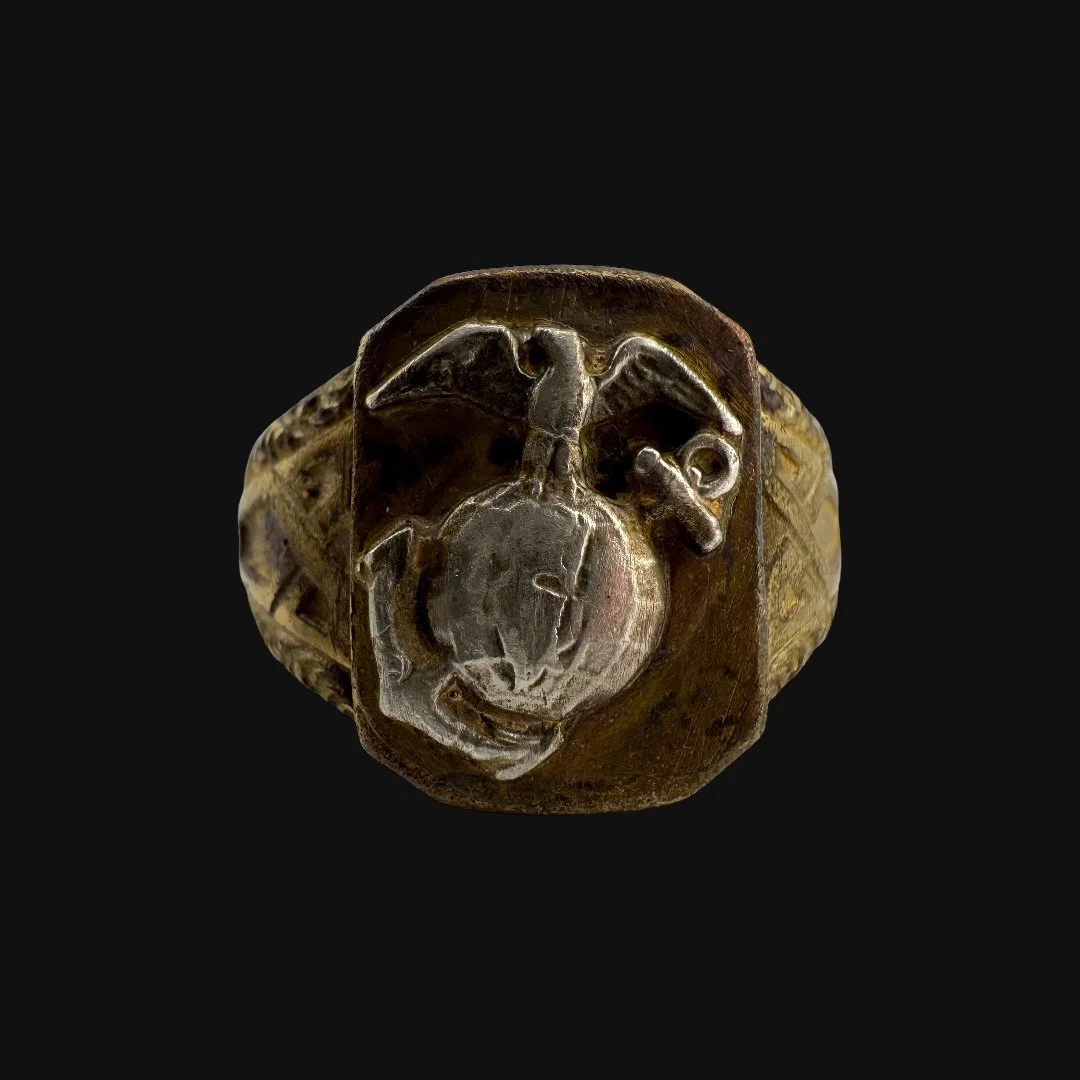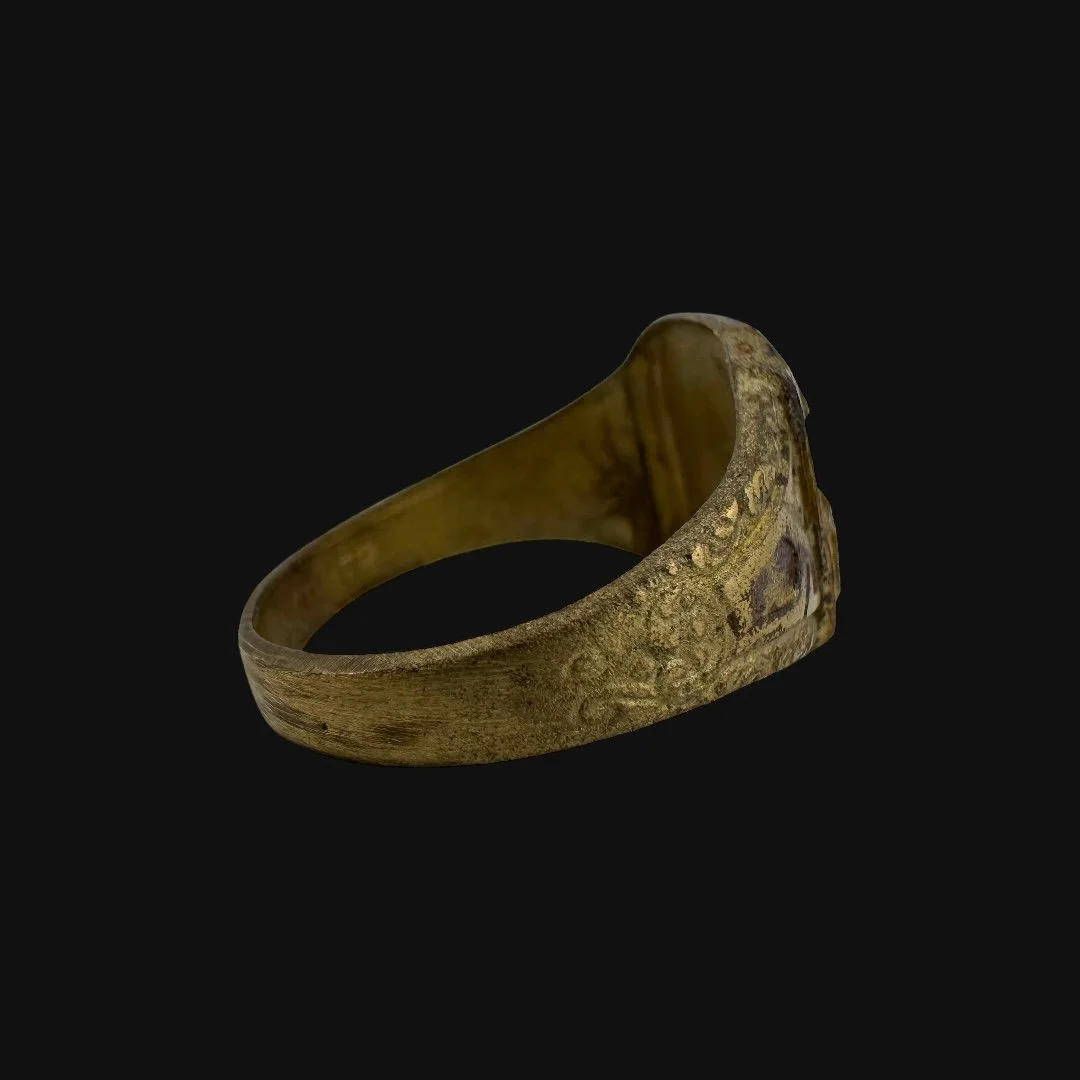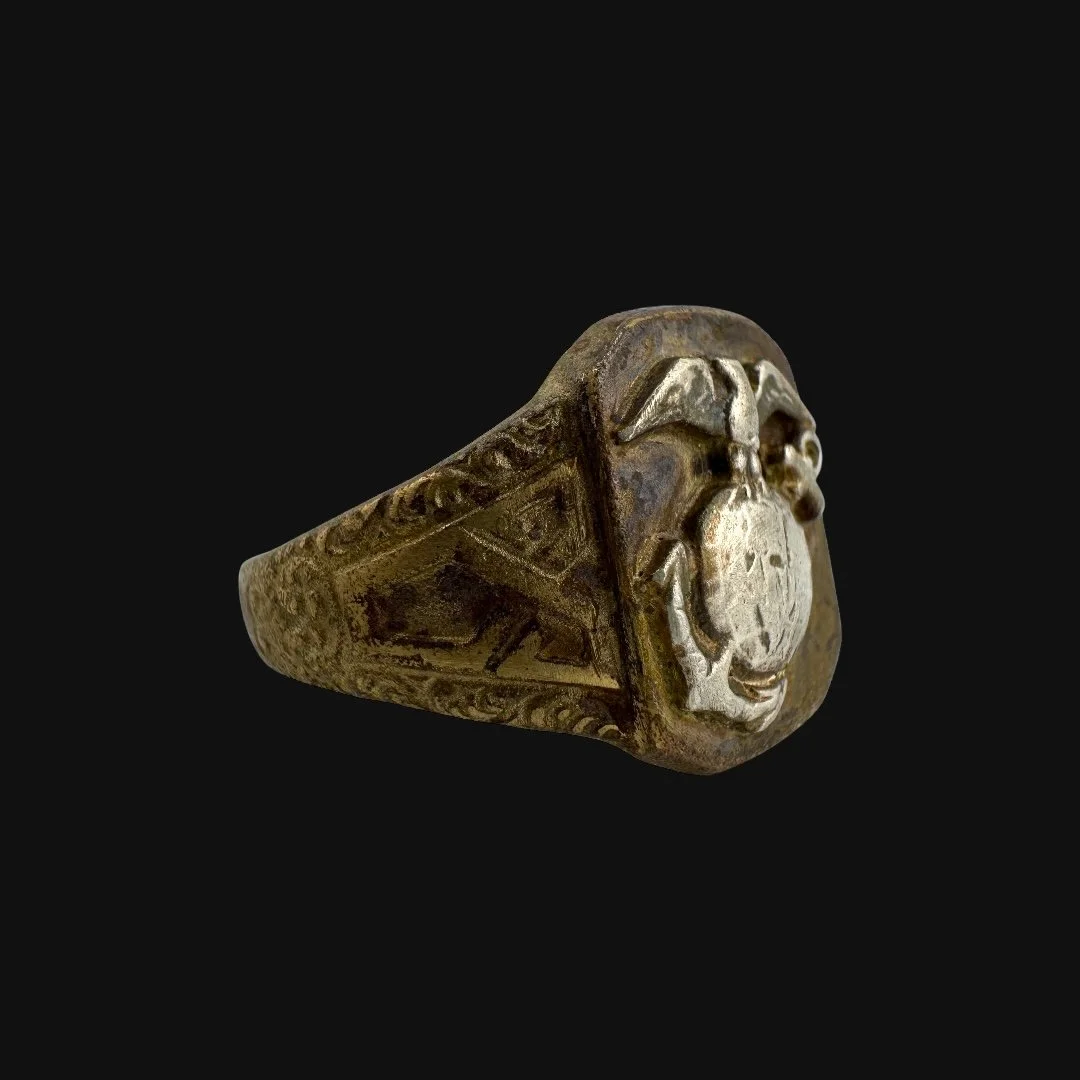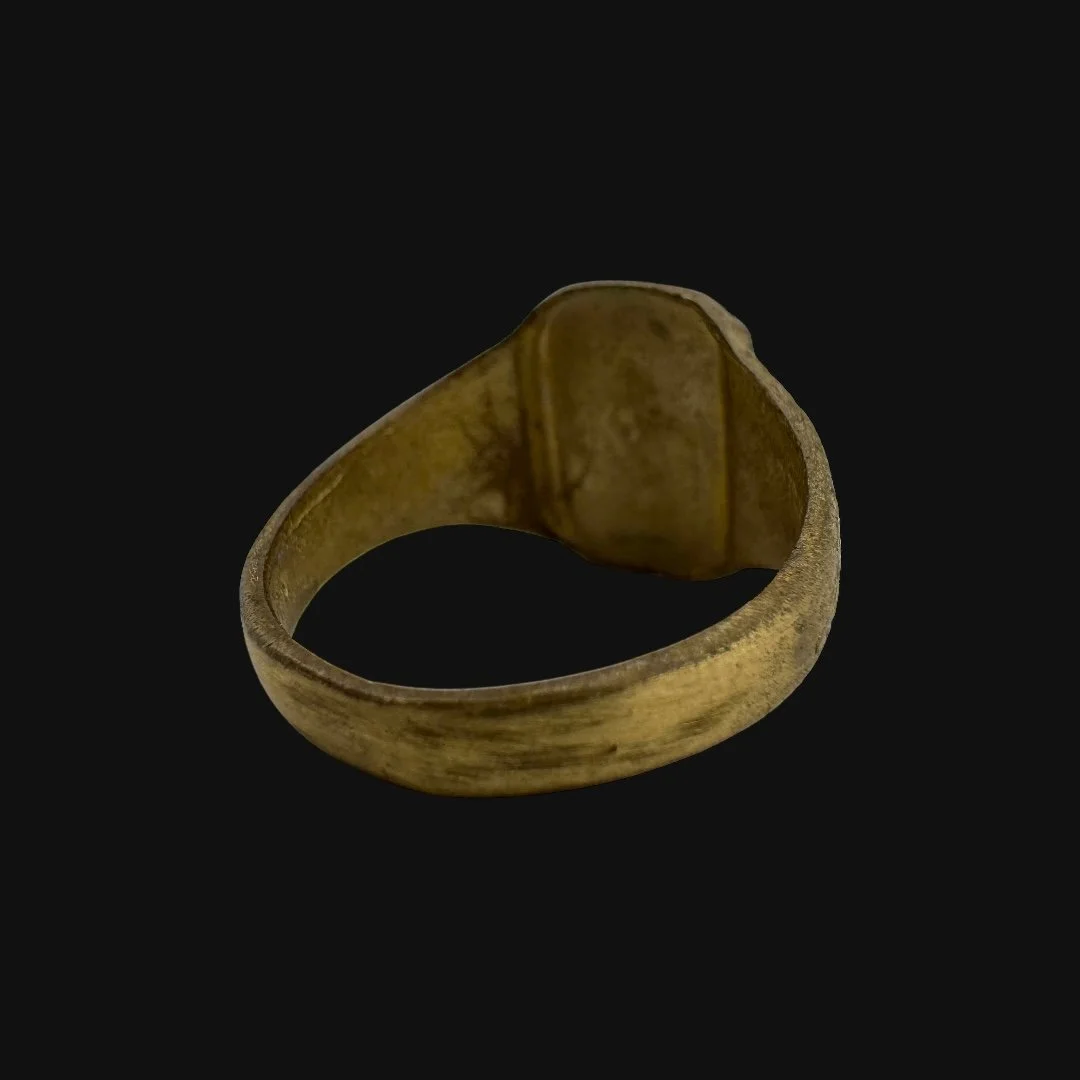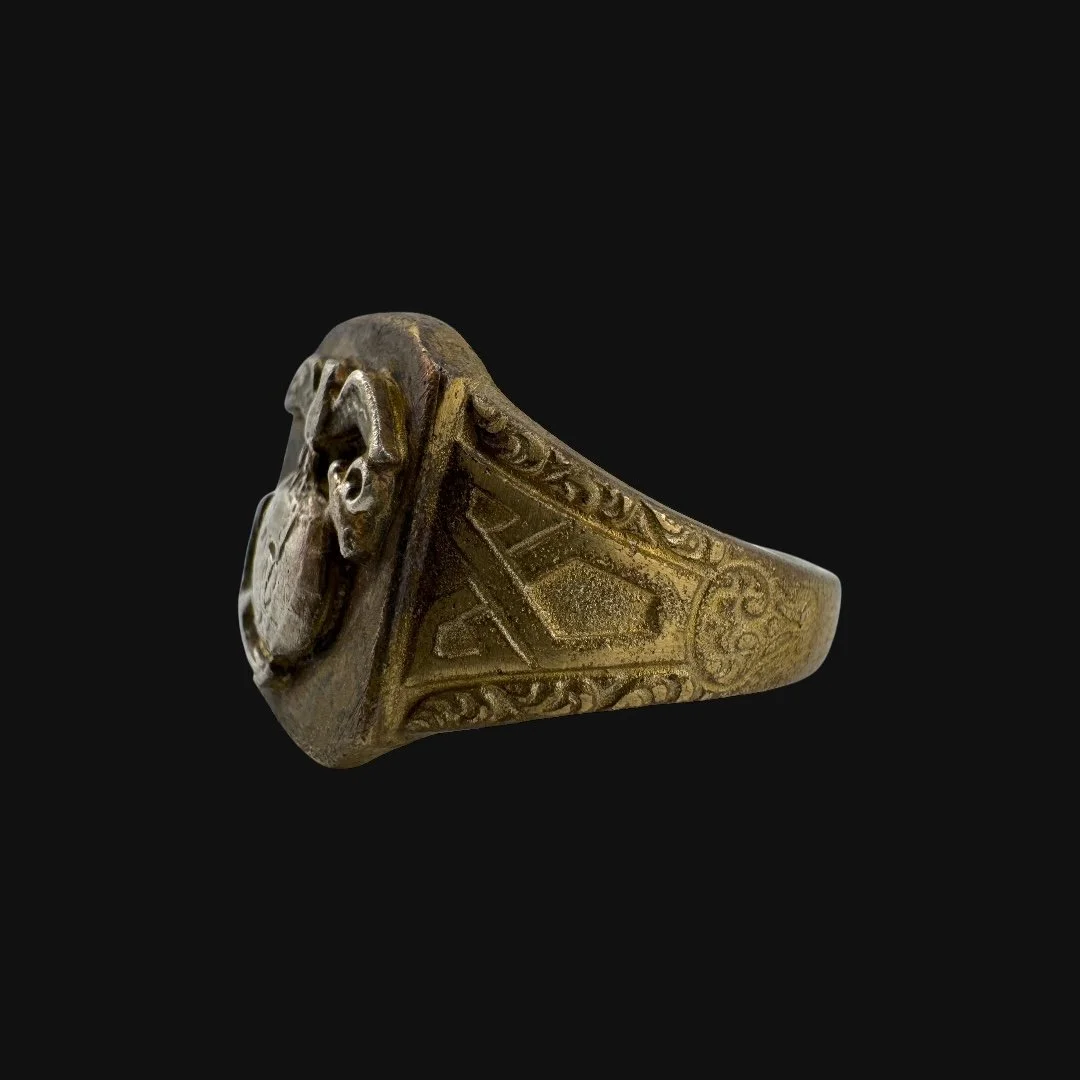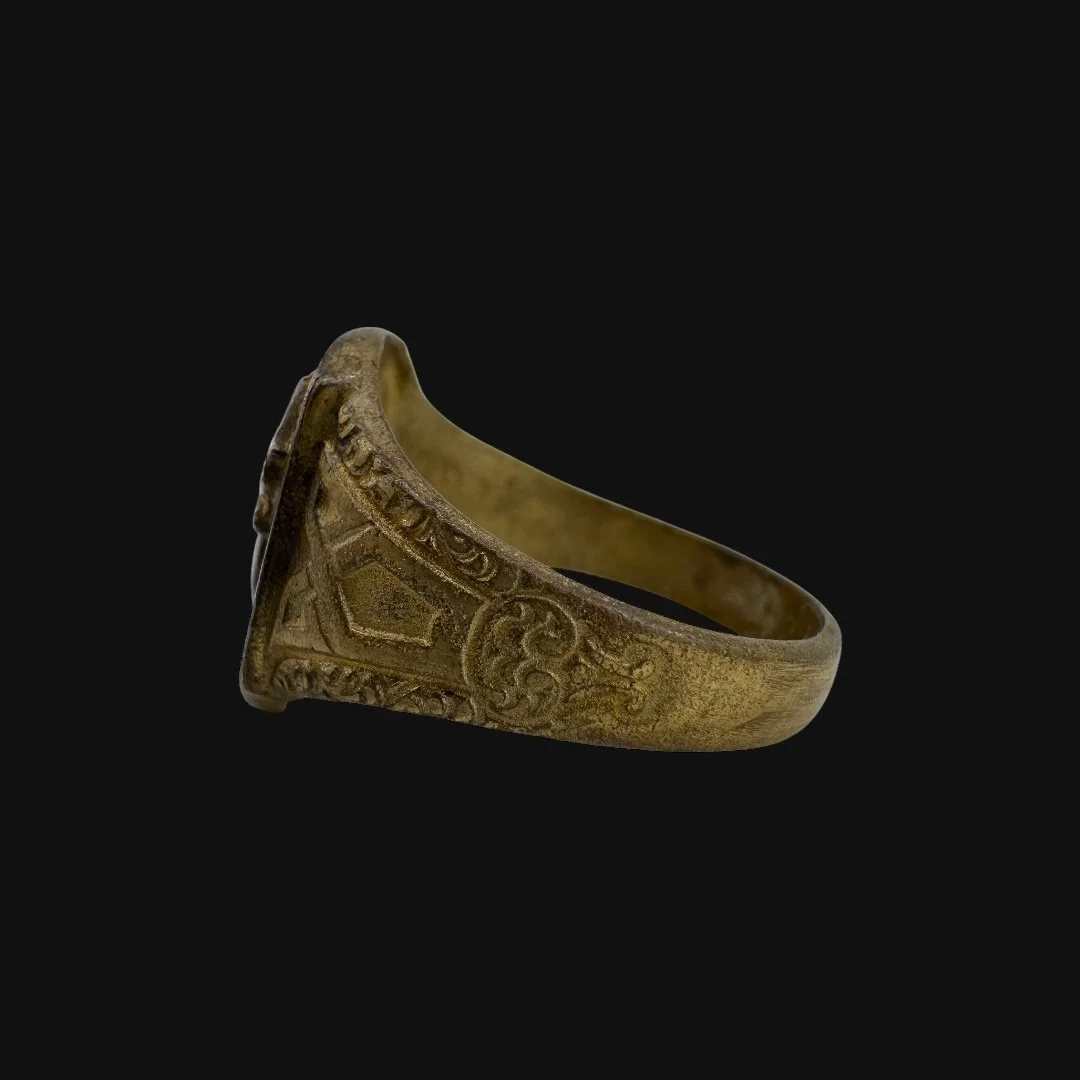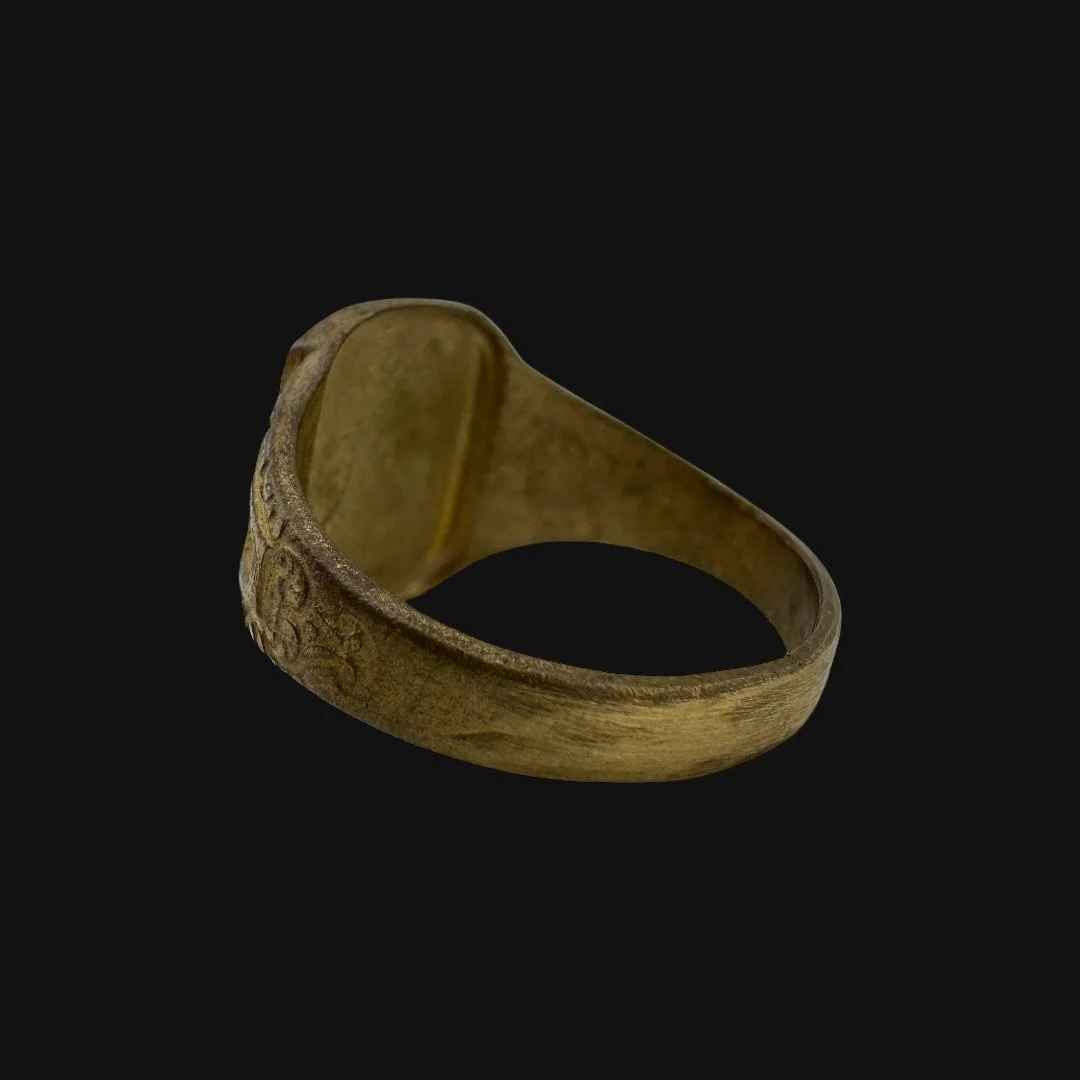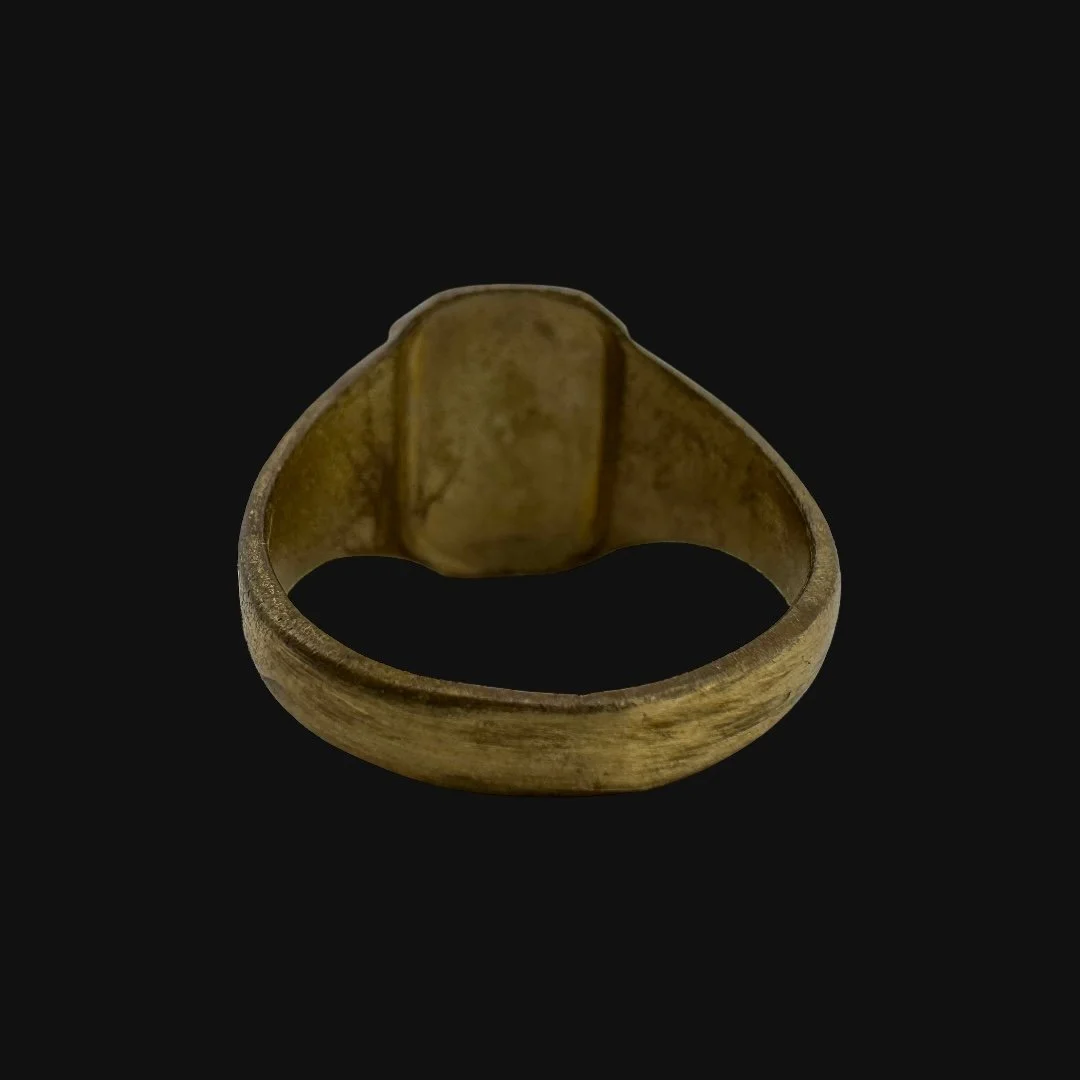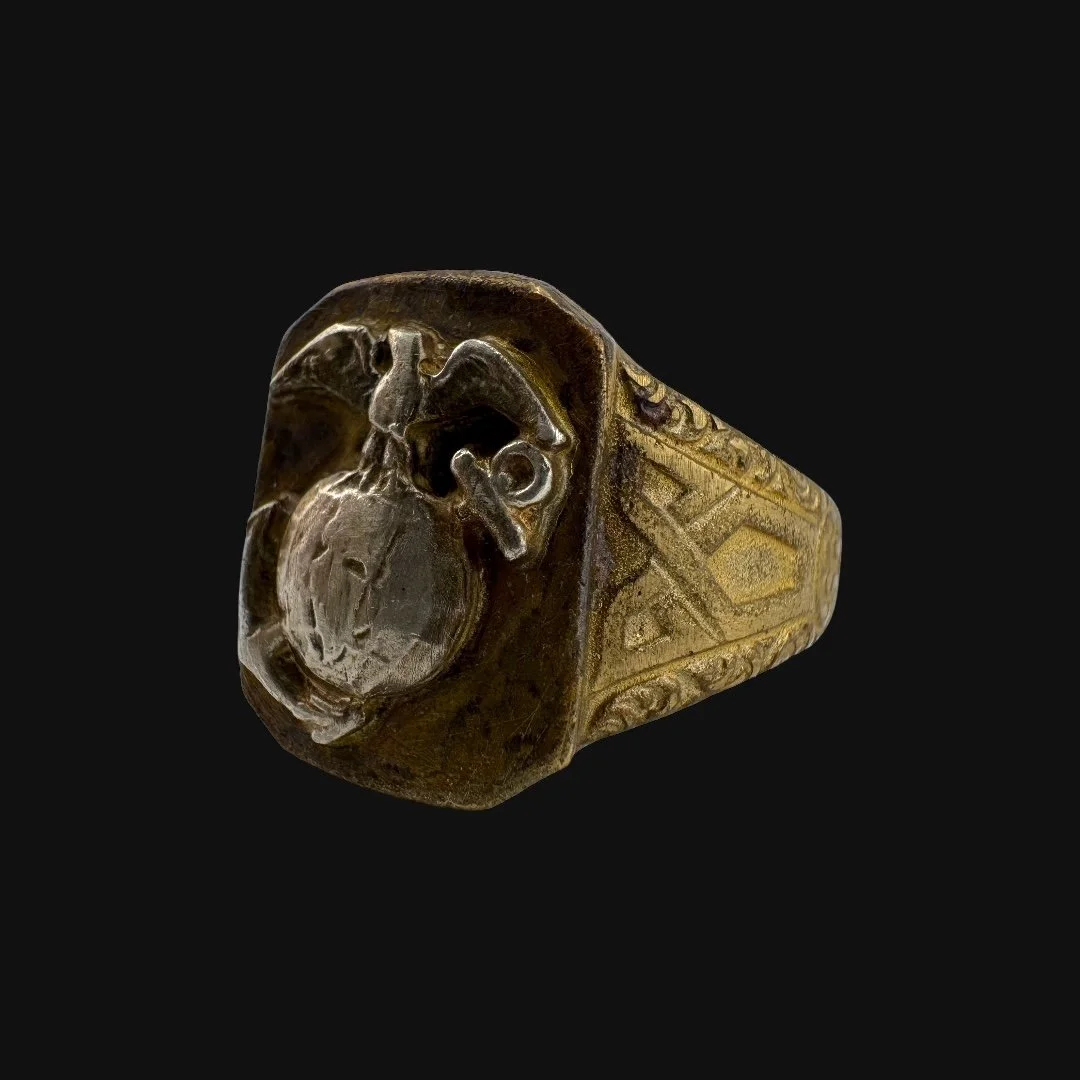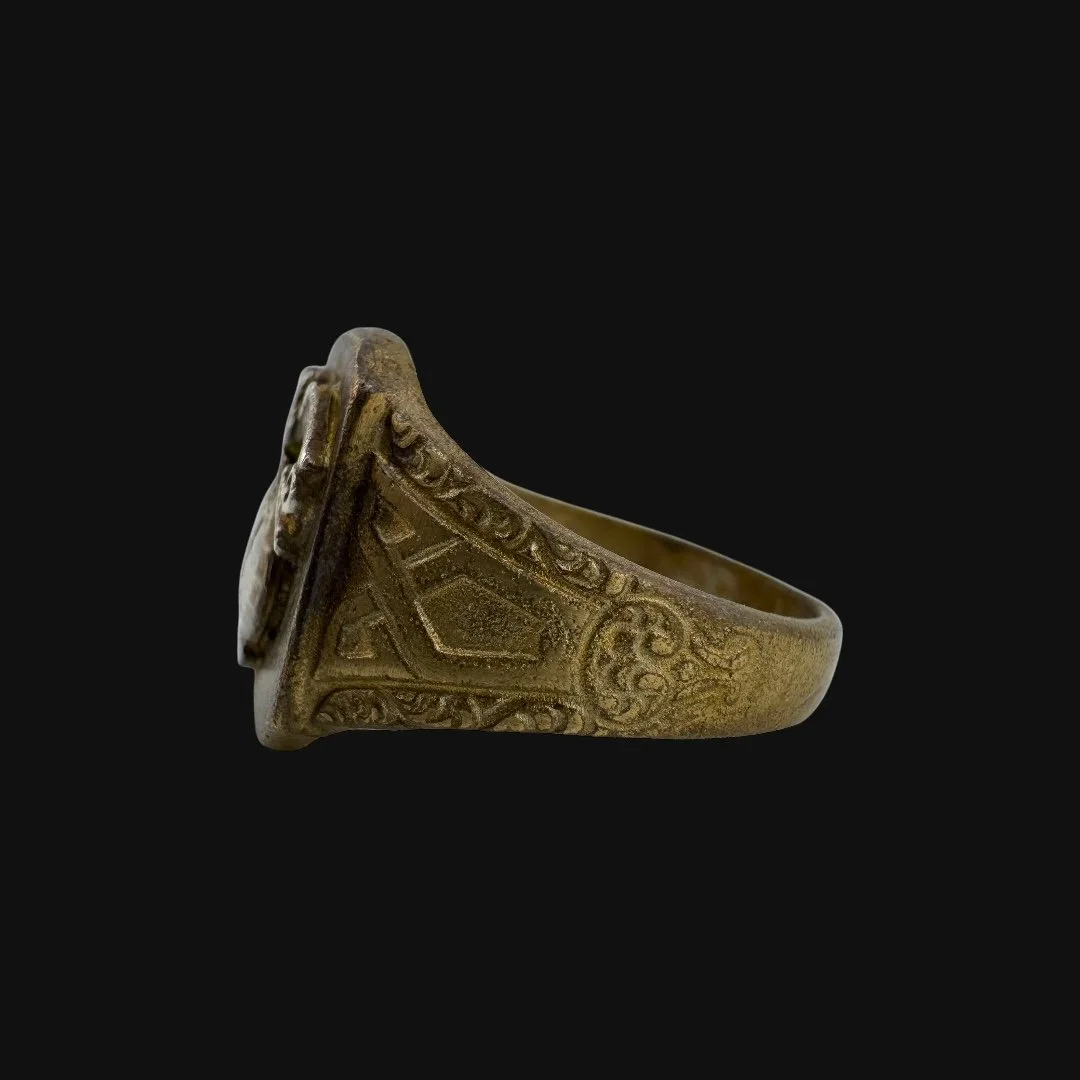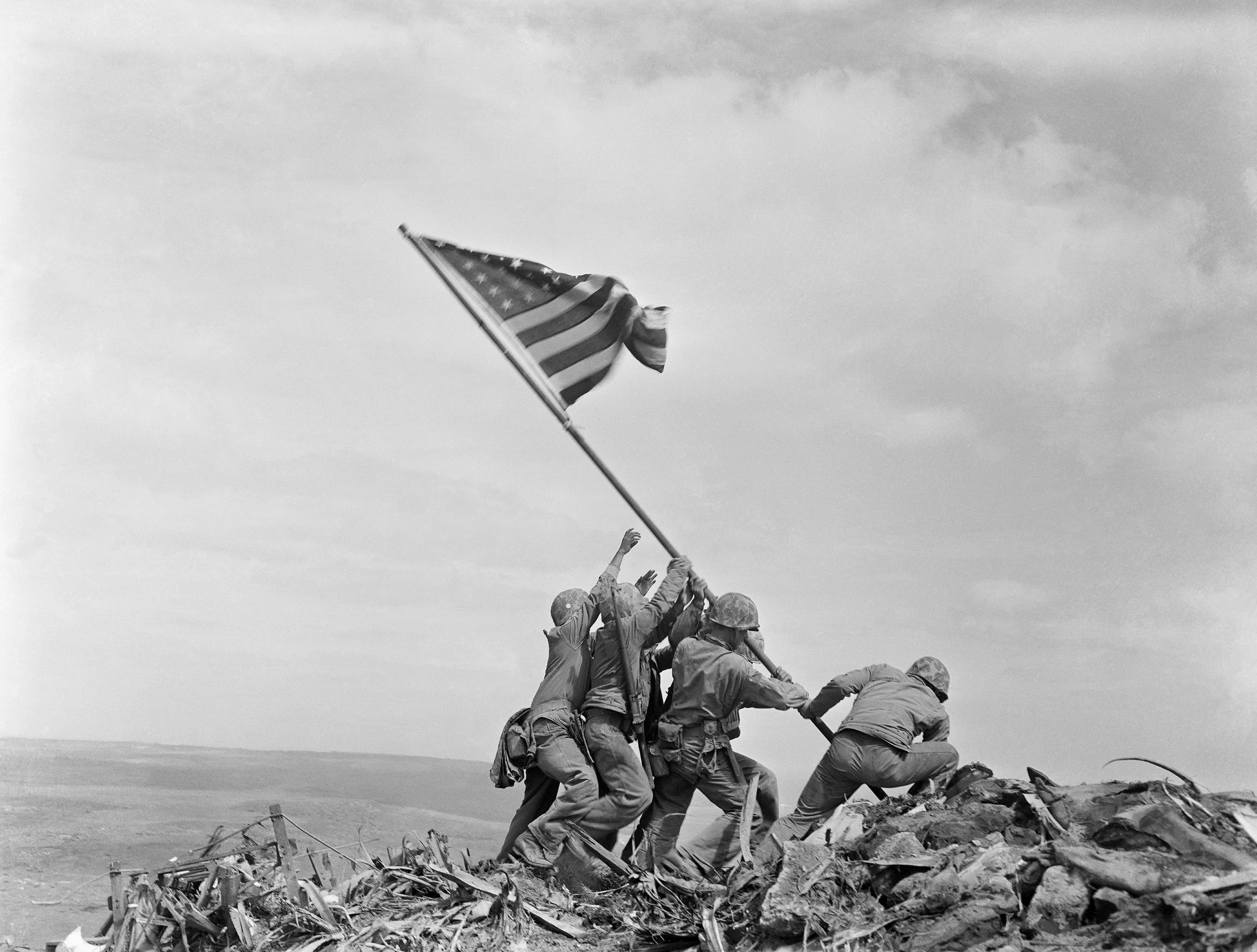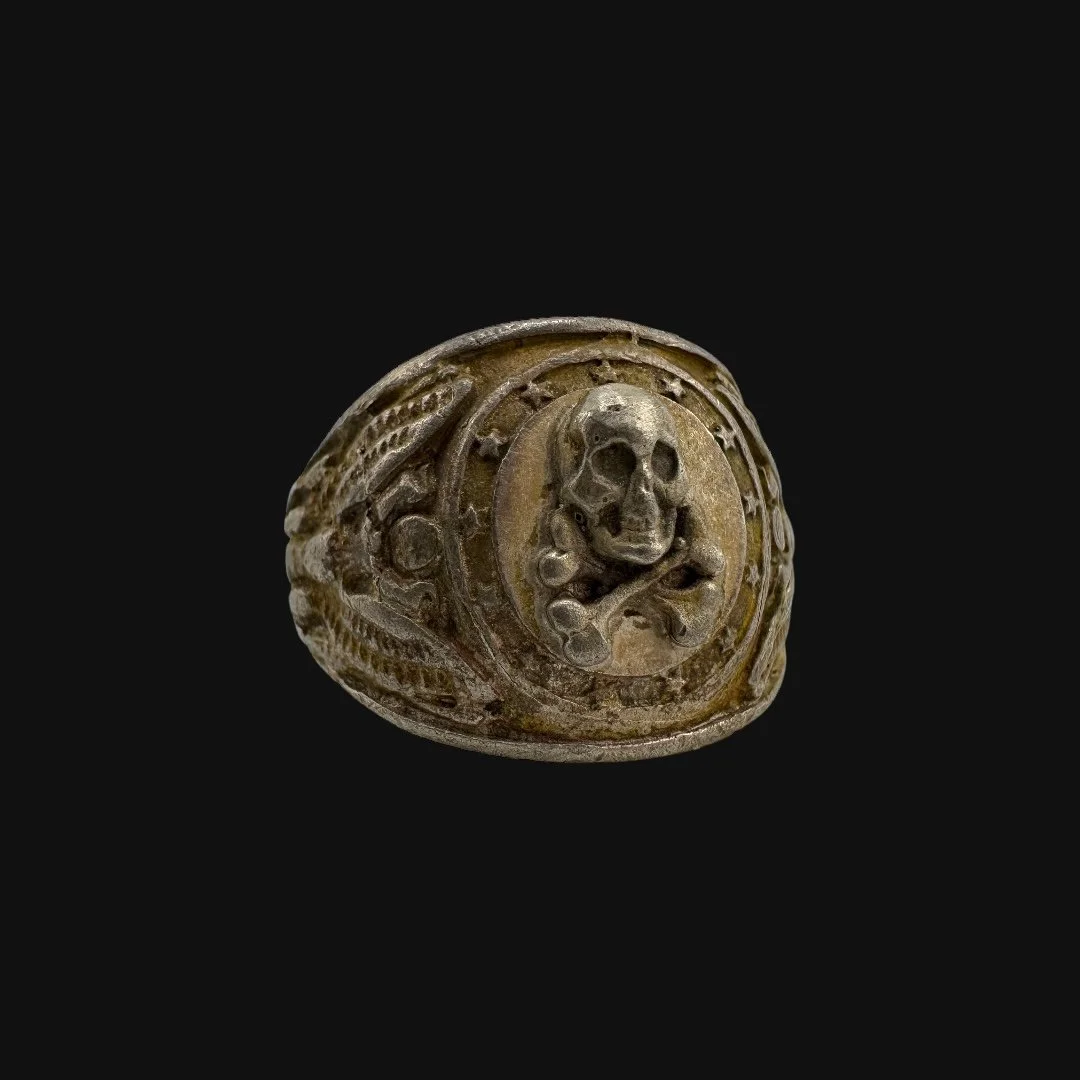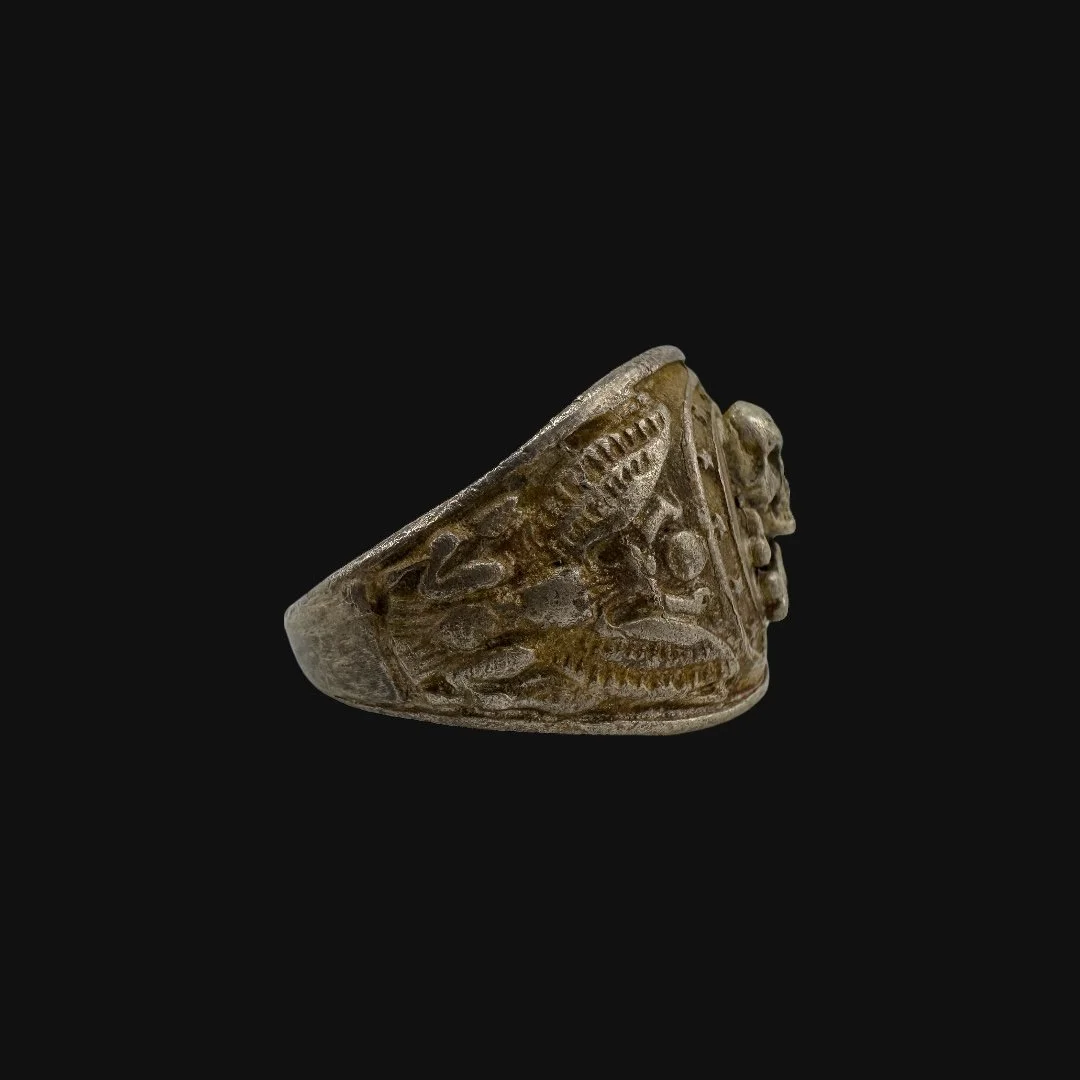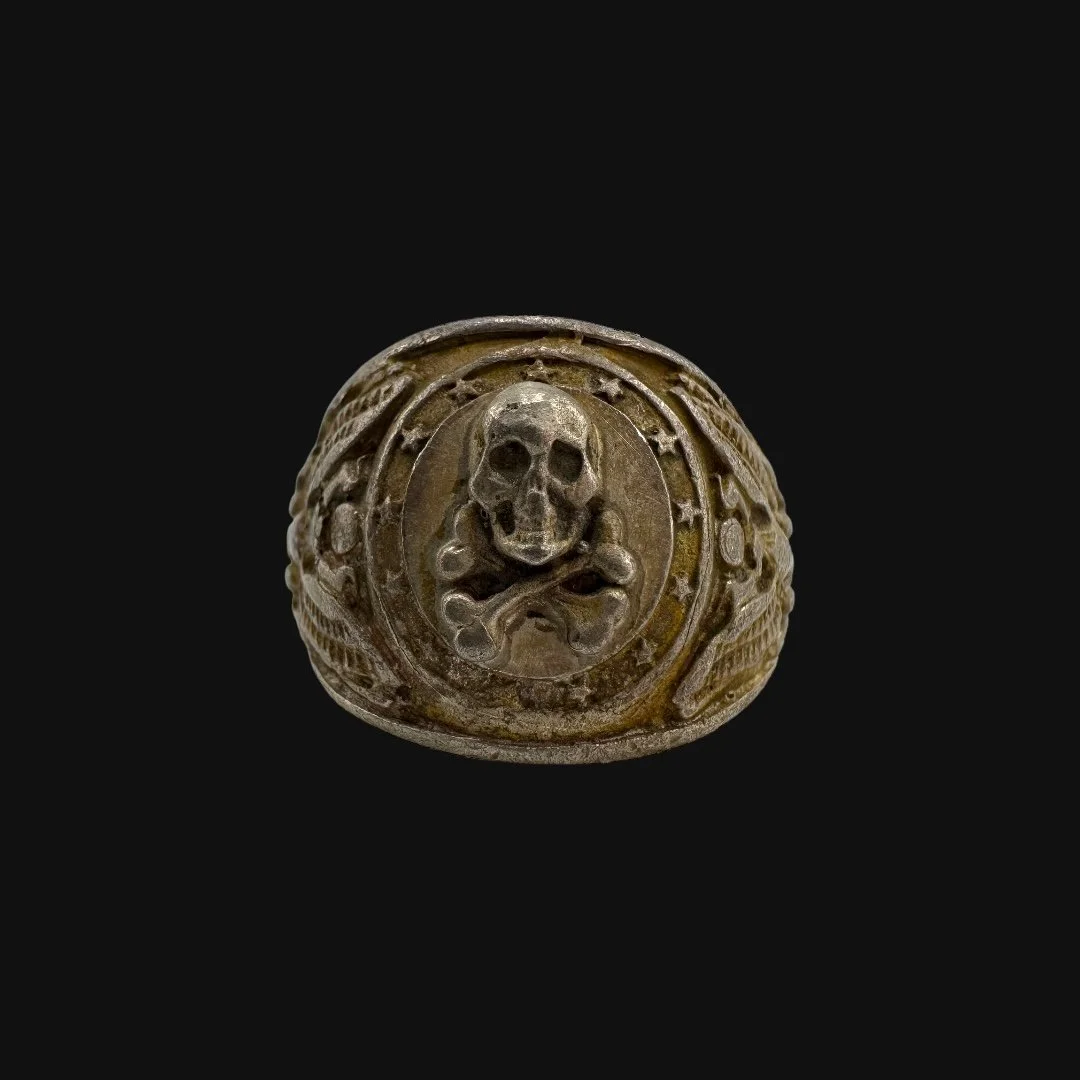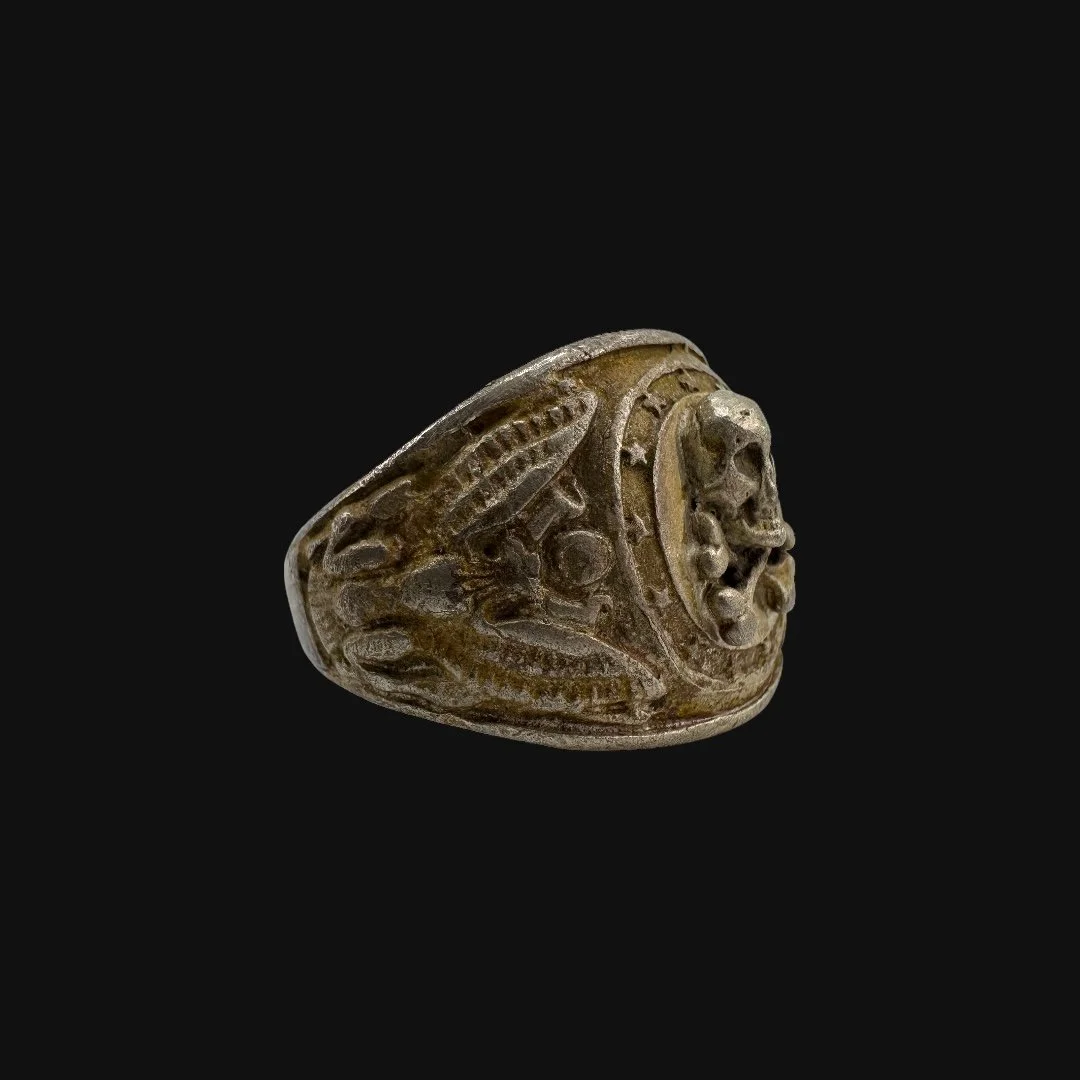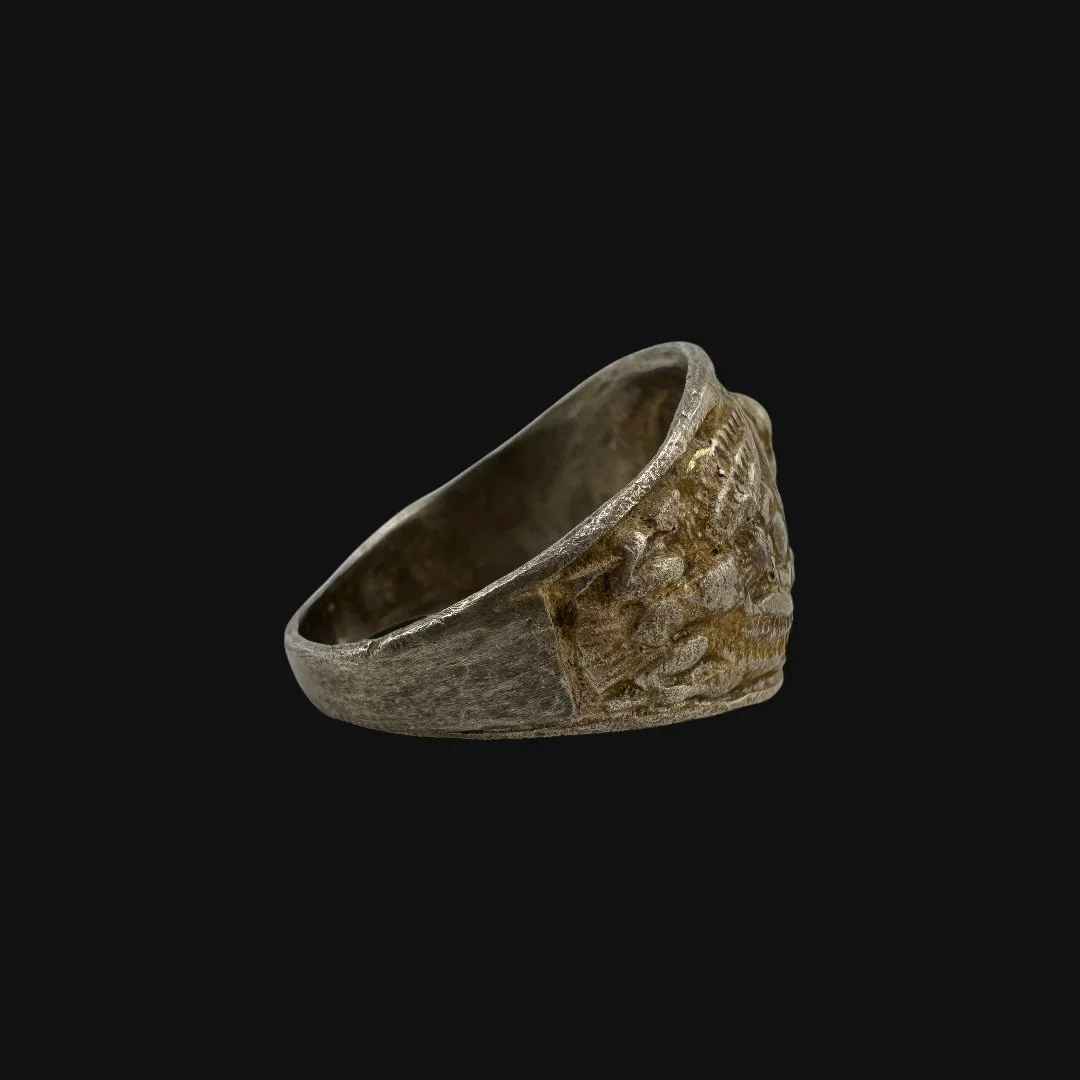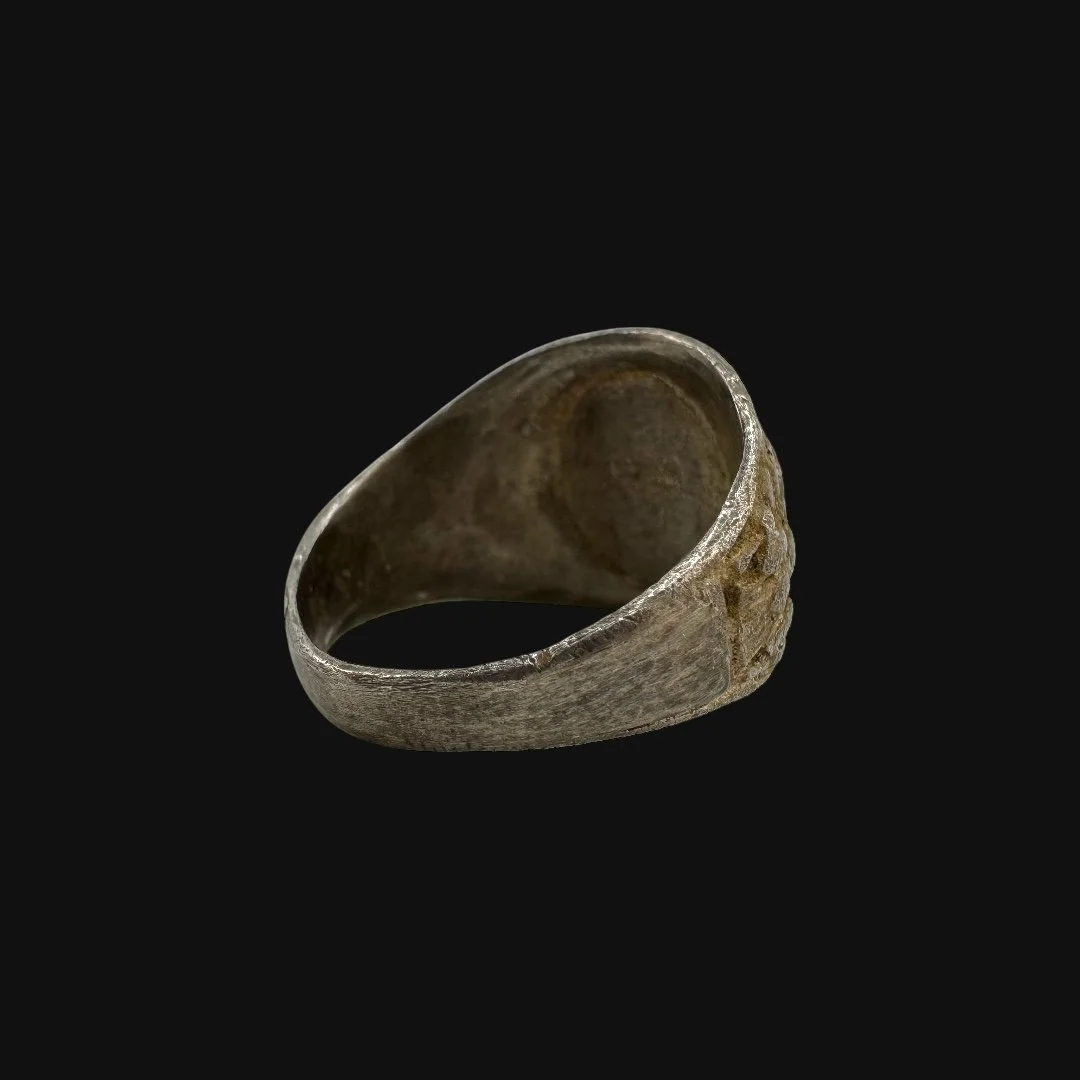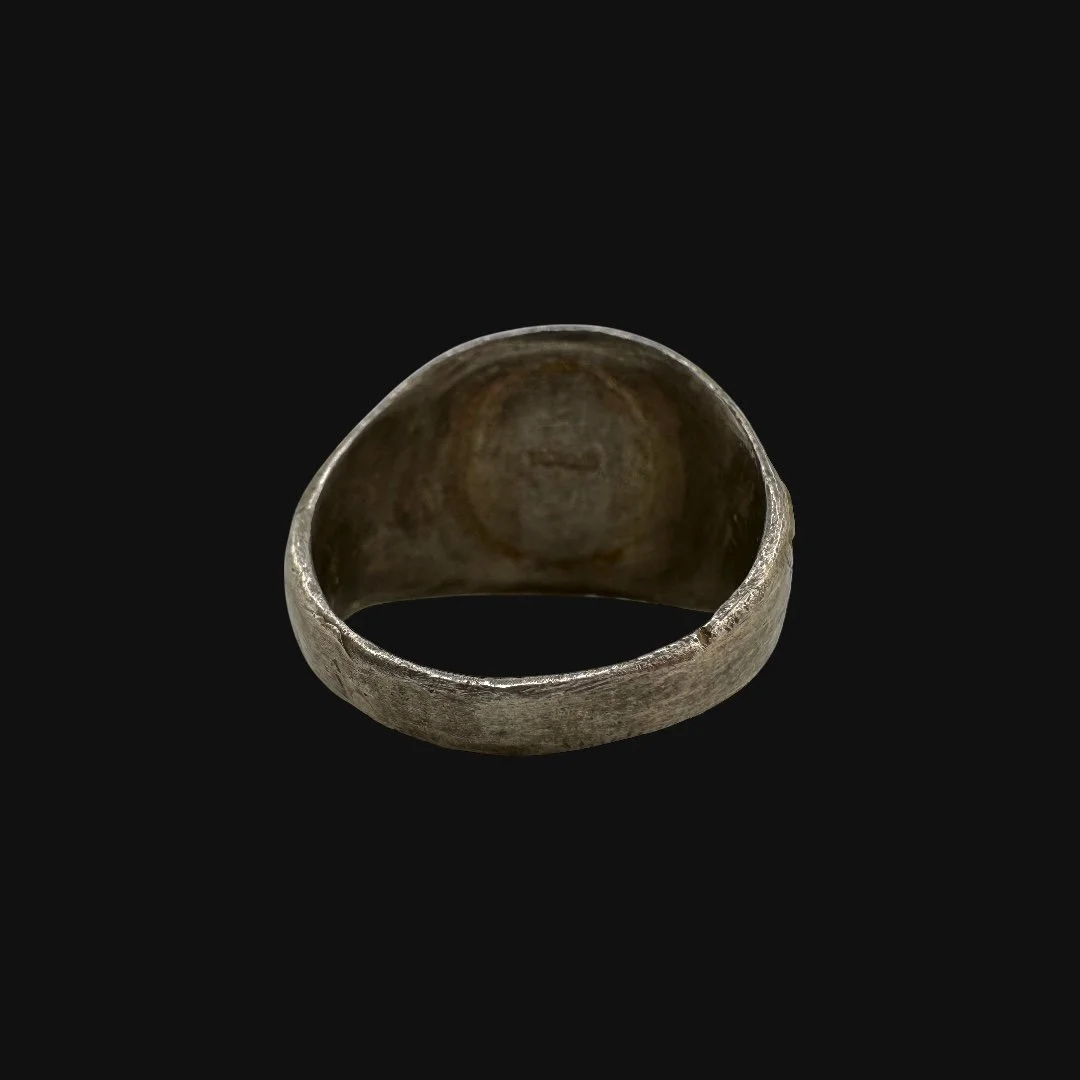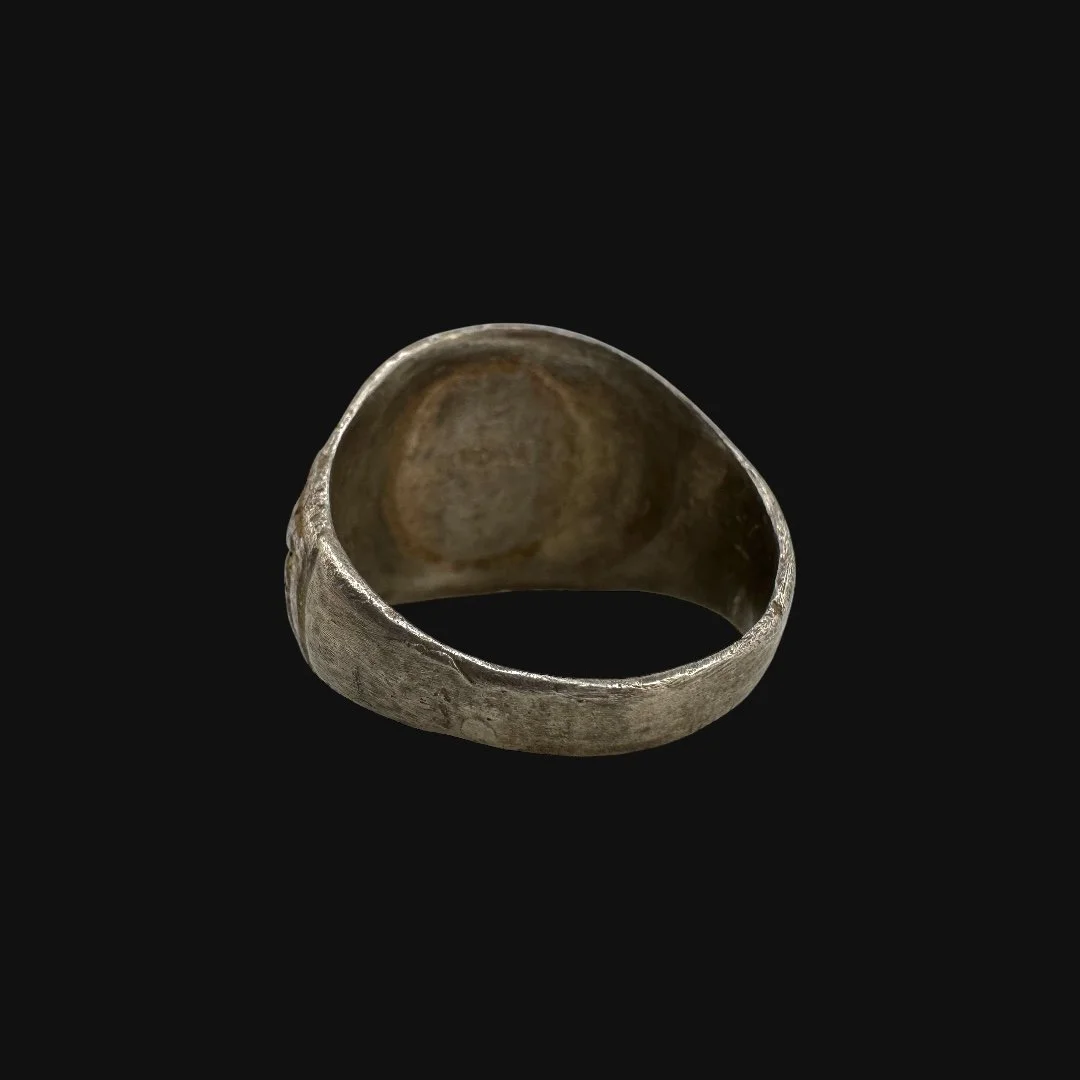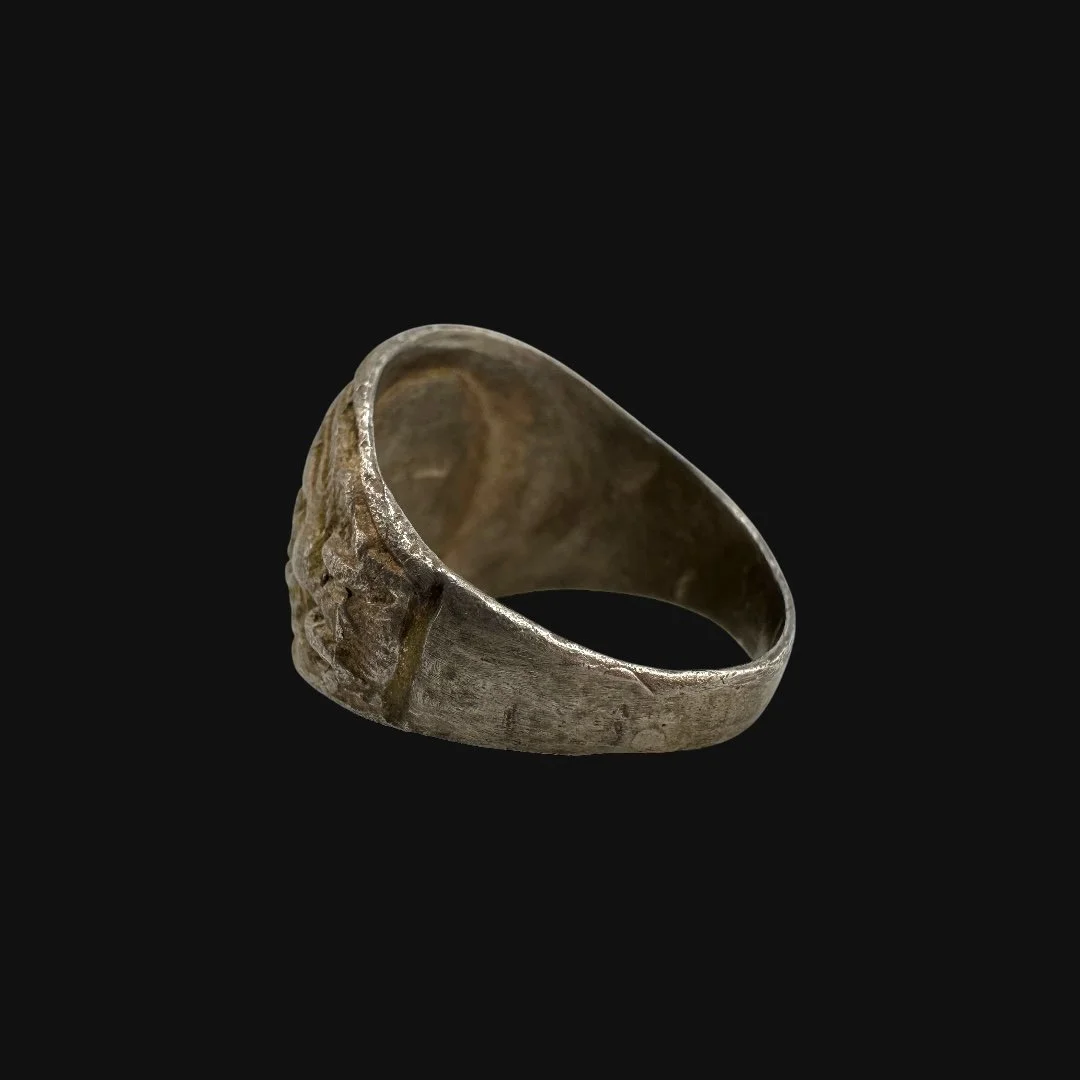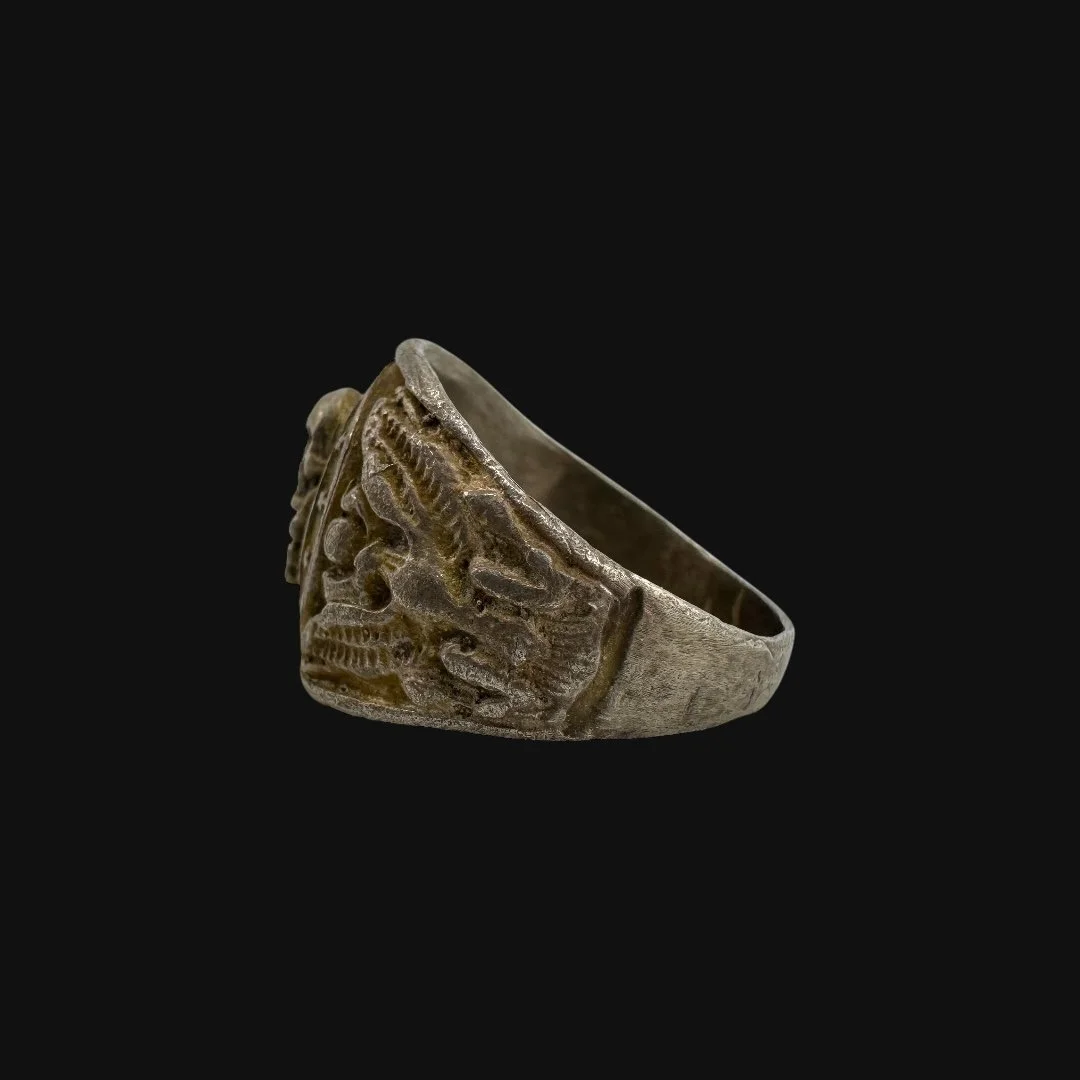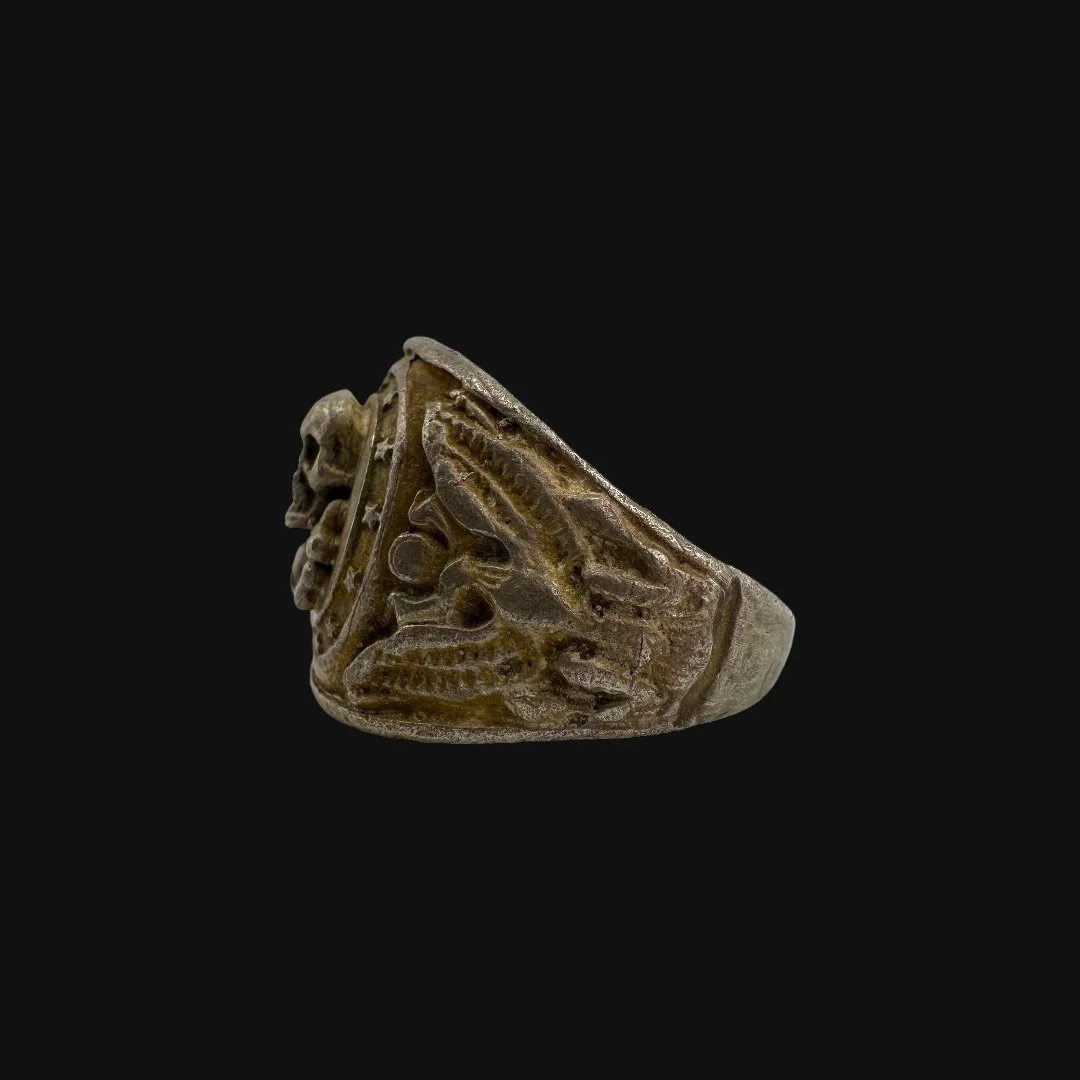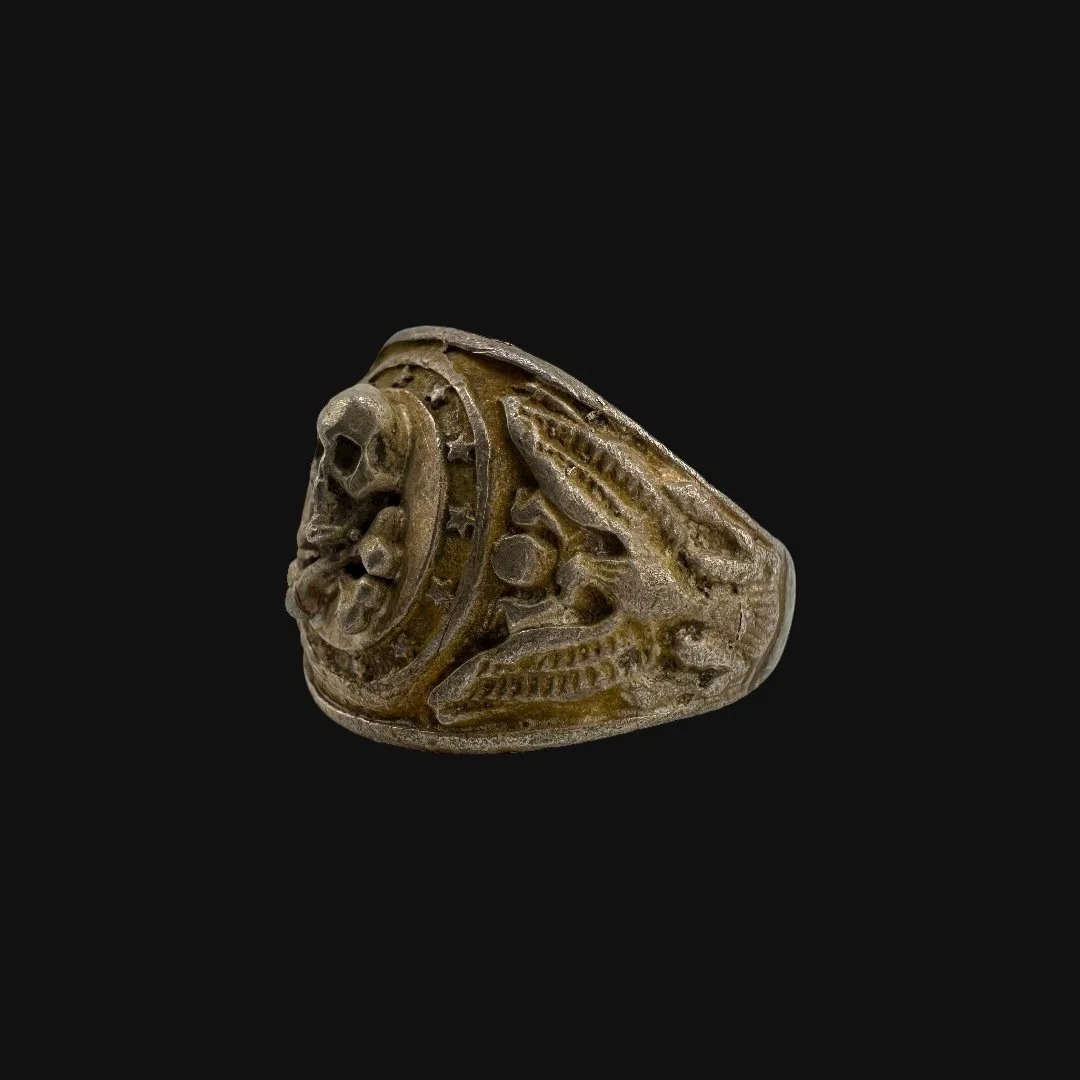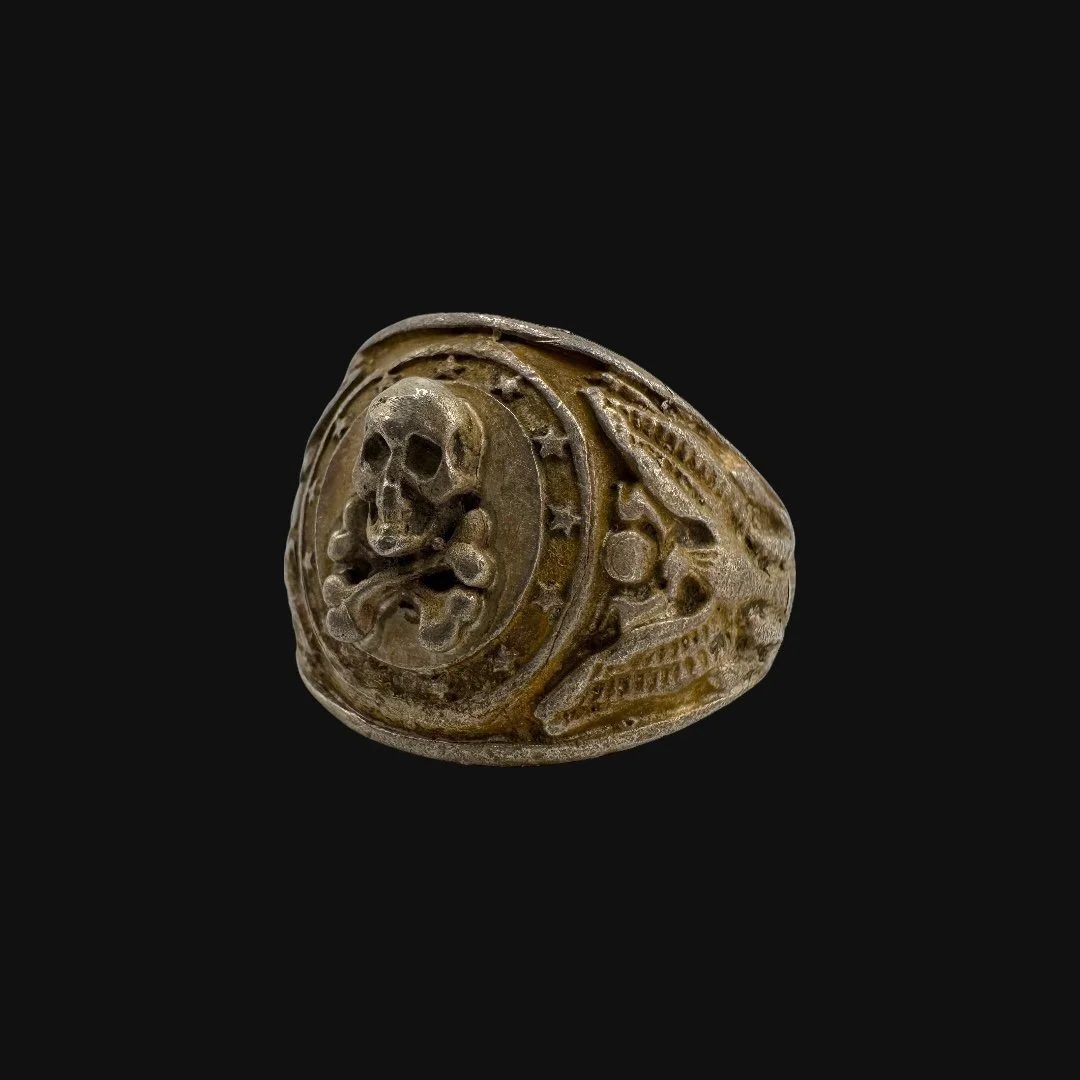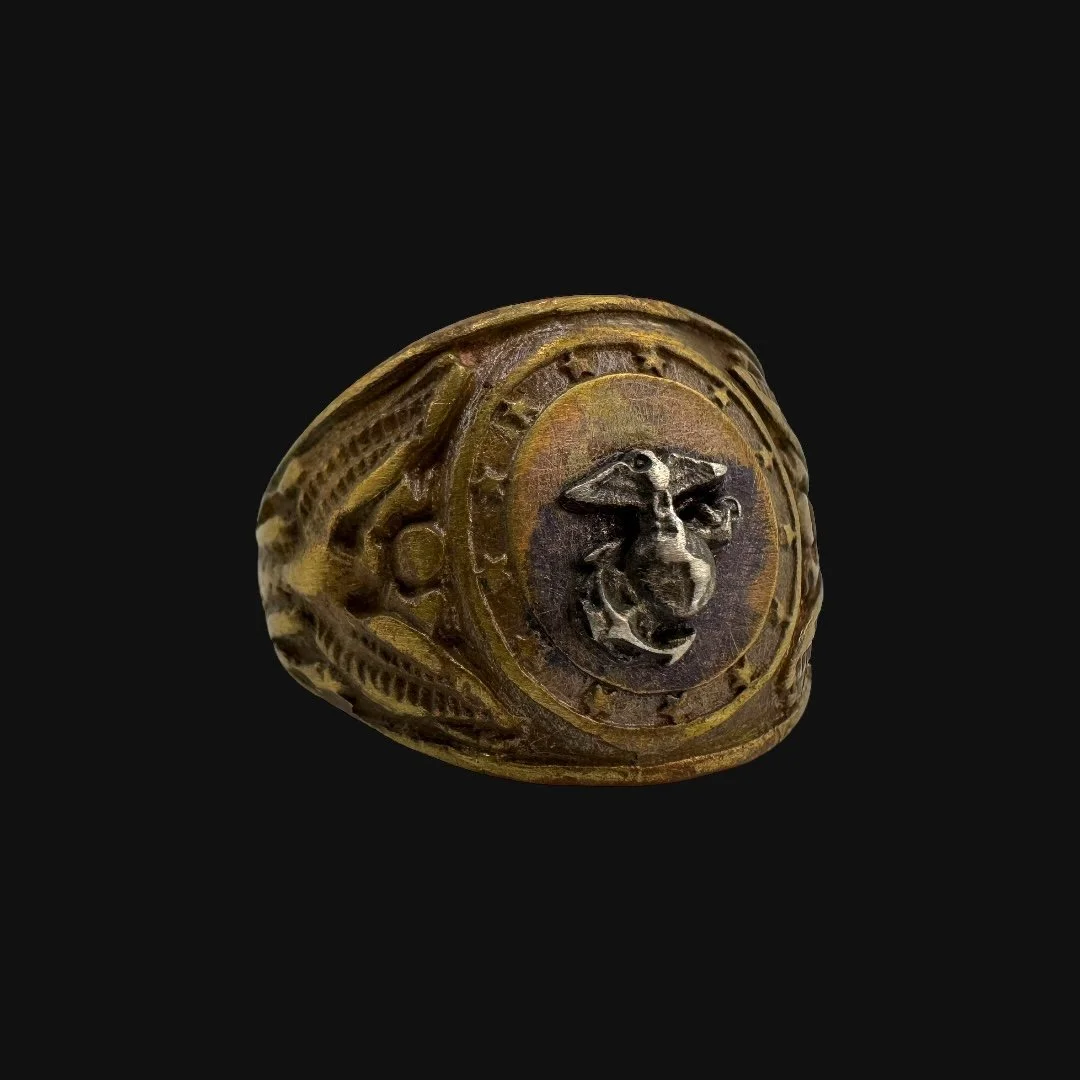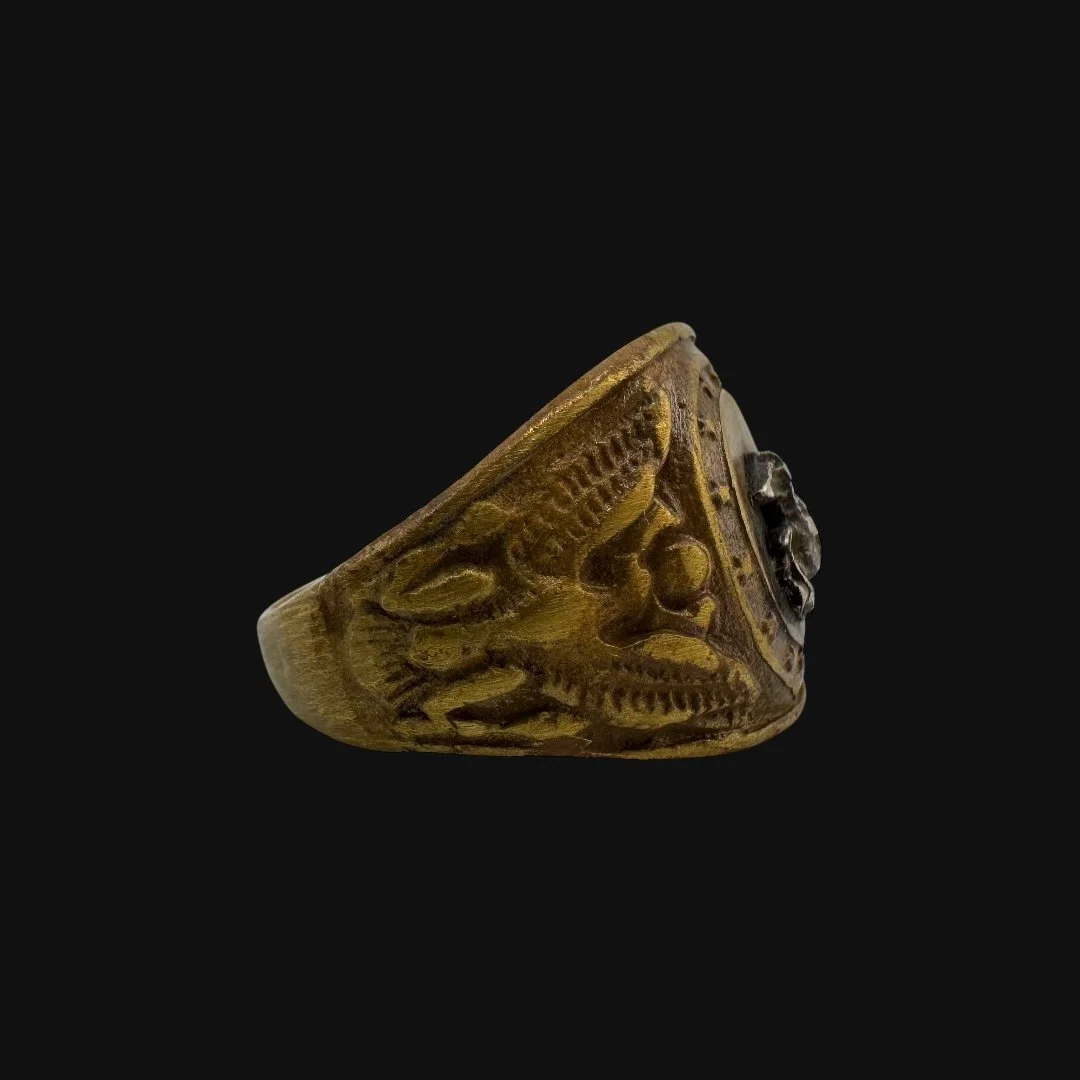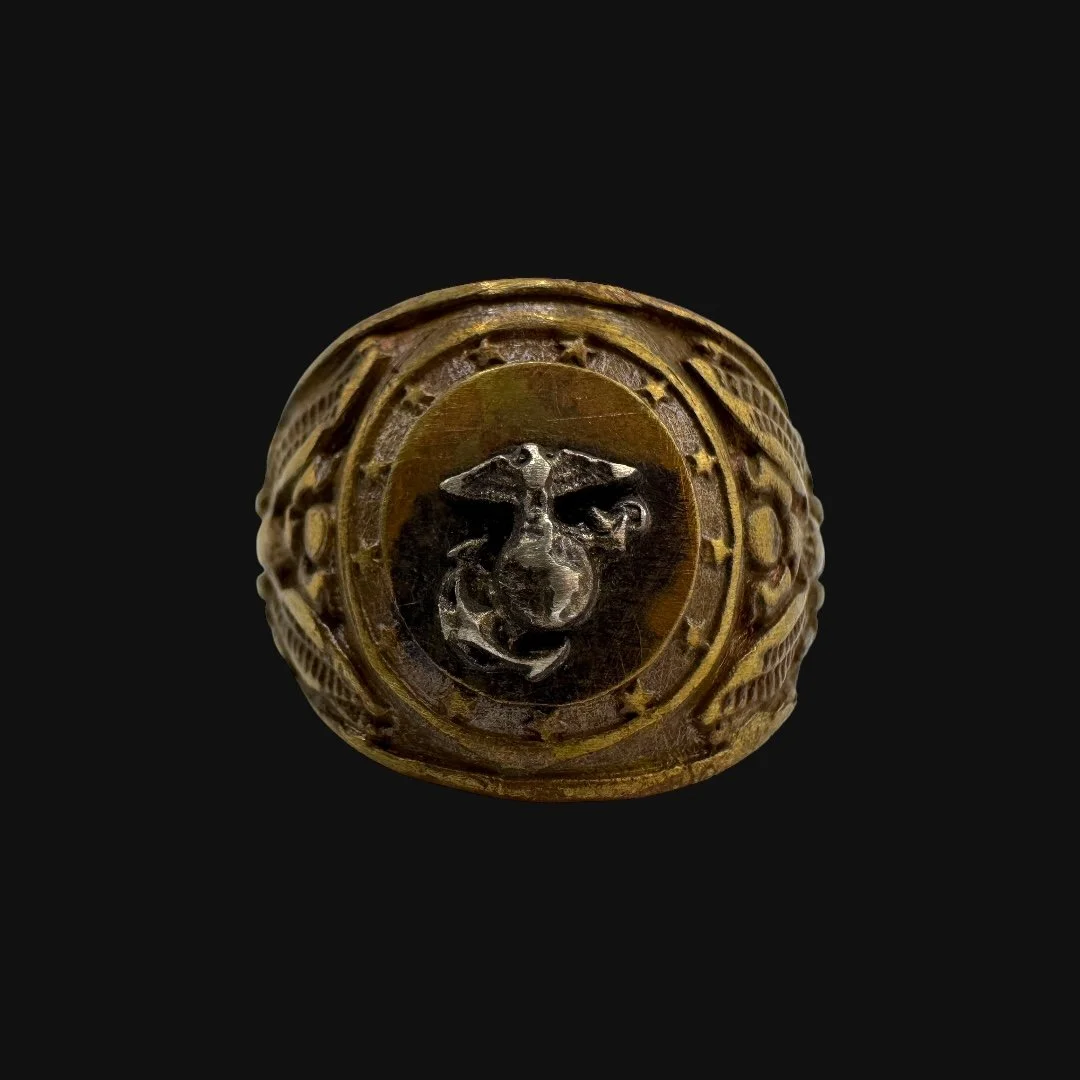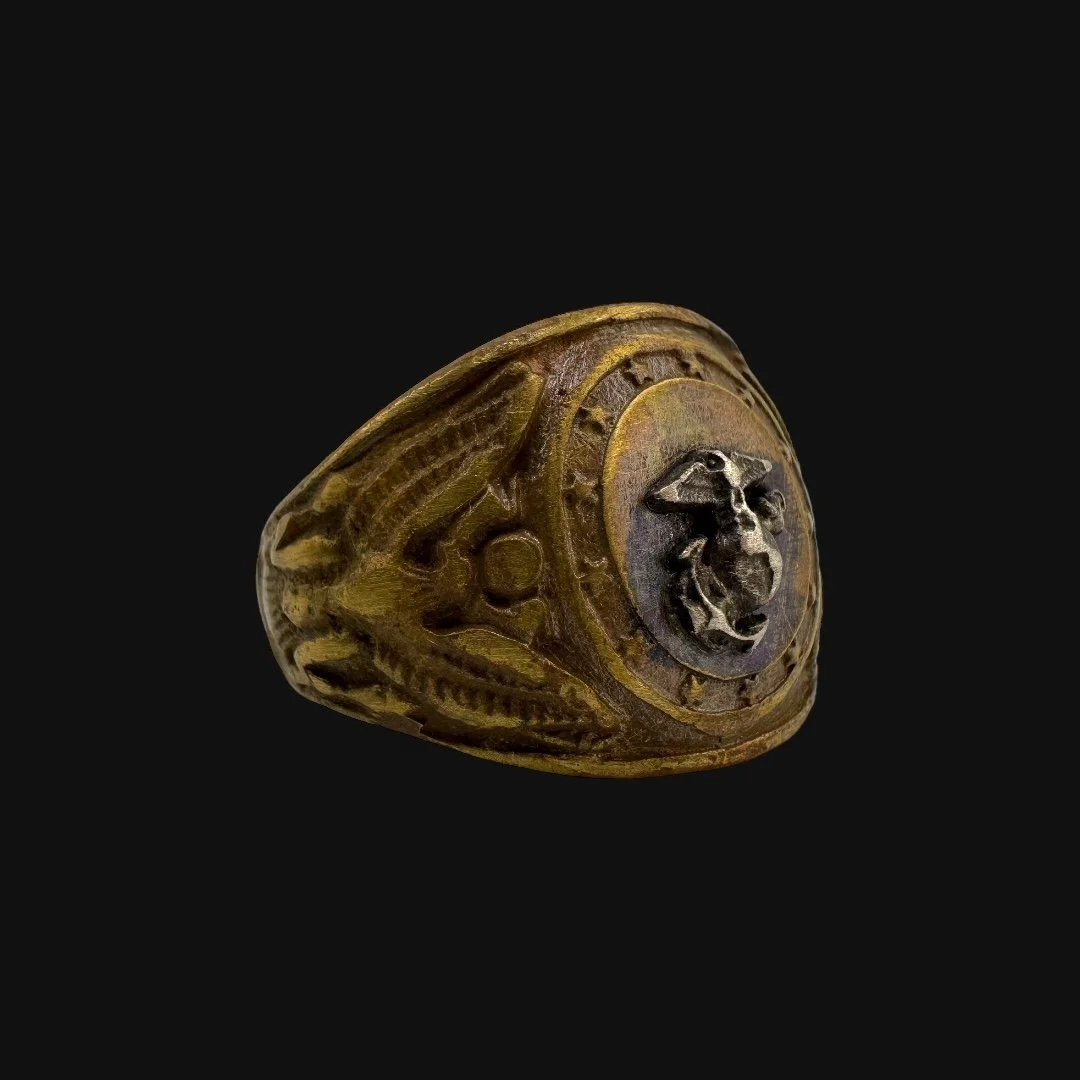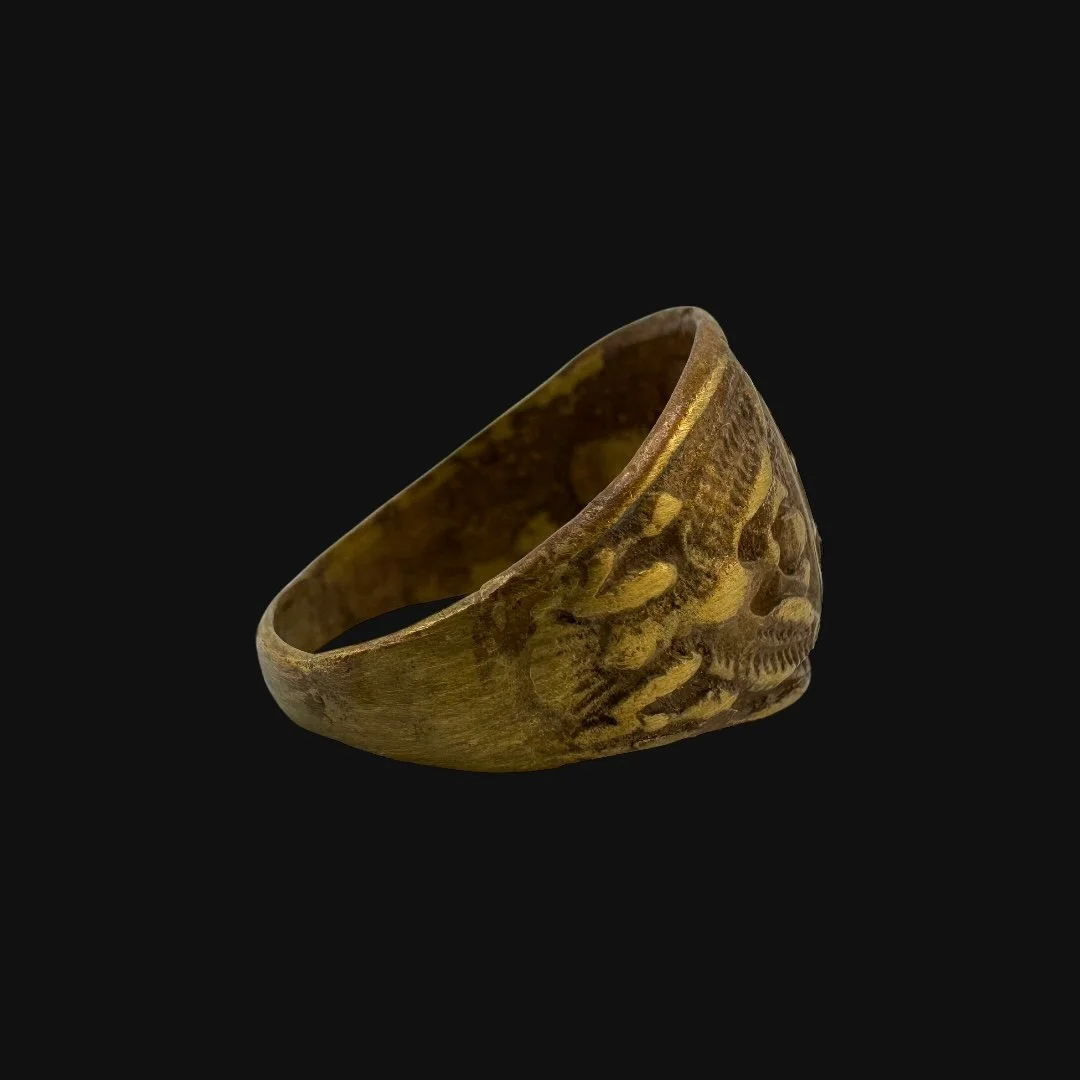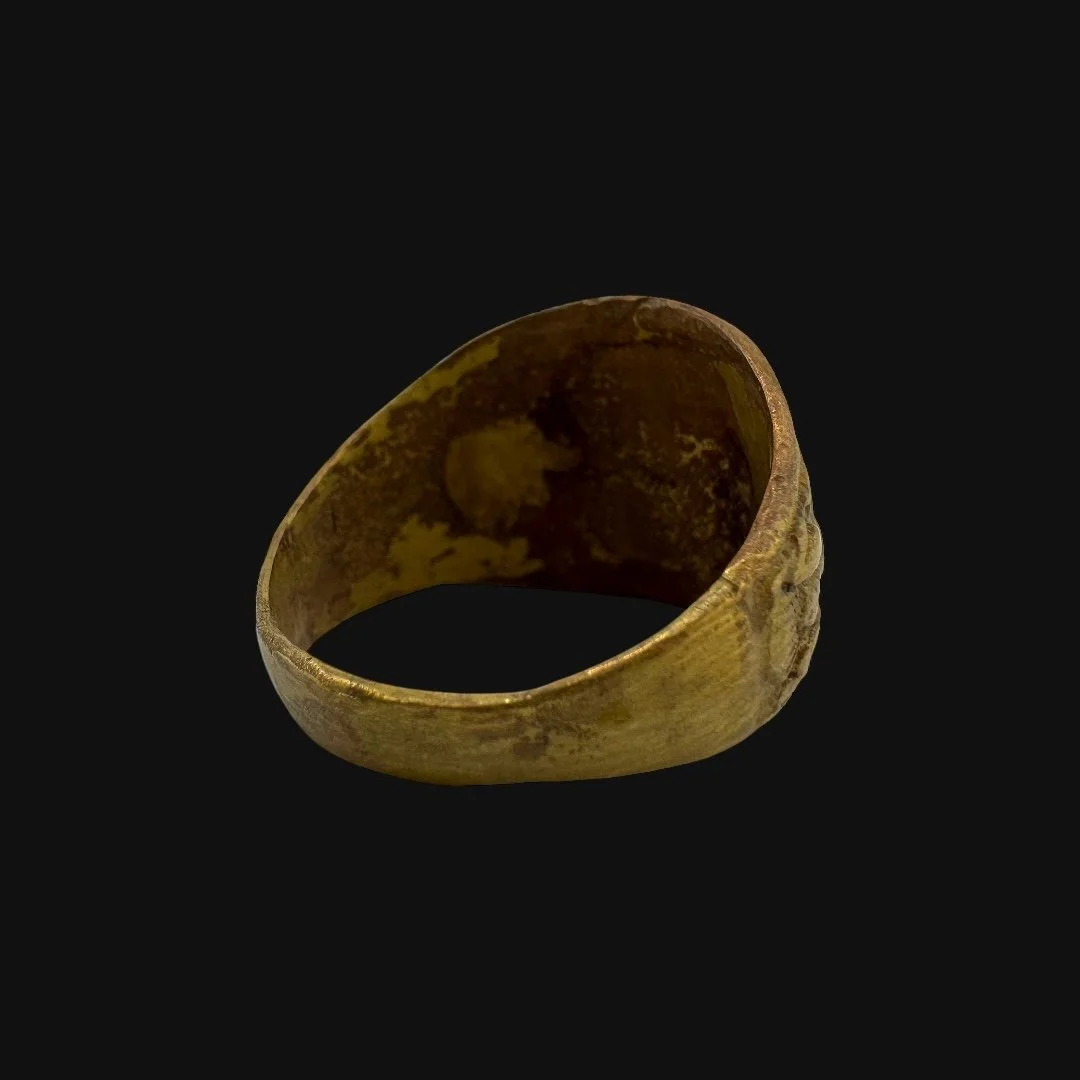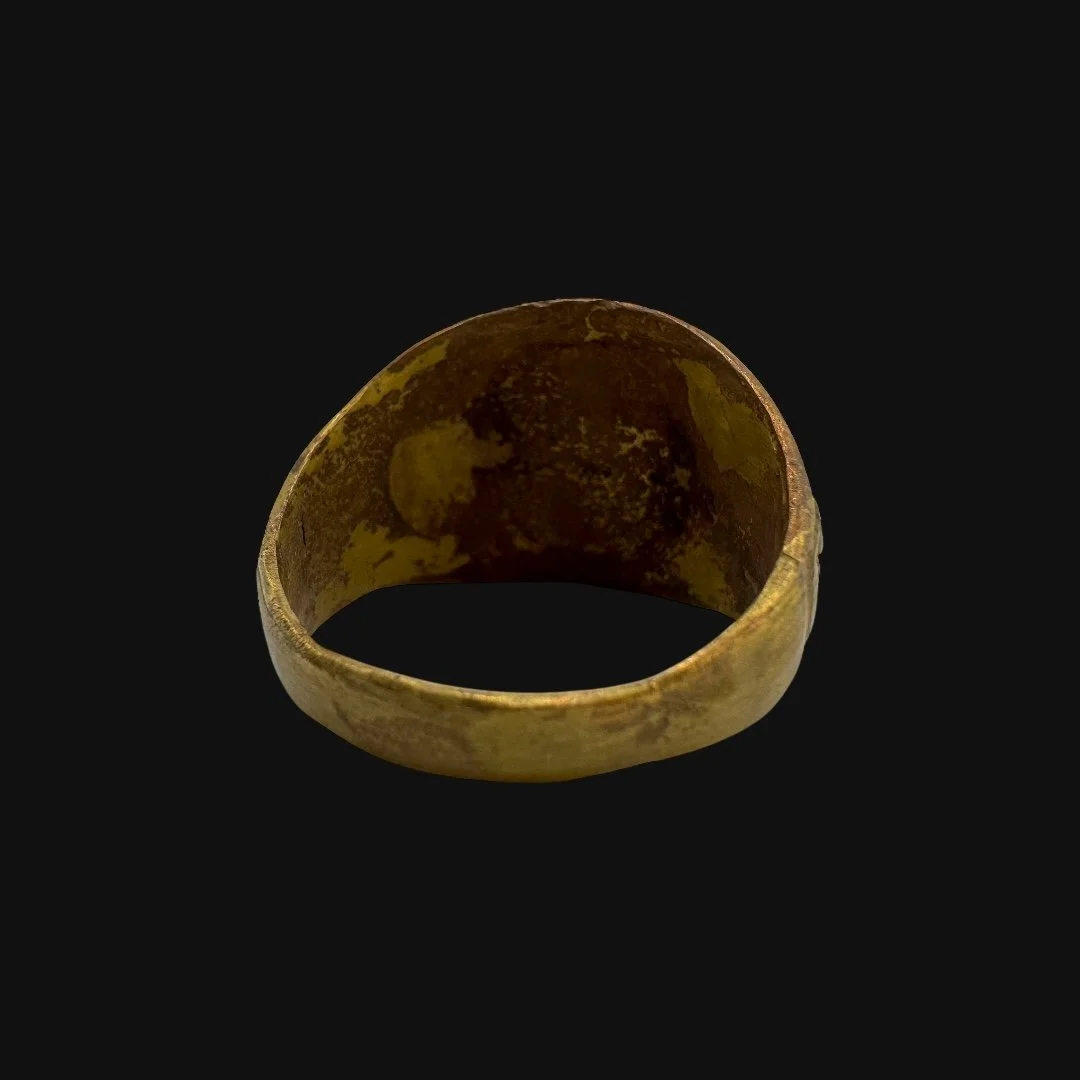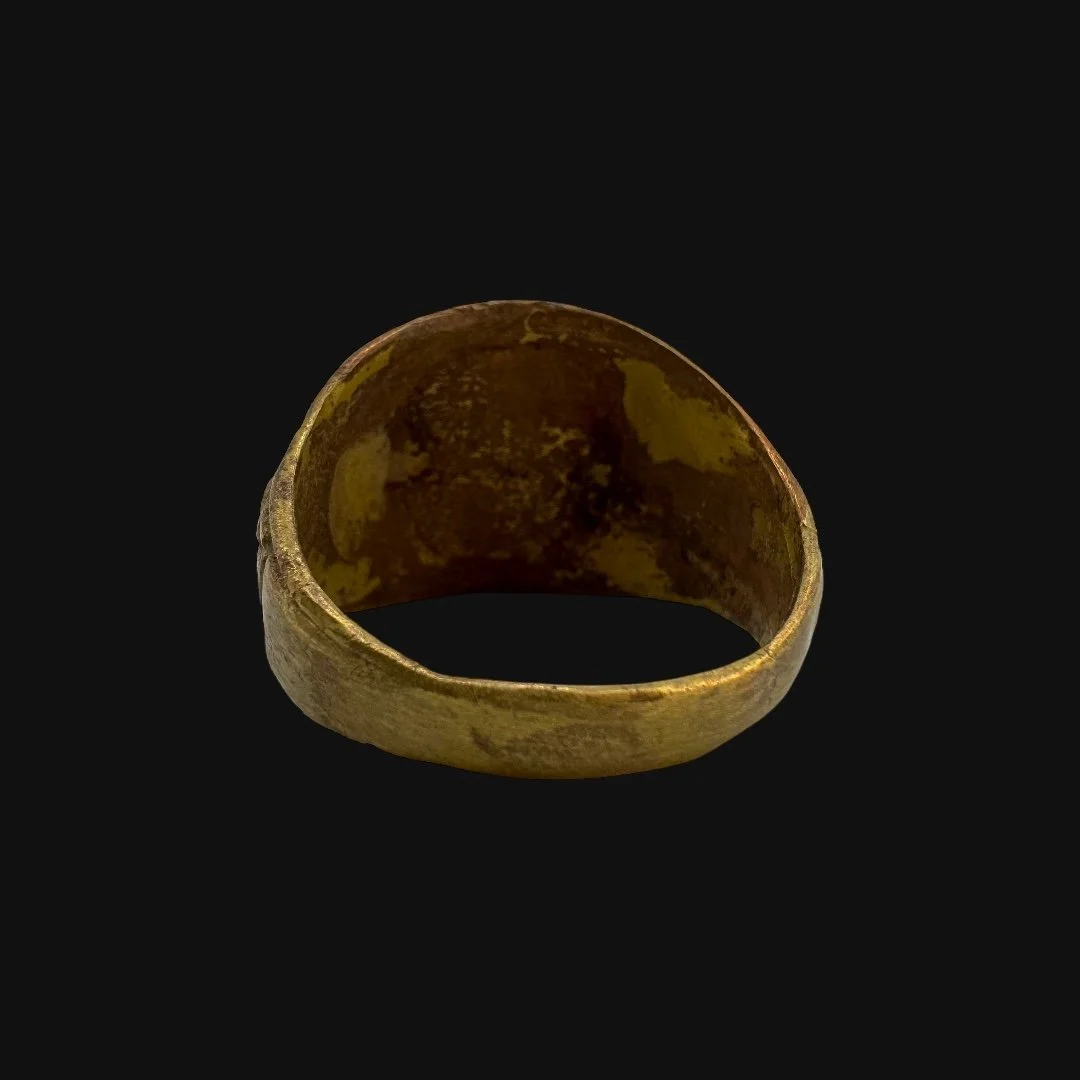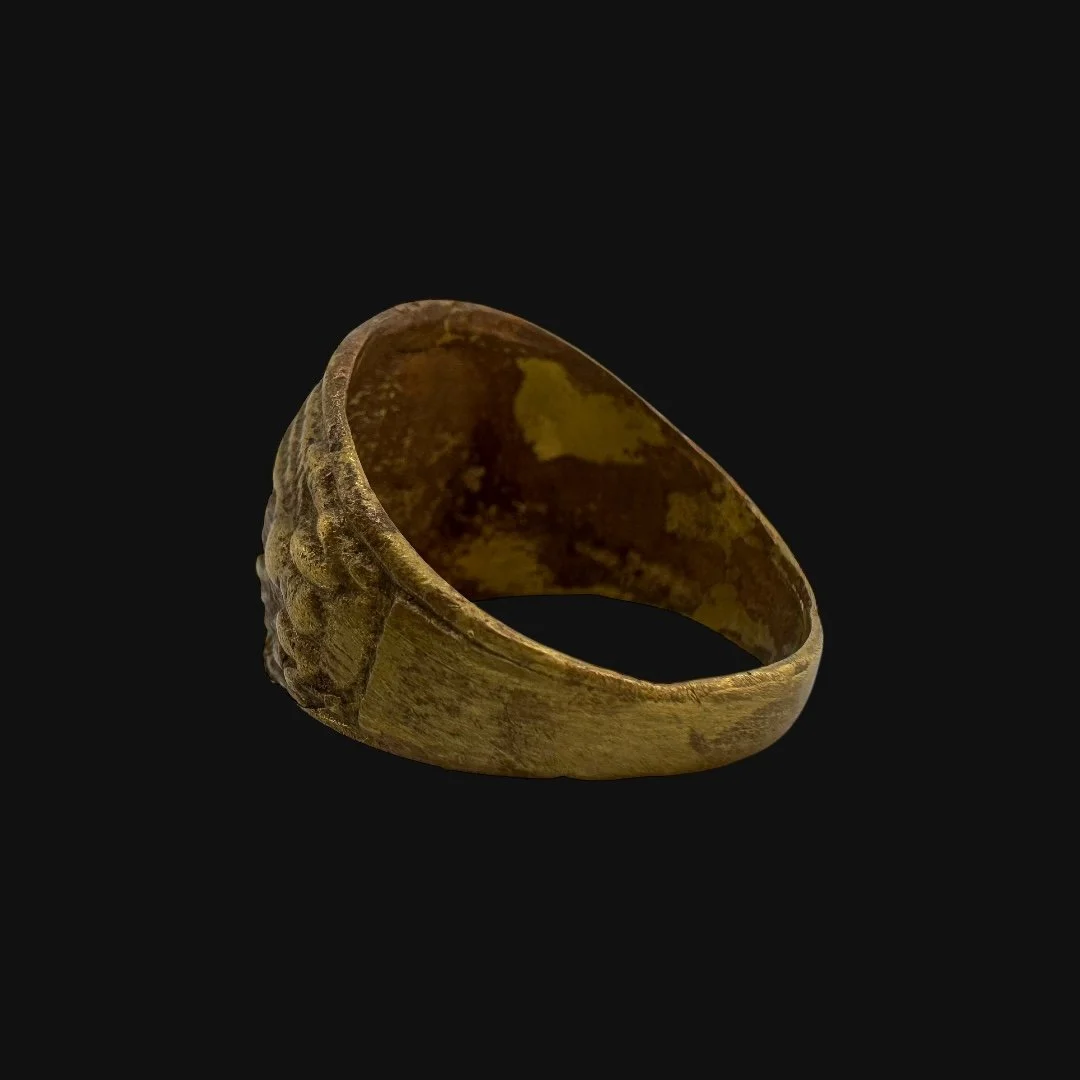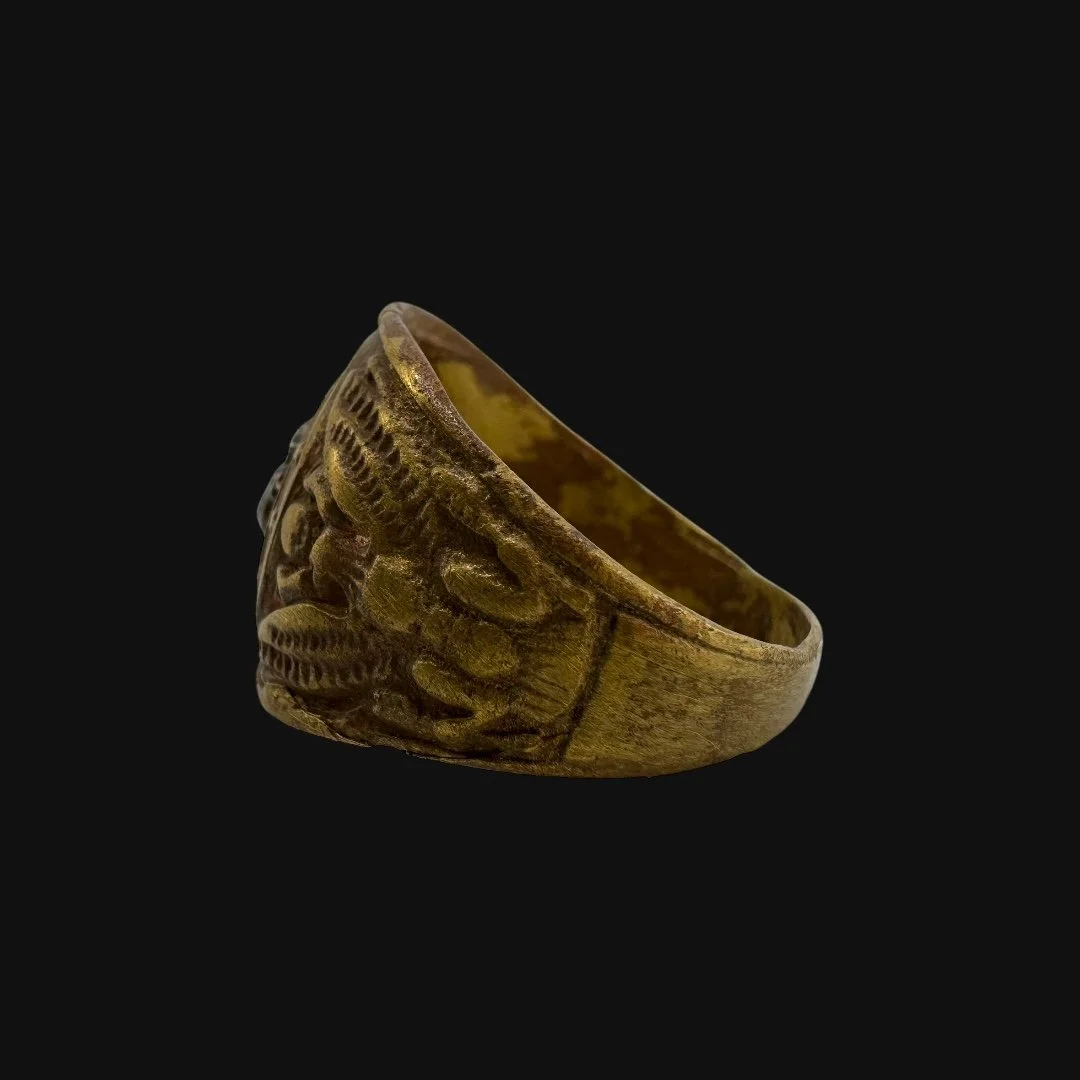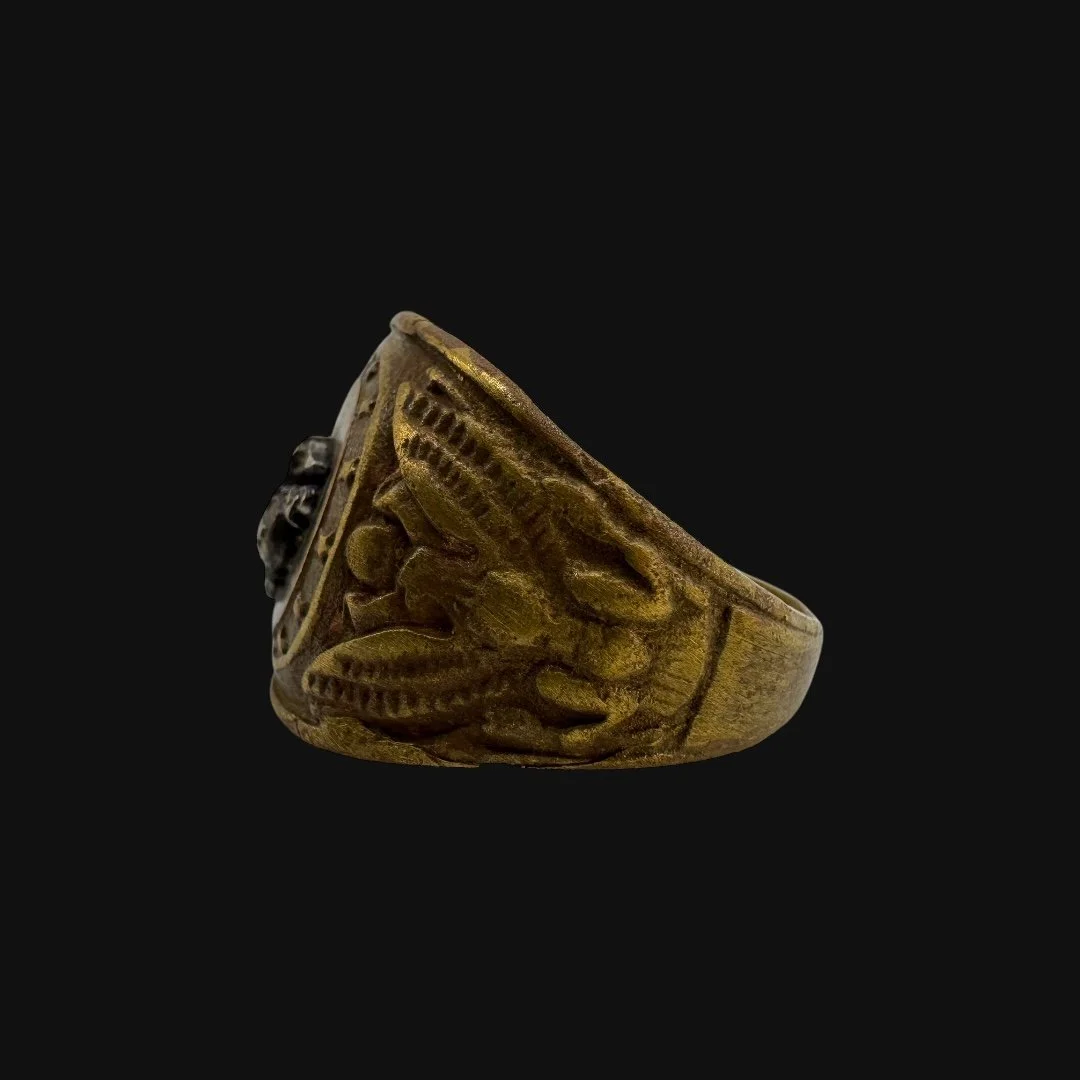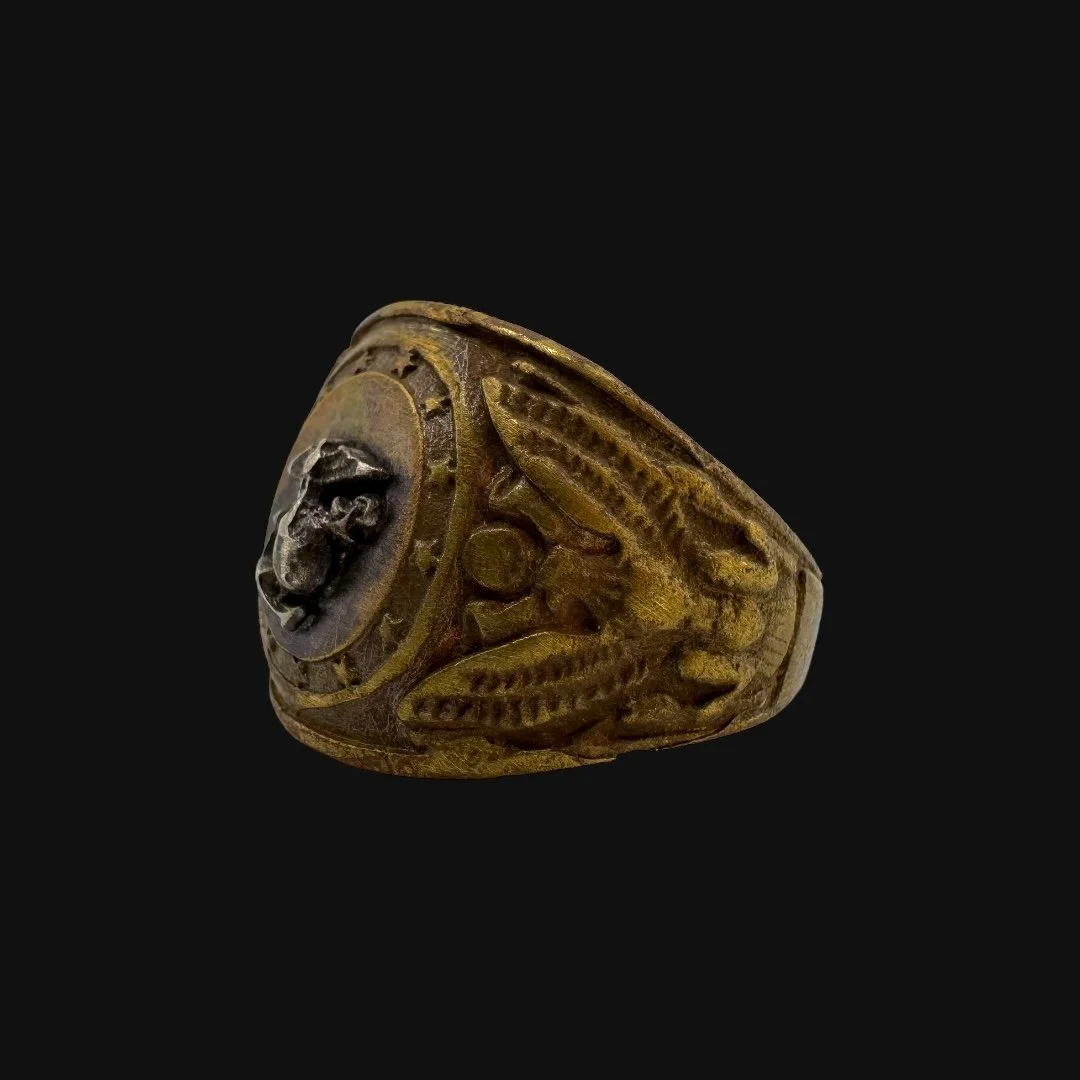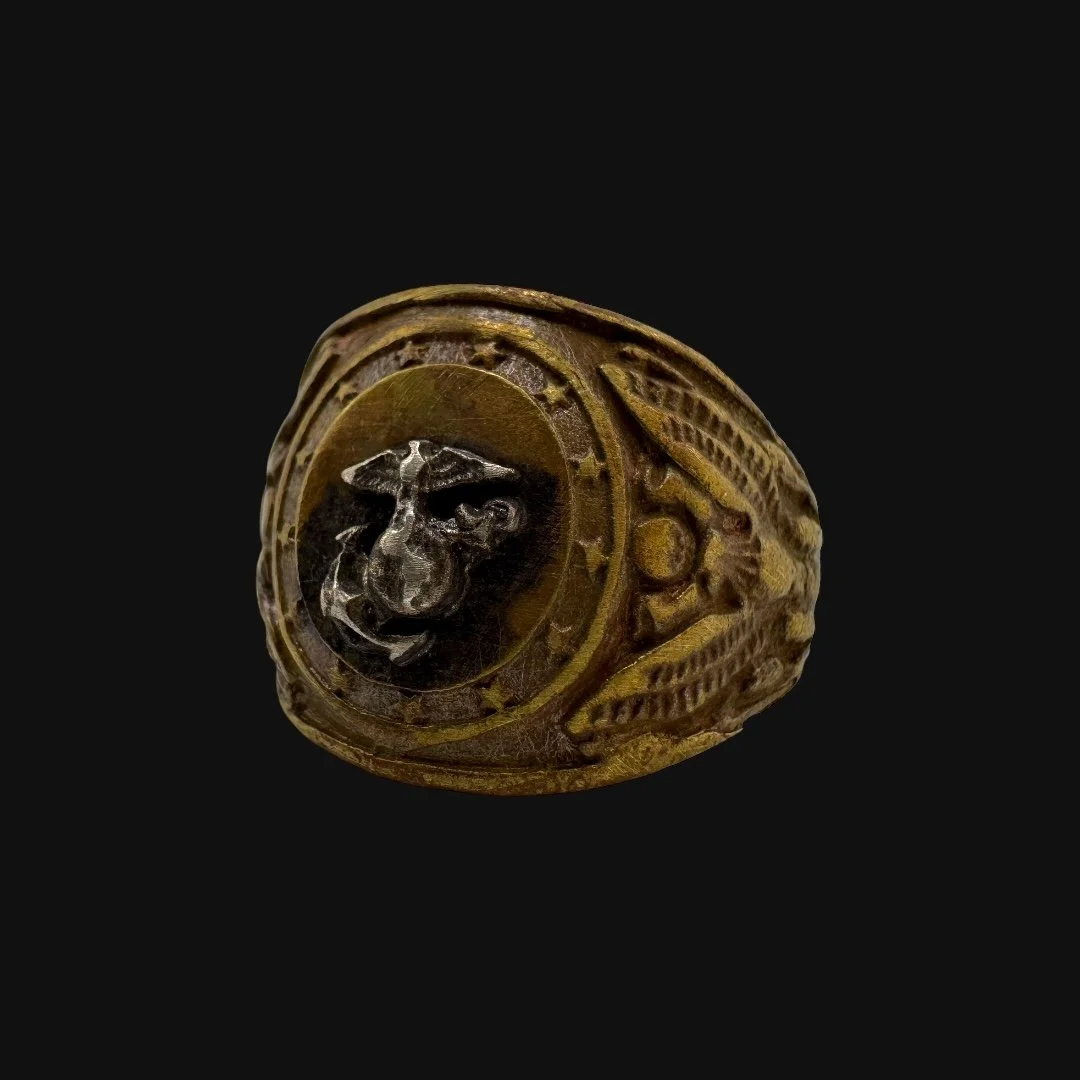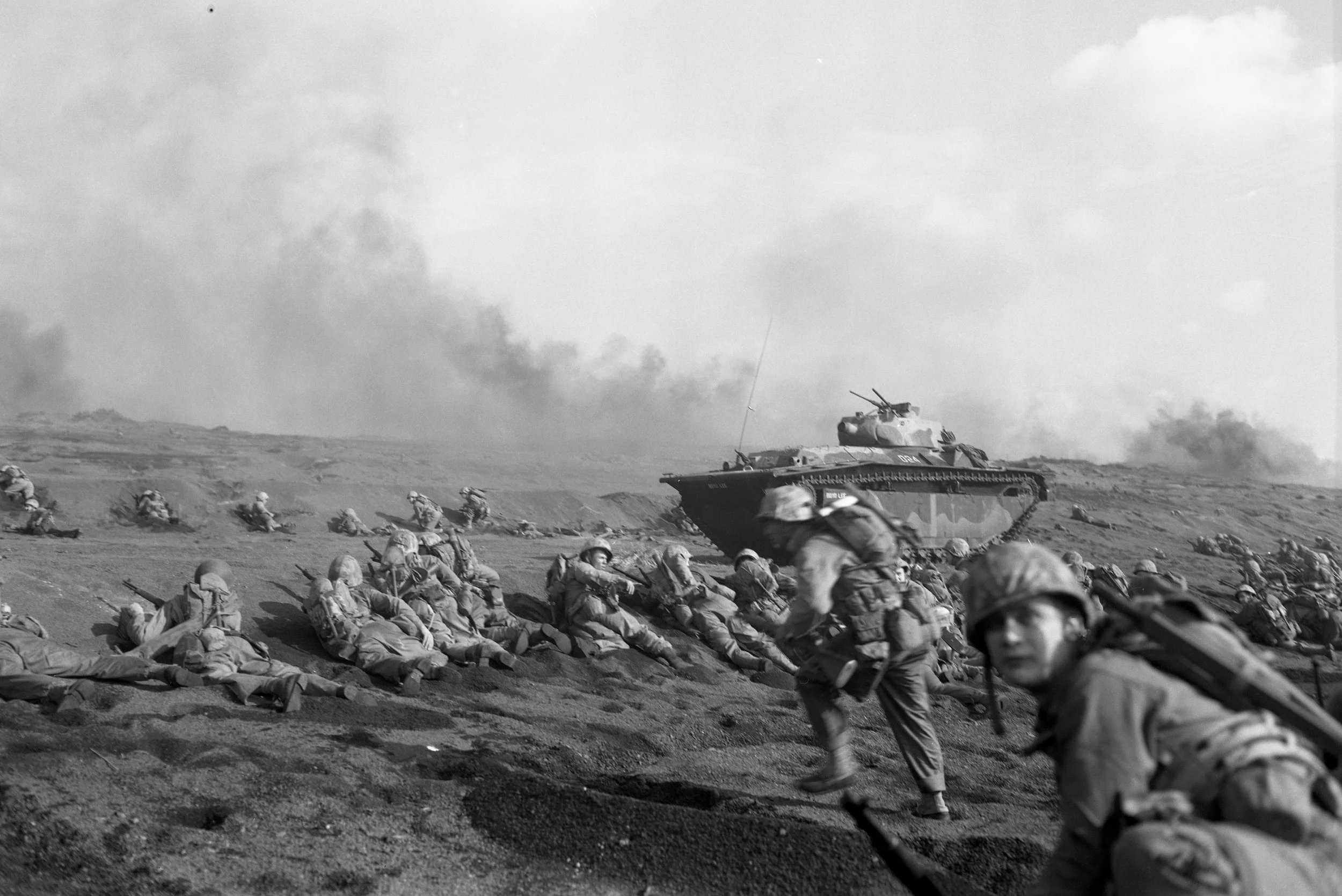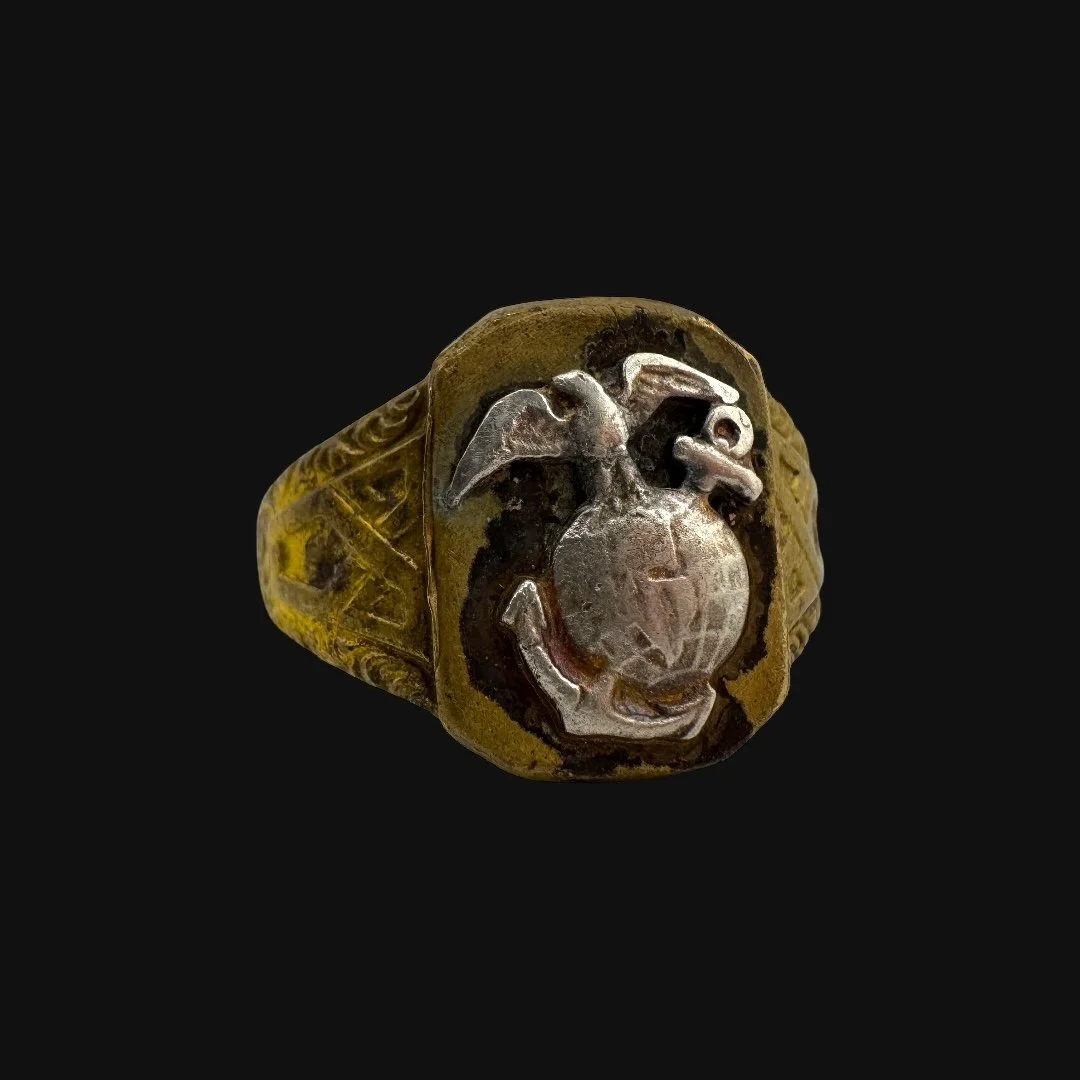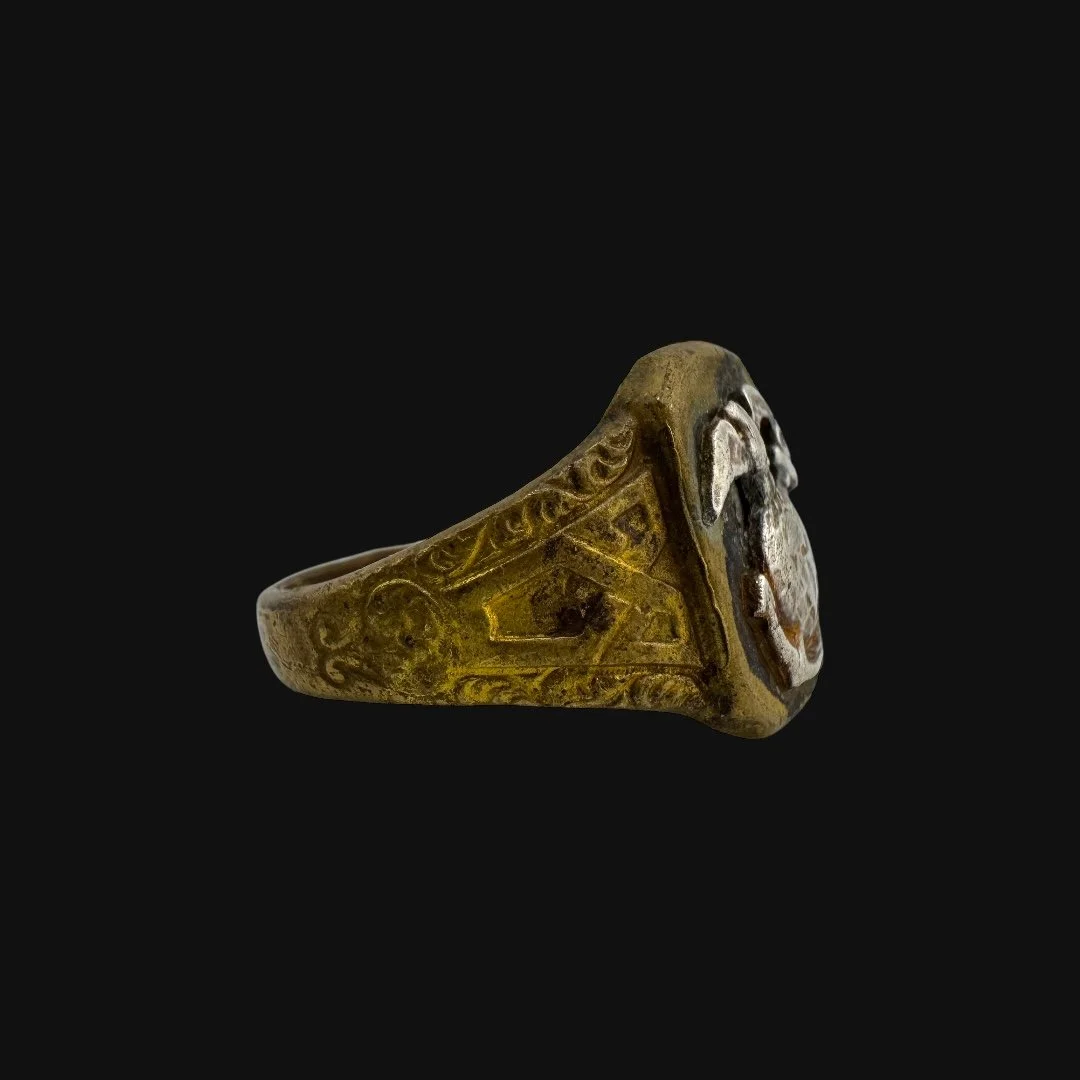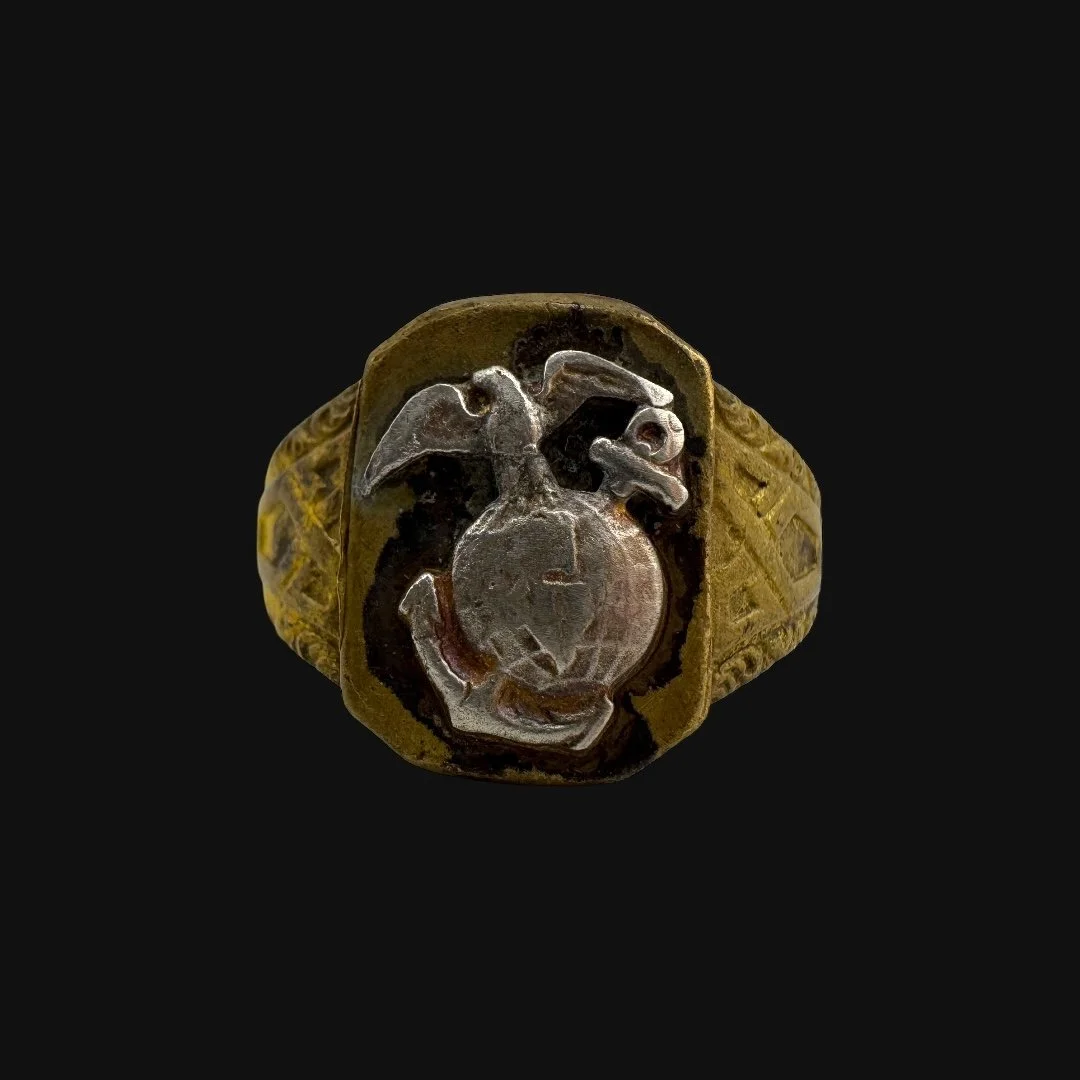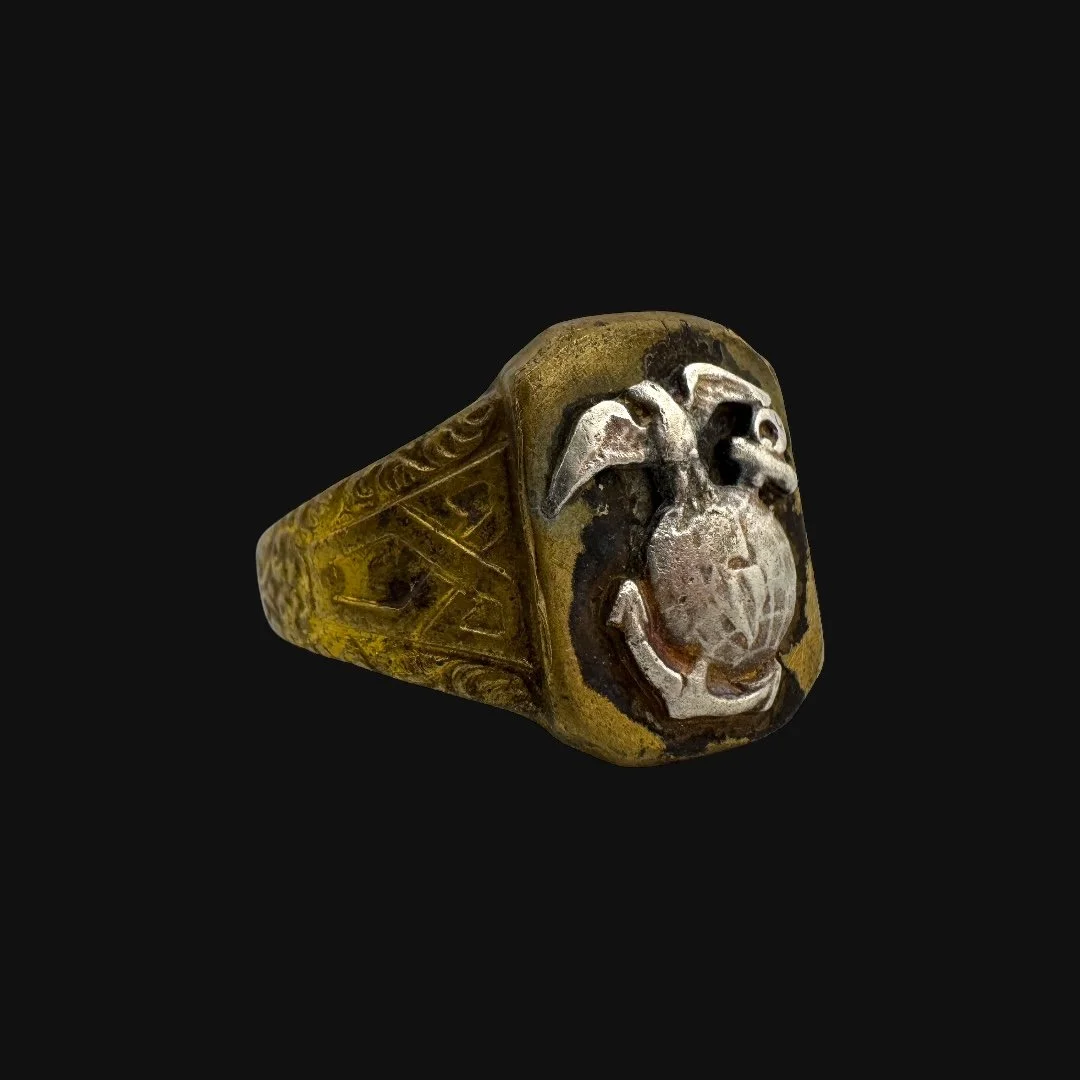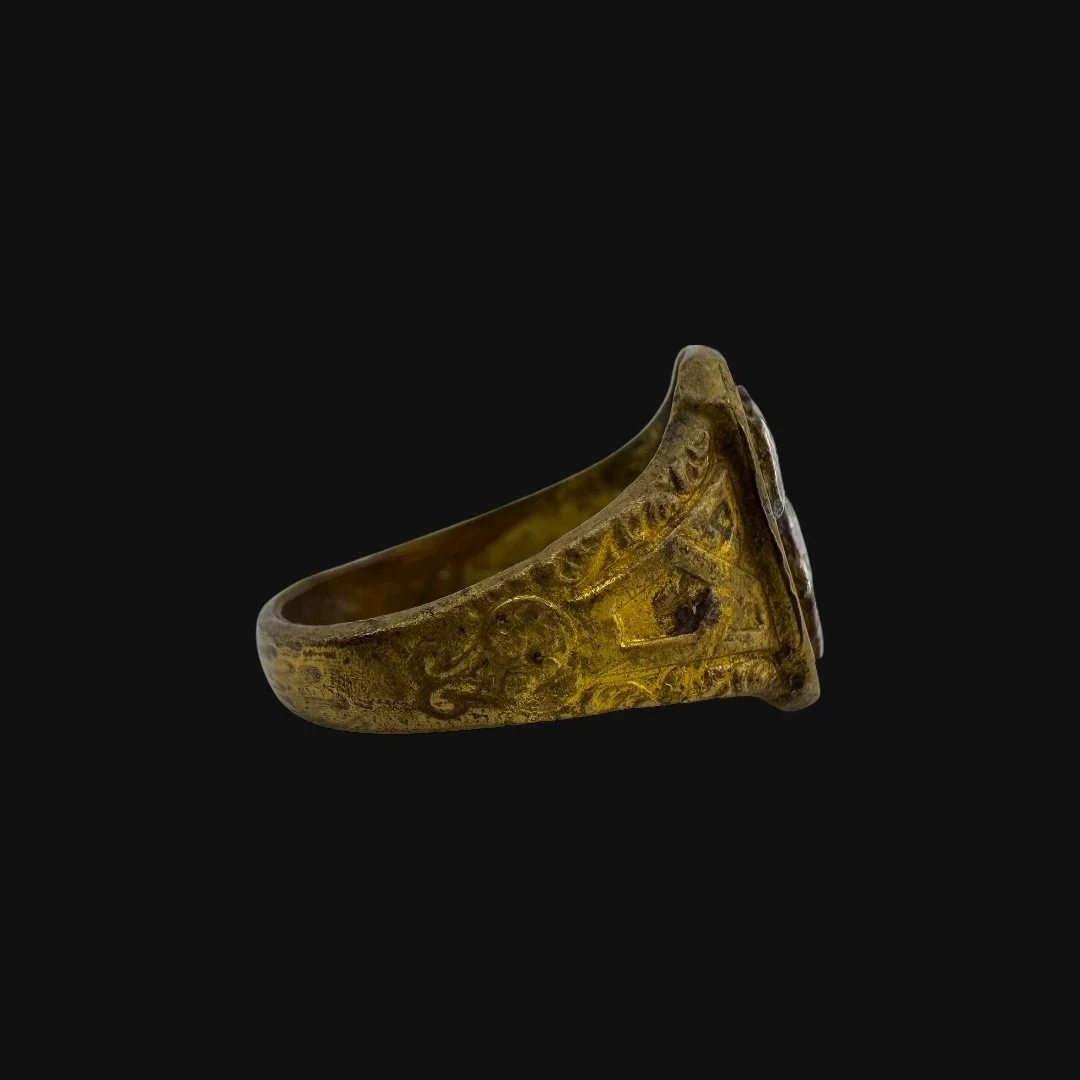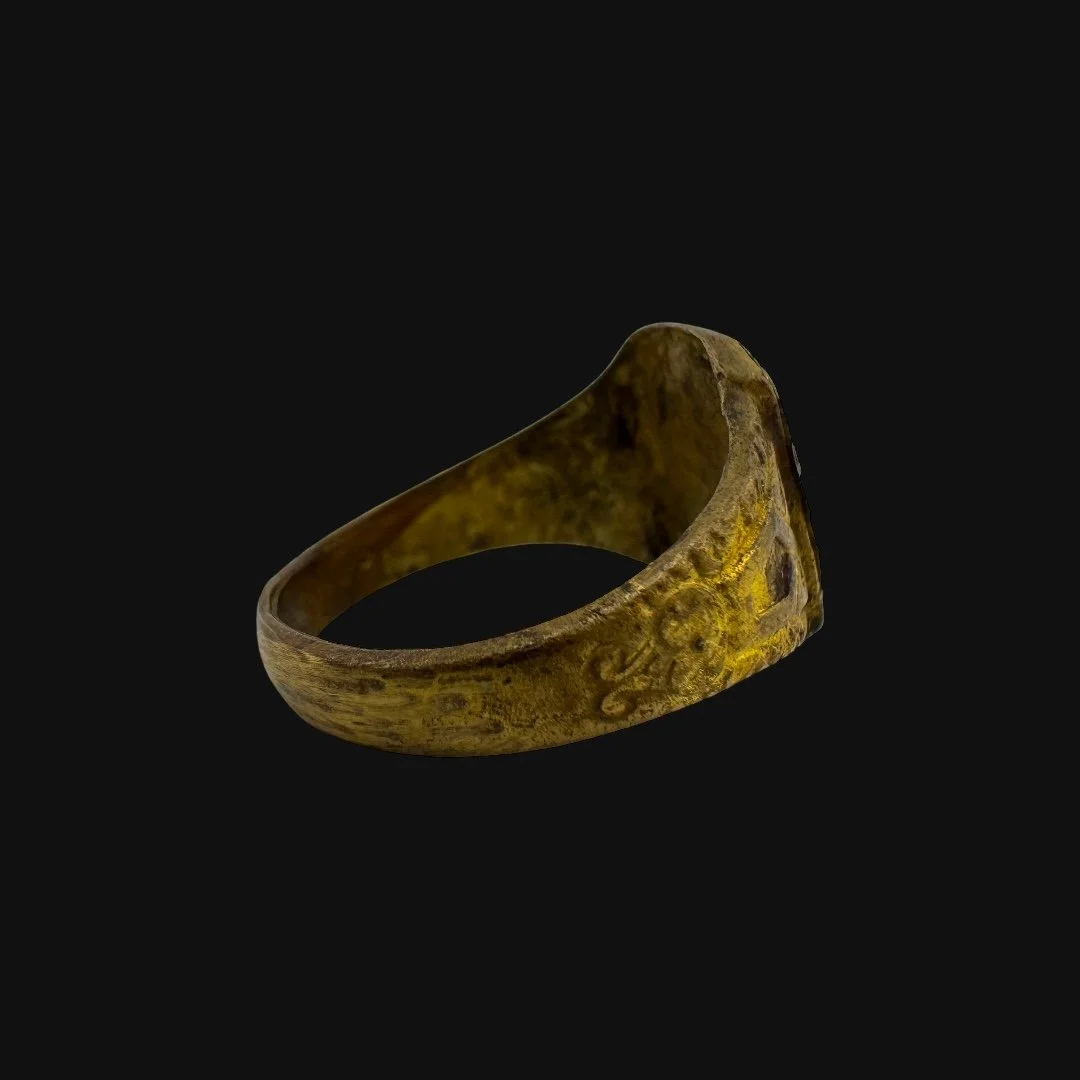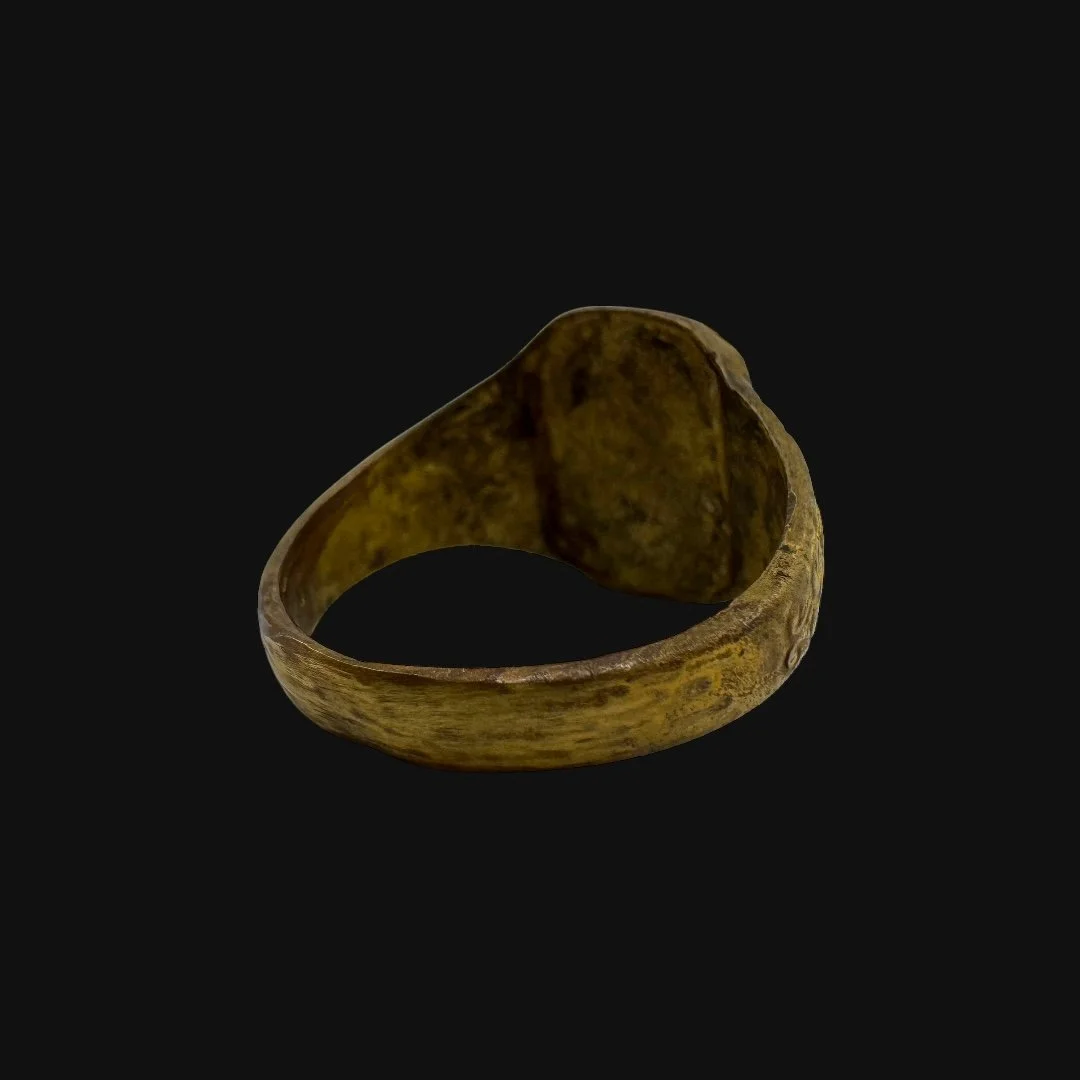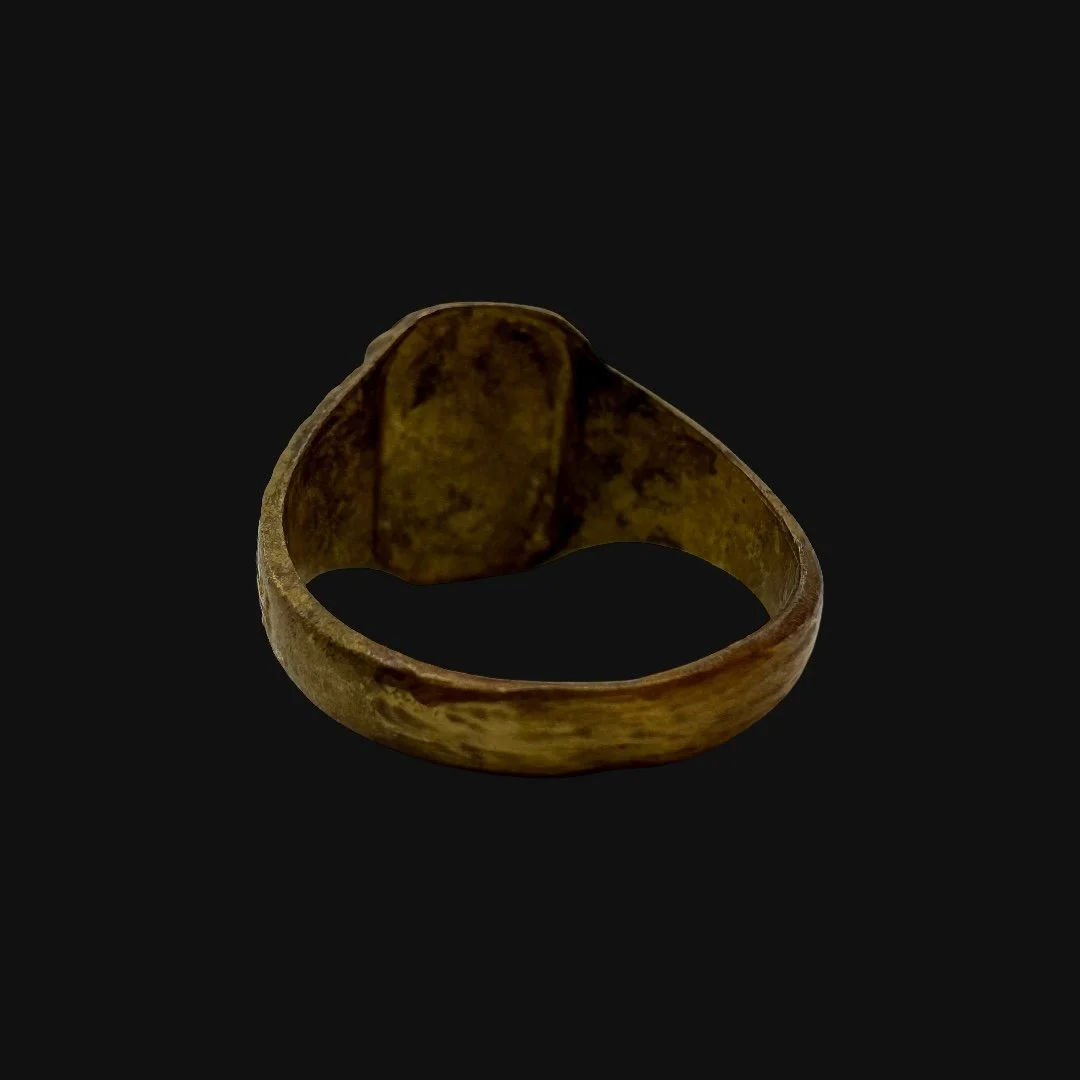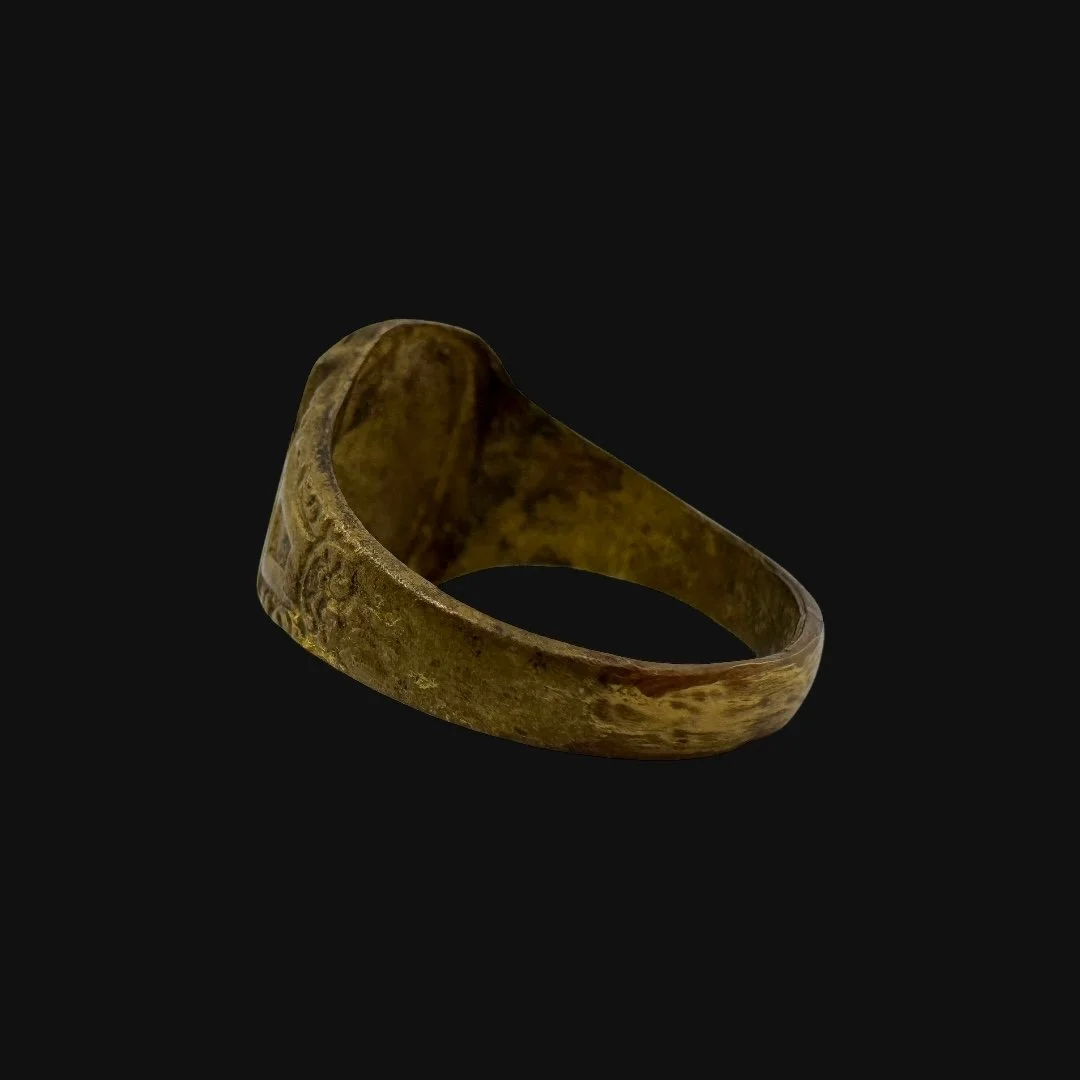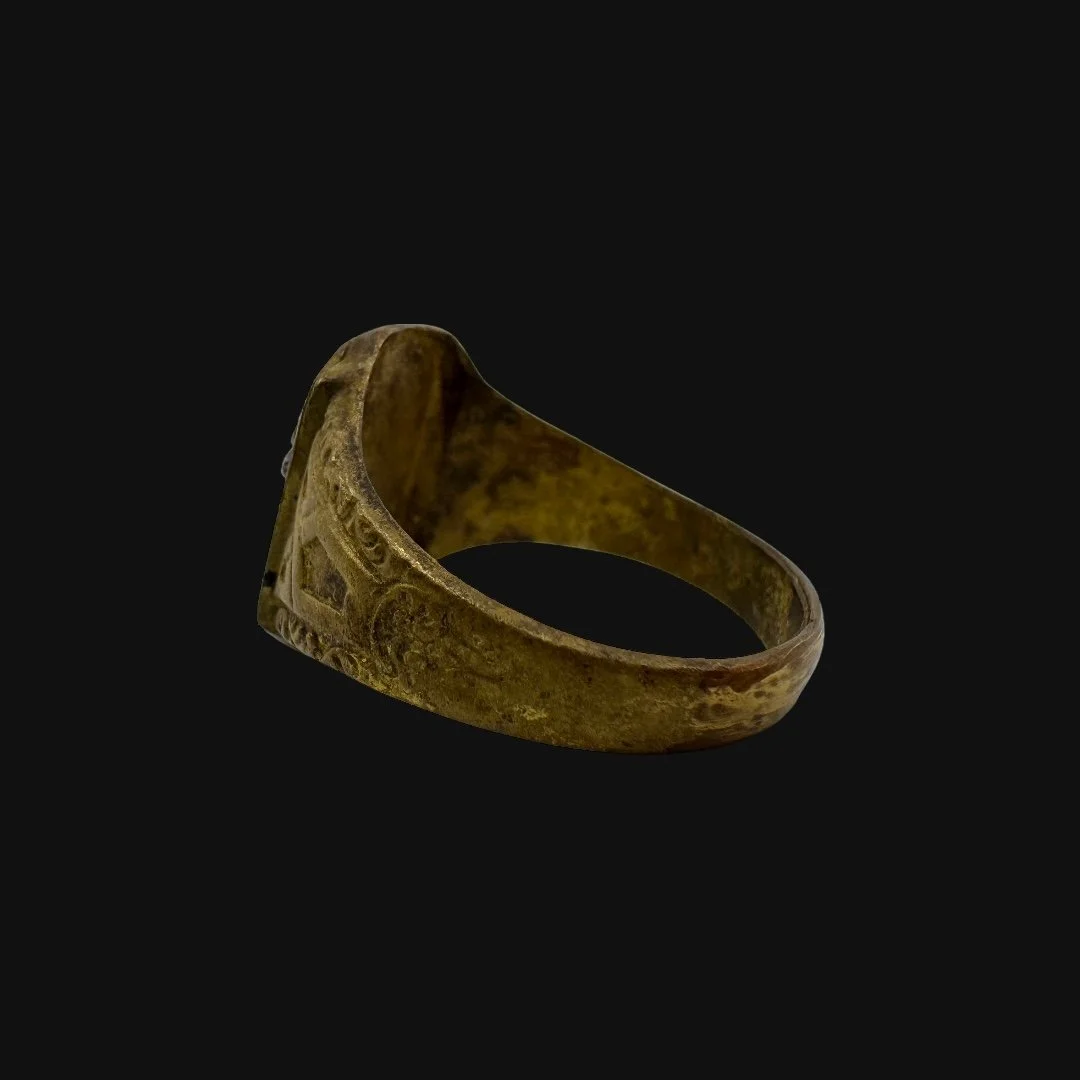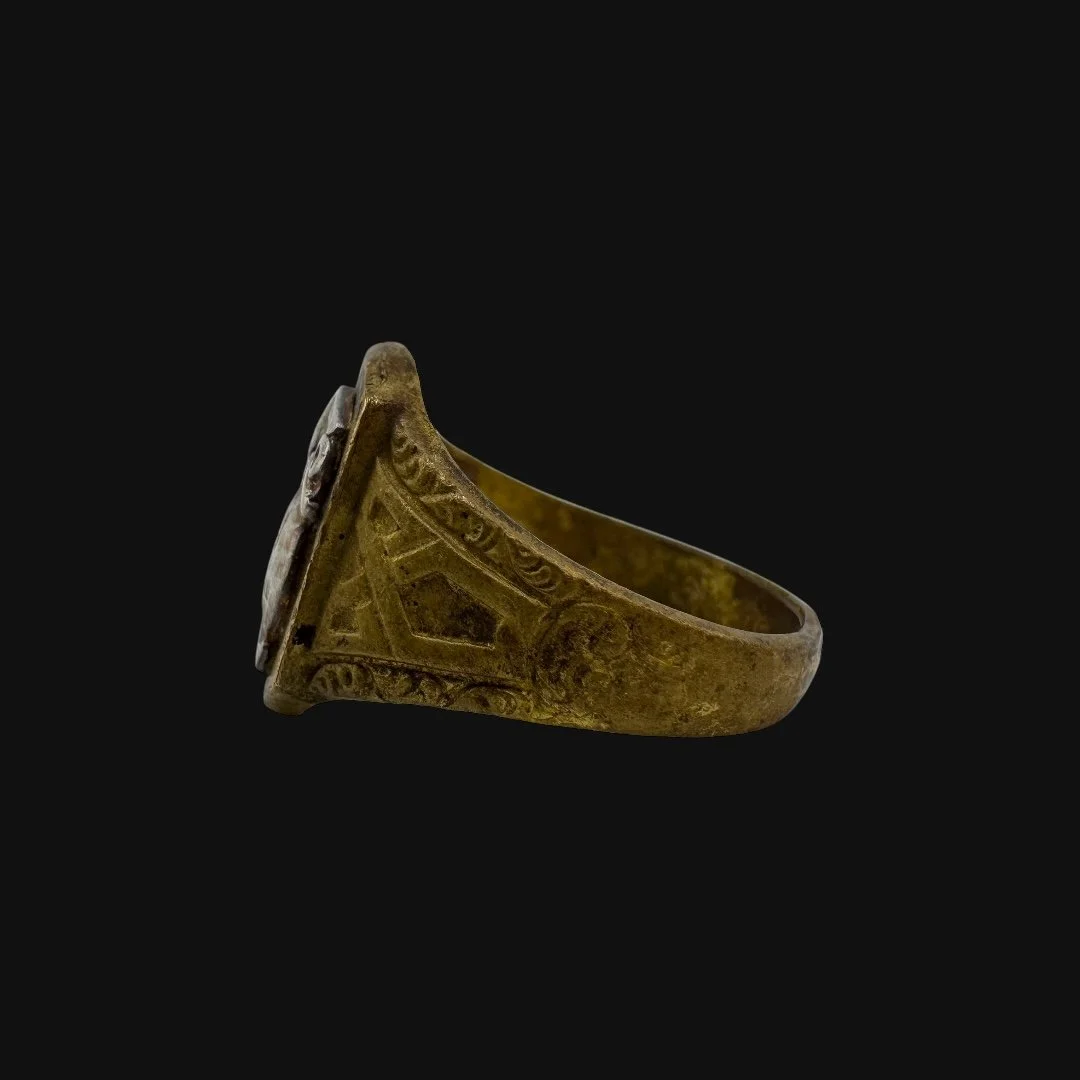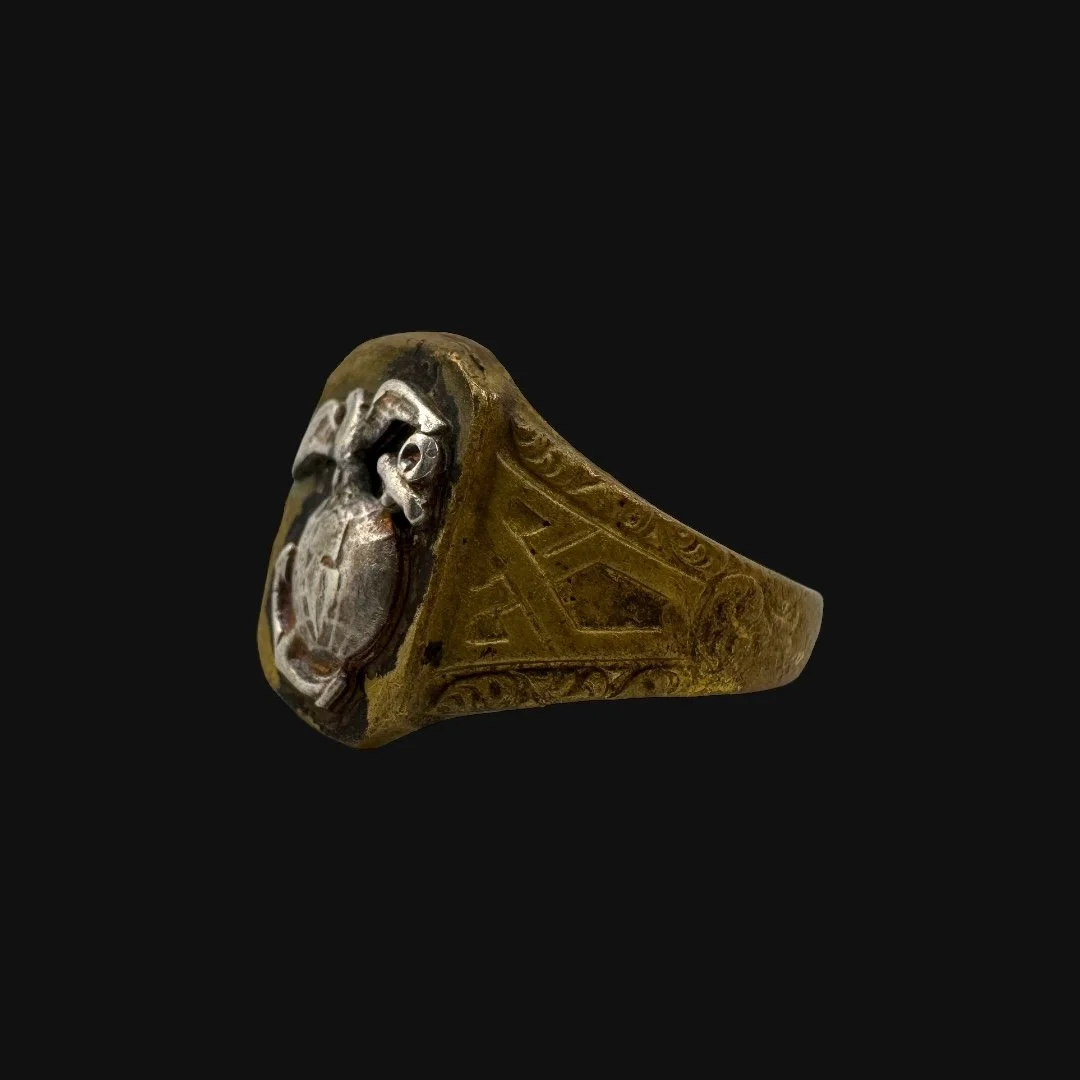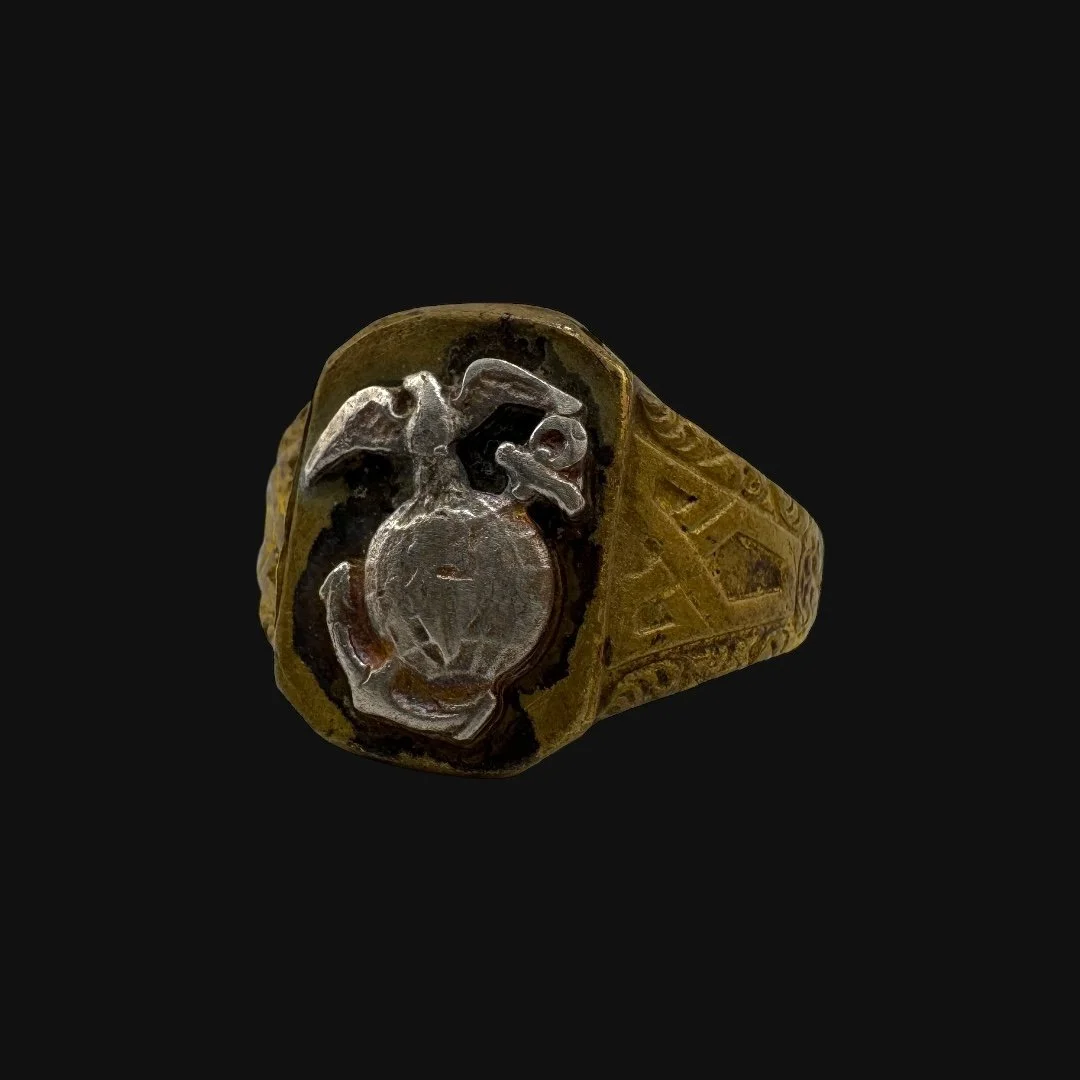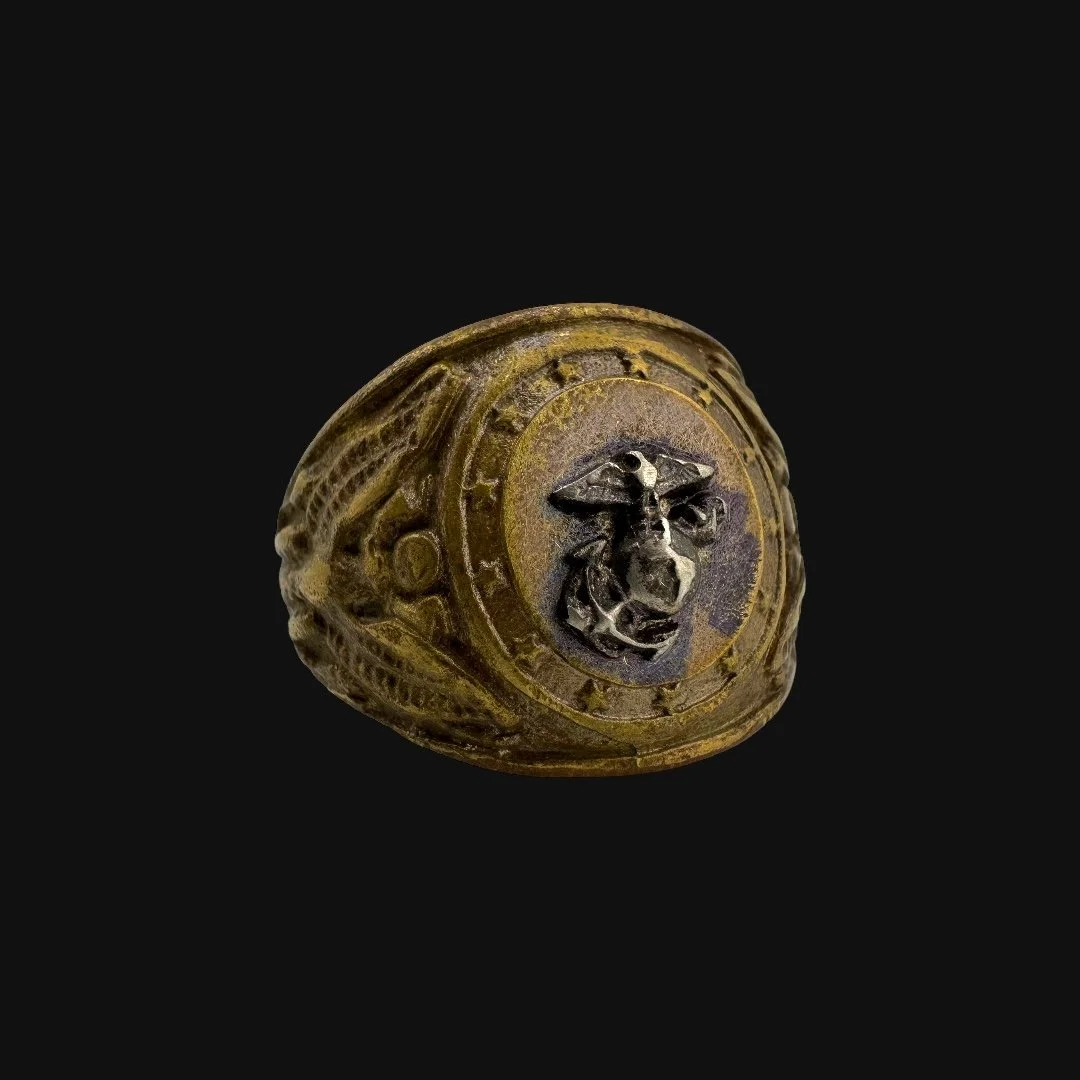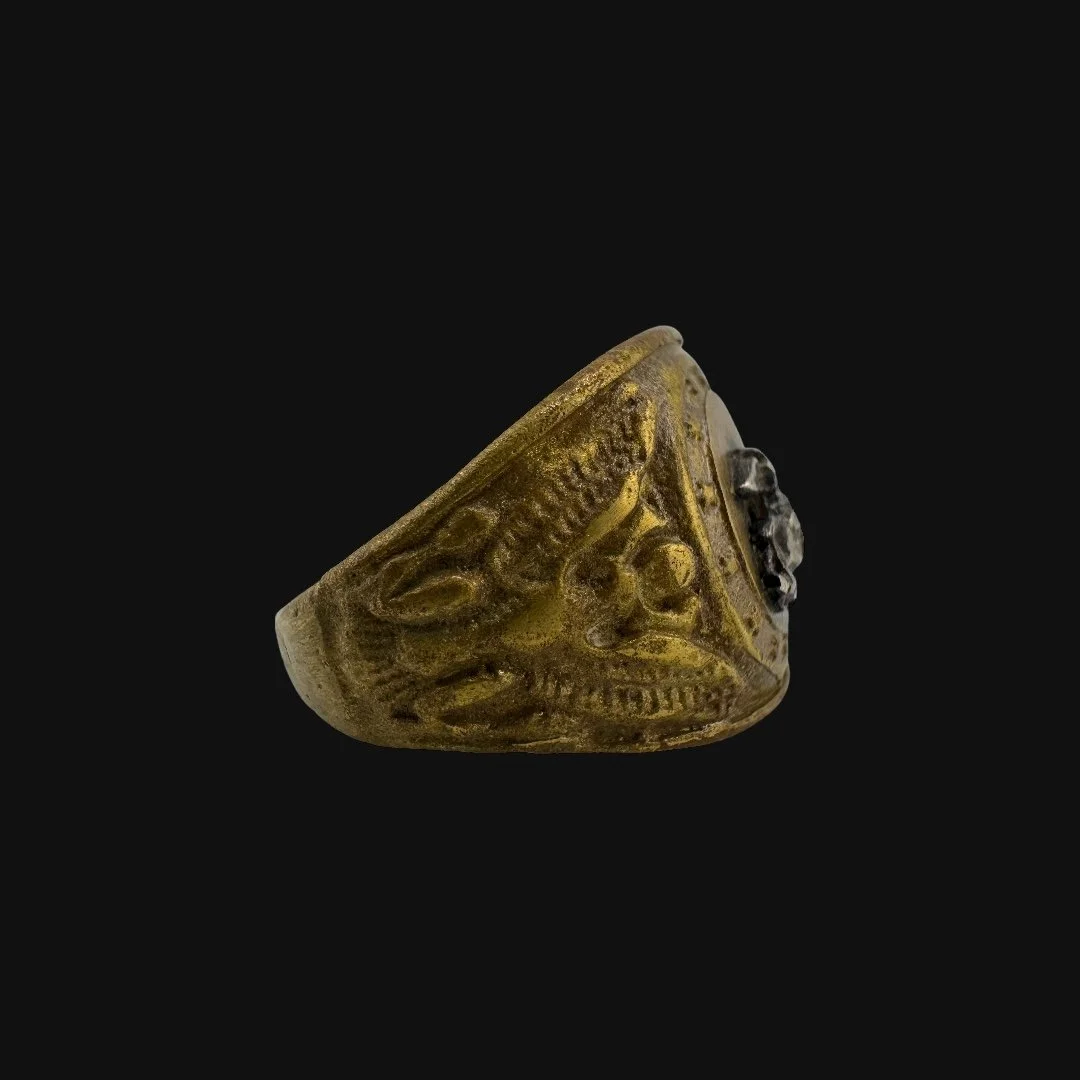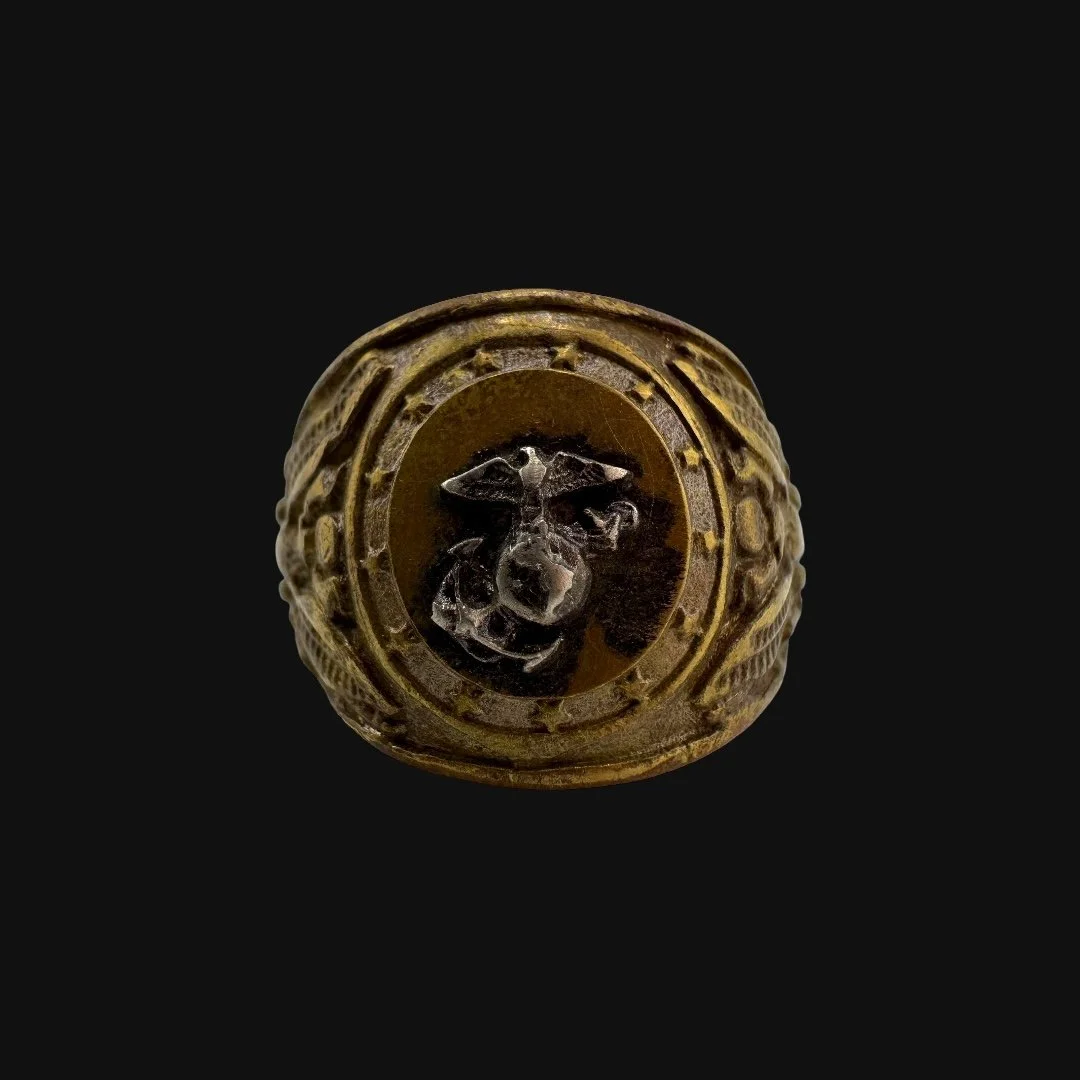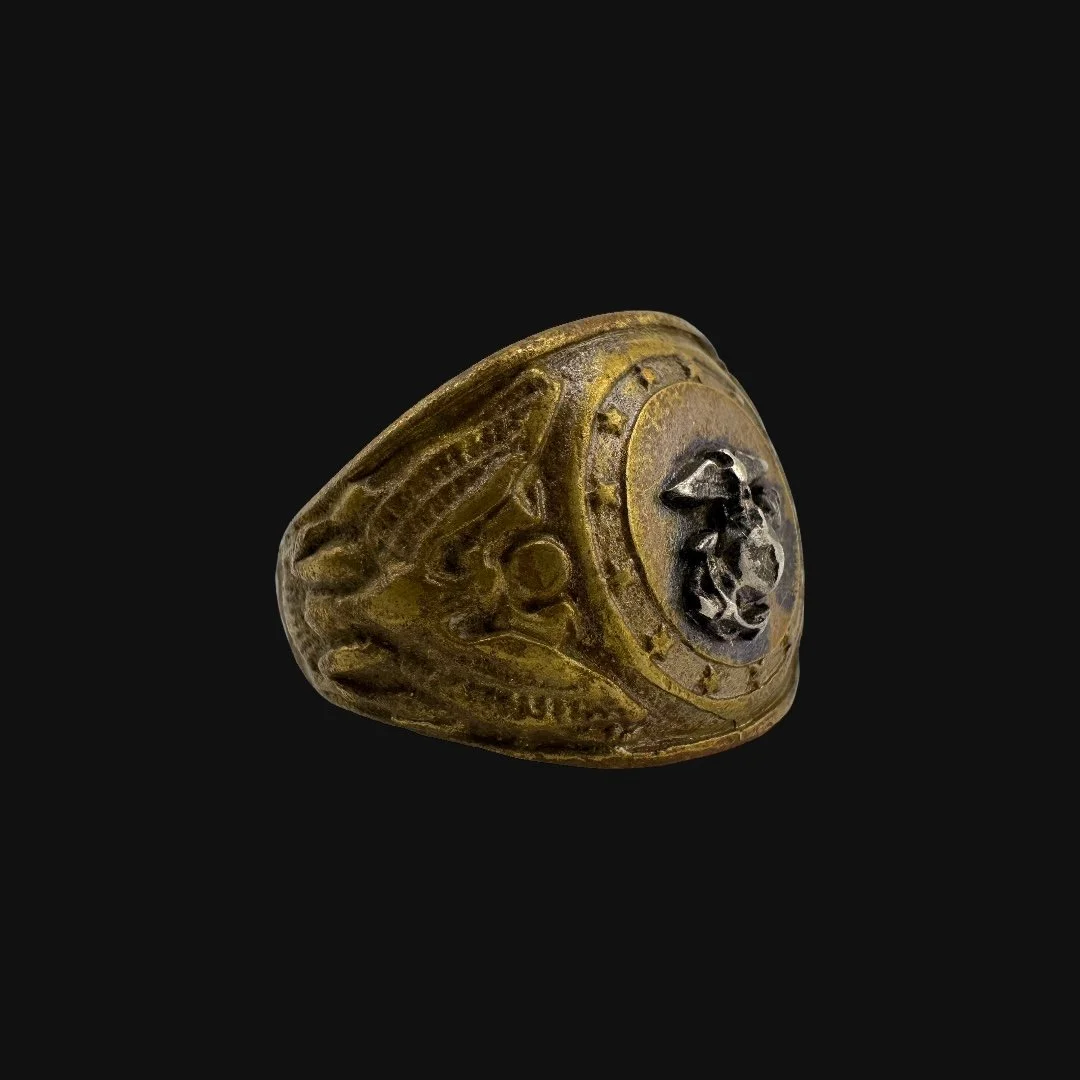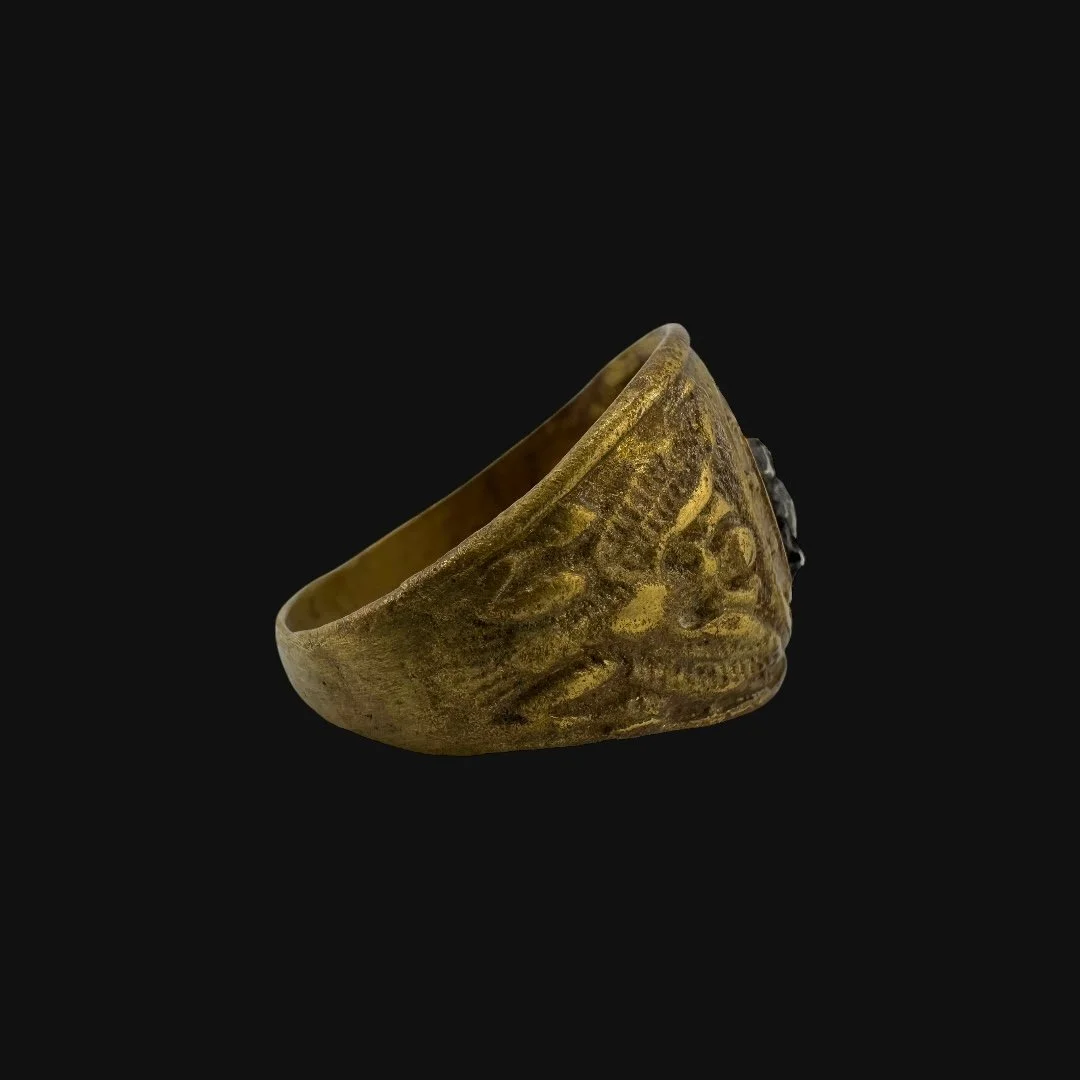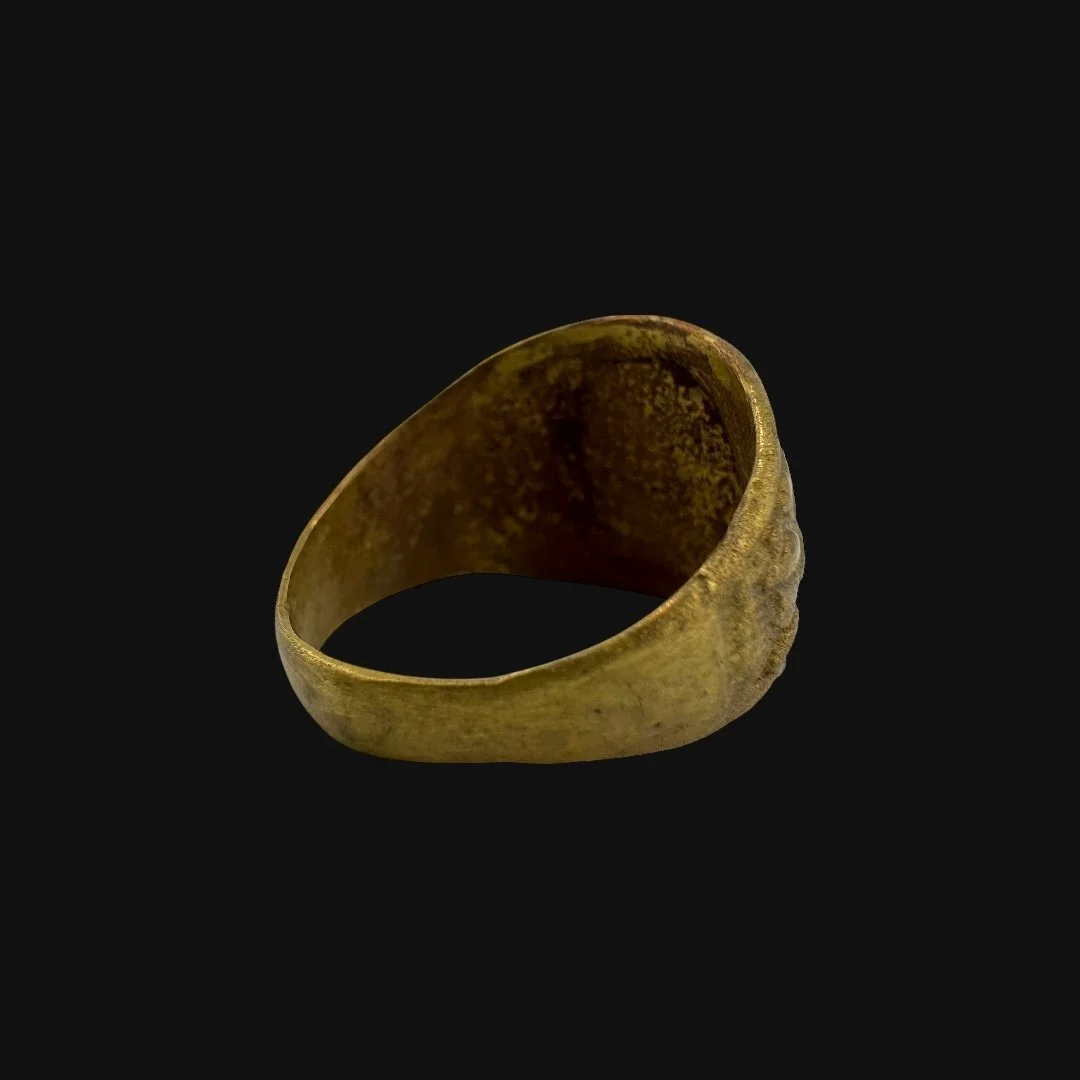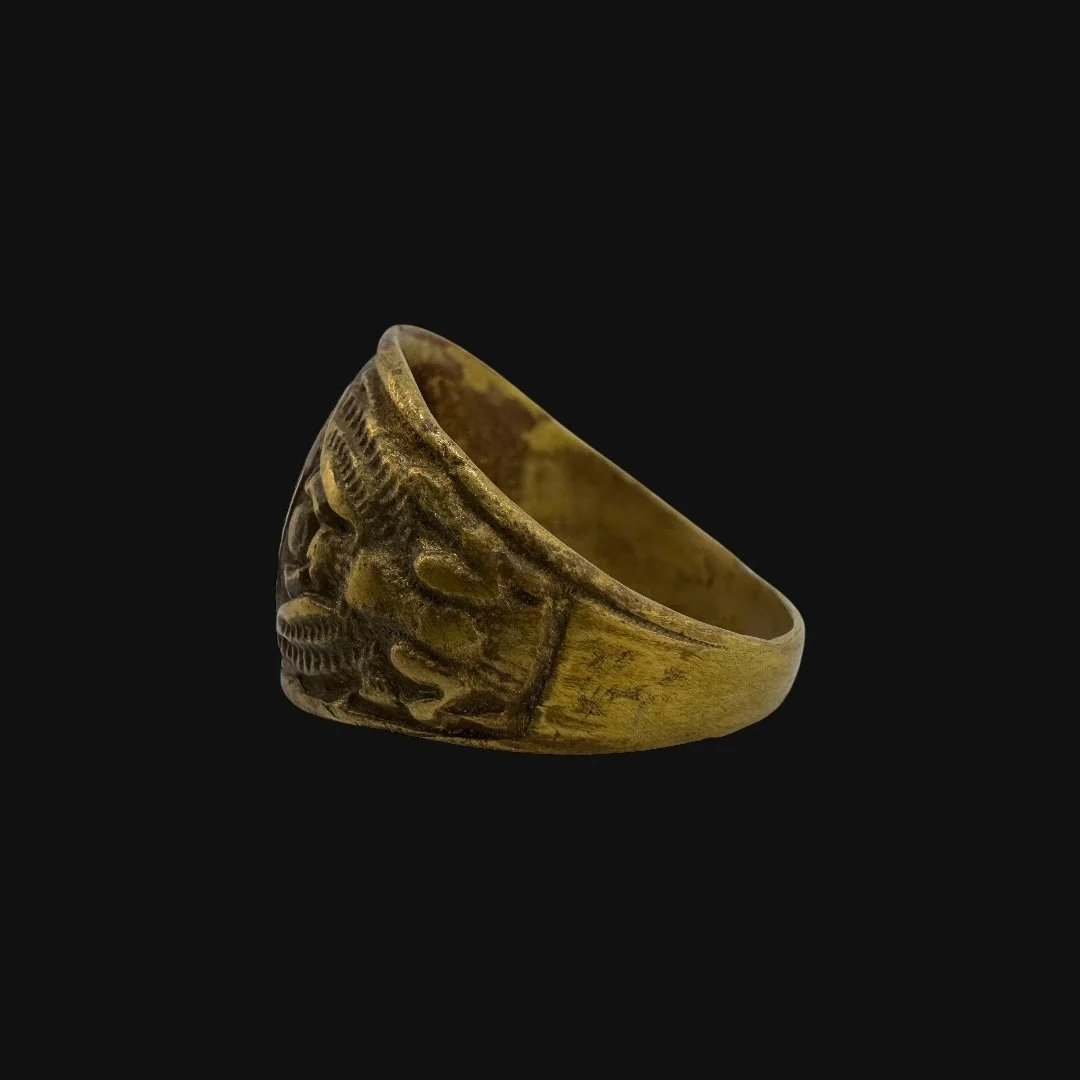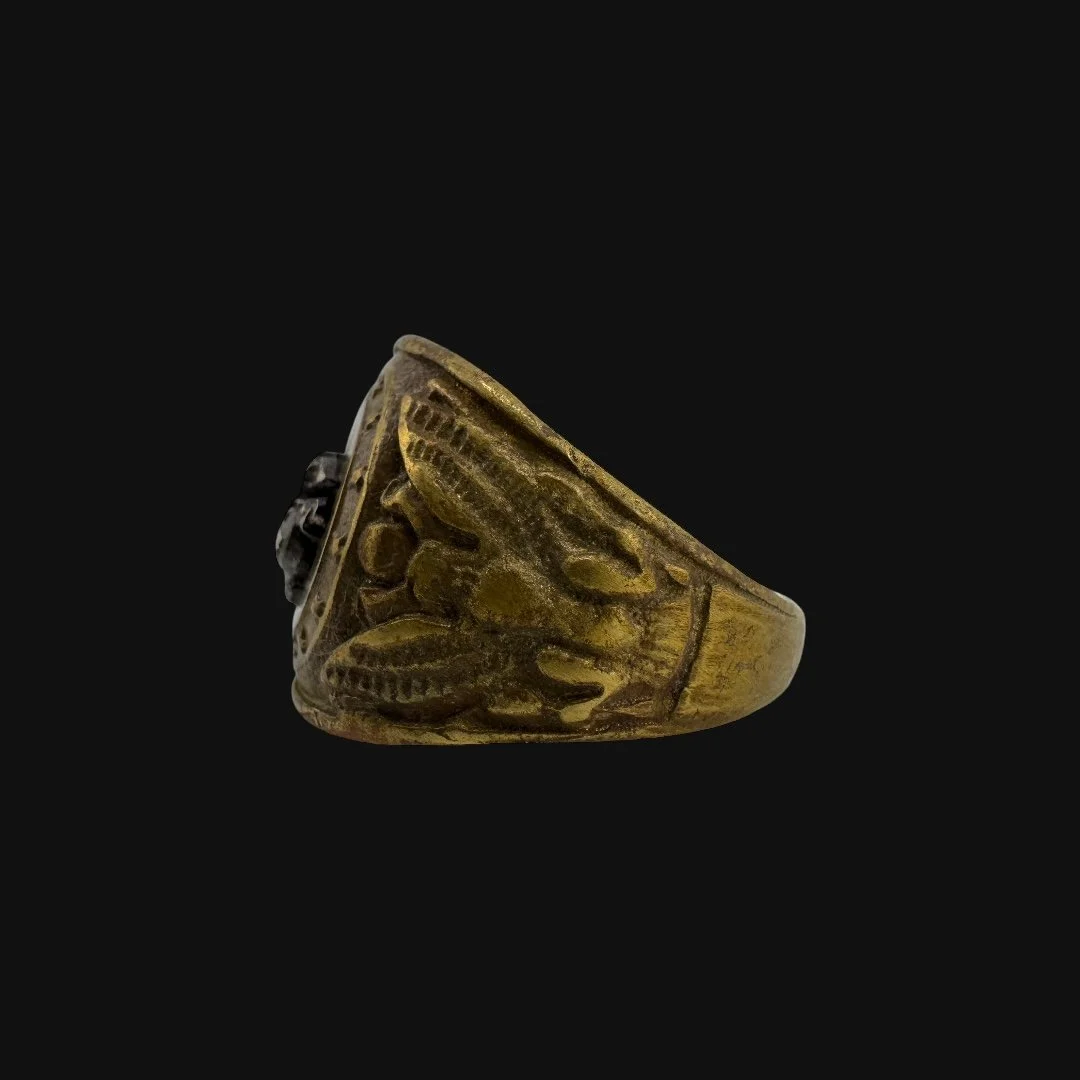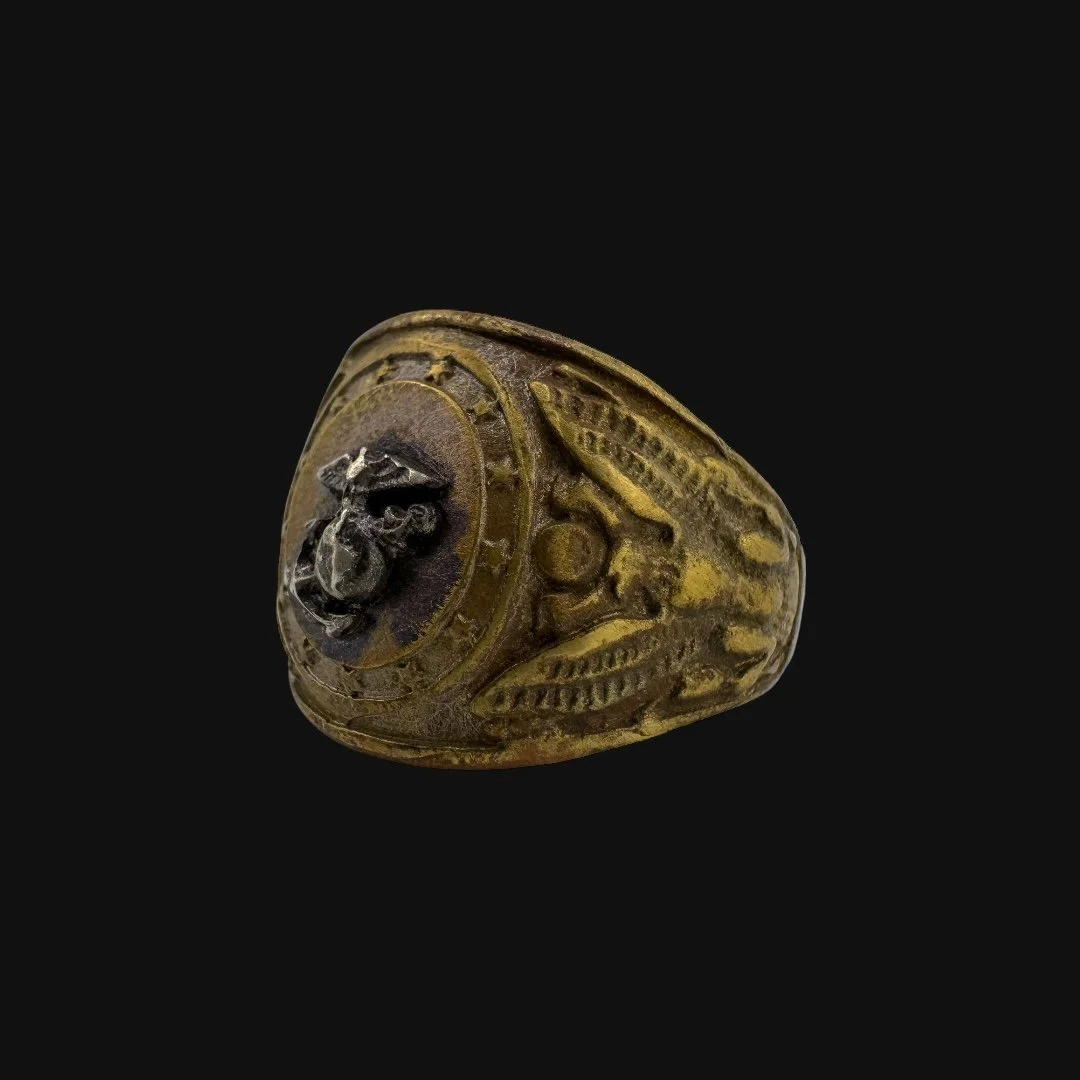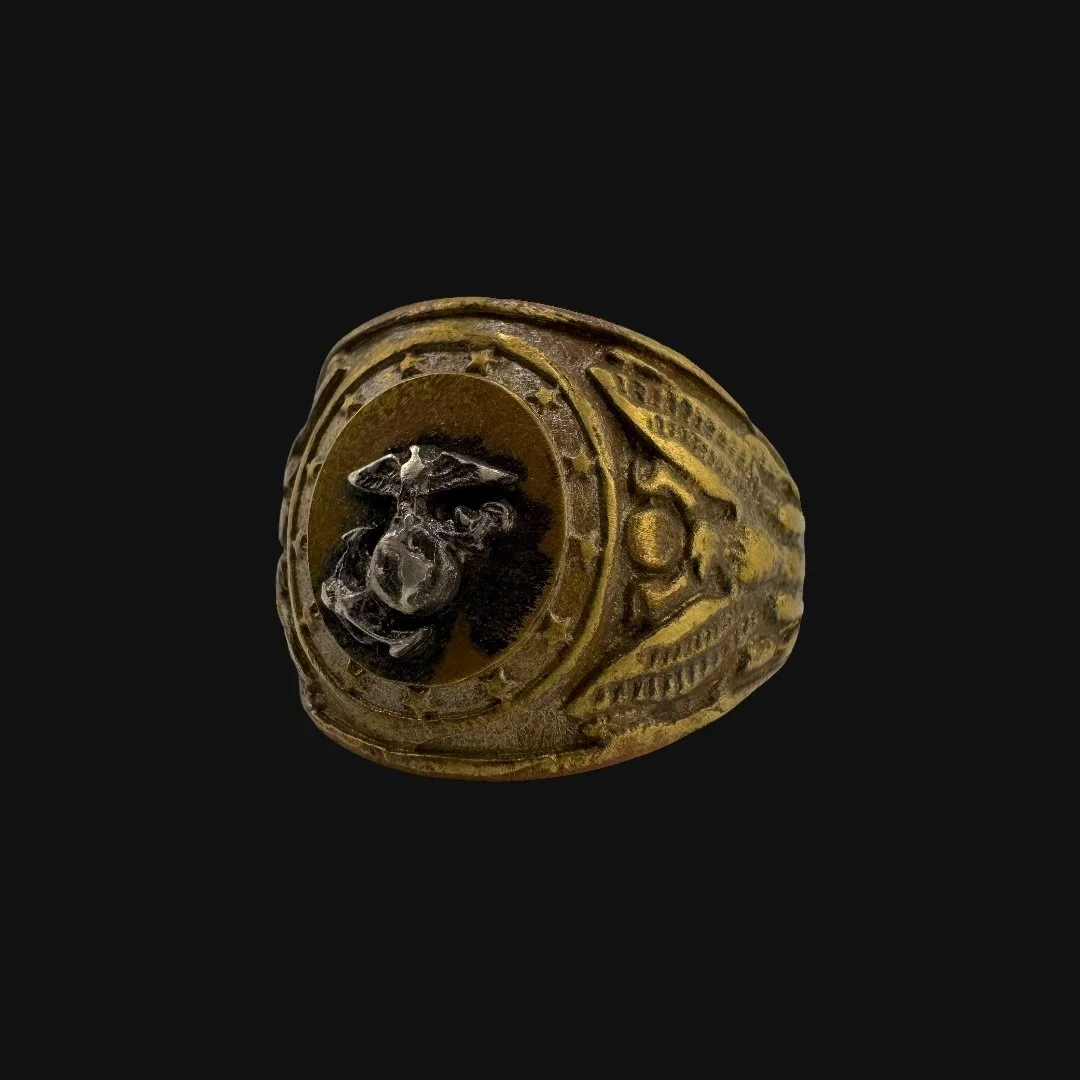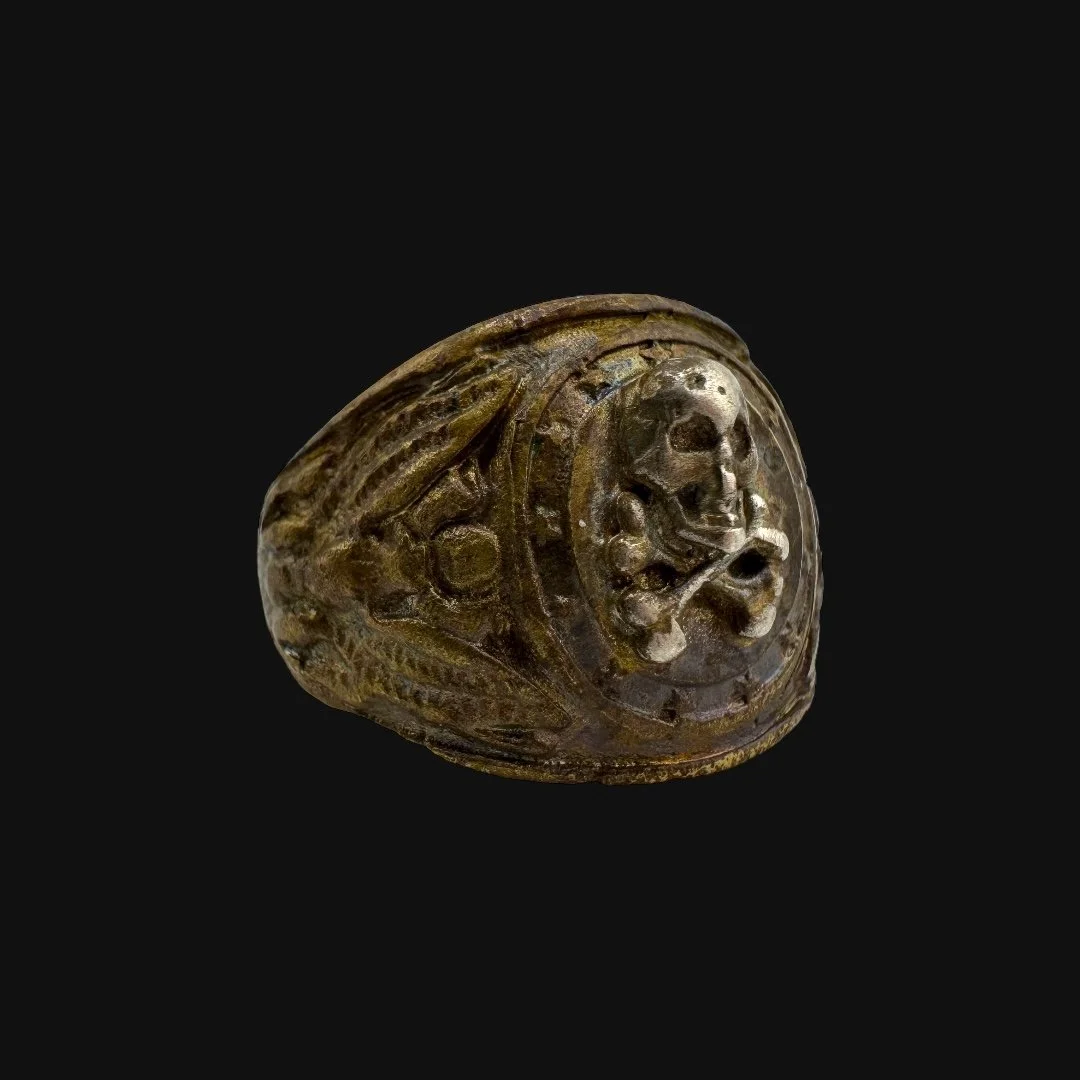 Image 1 of 12
Image 1 of 12

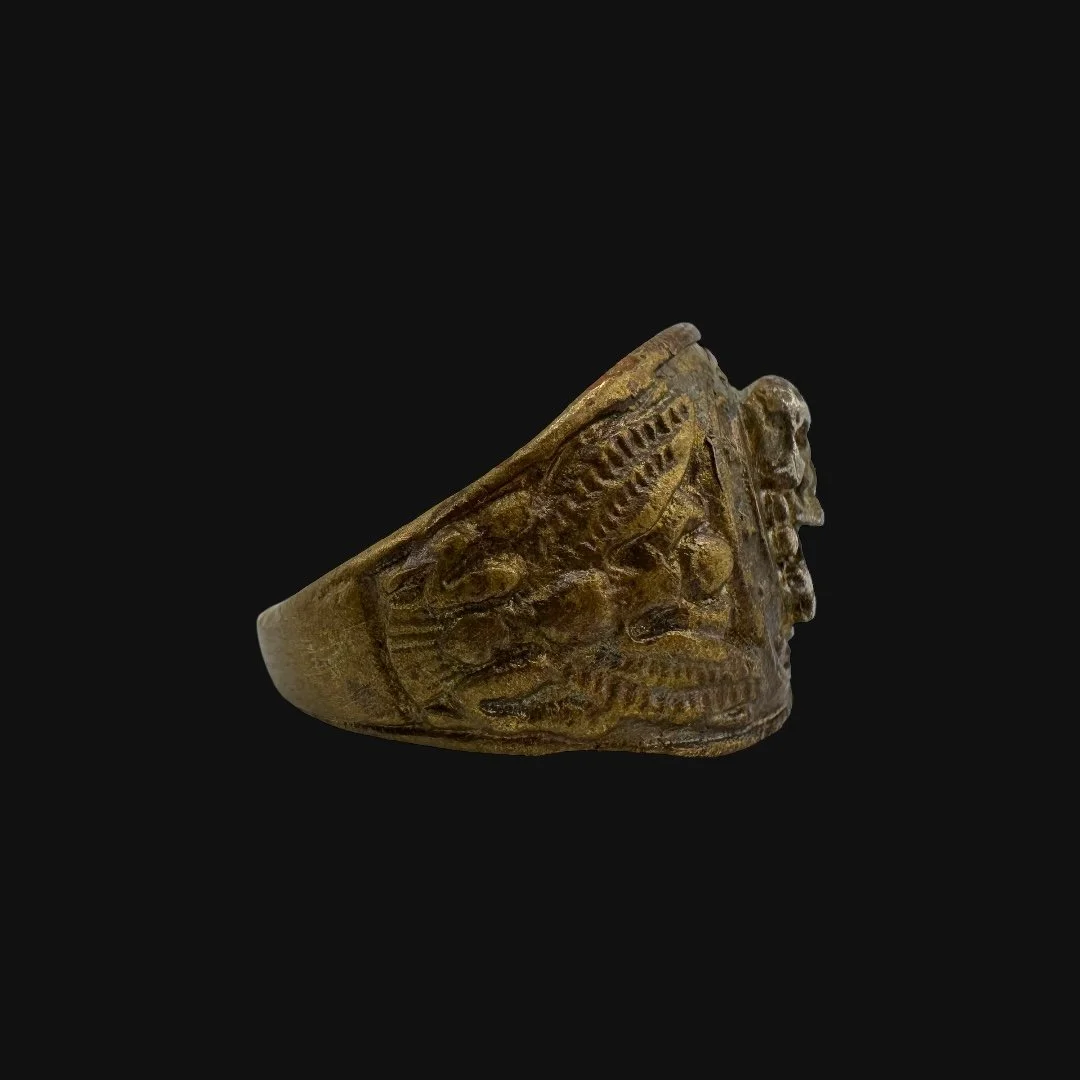 Image 2 of 12
Image 2 of 12

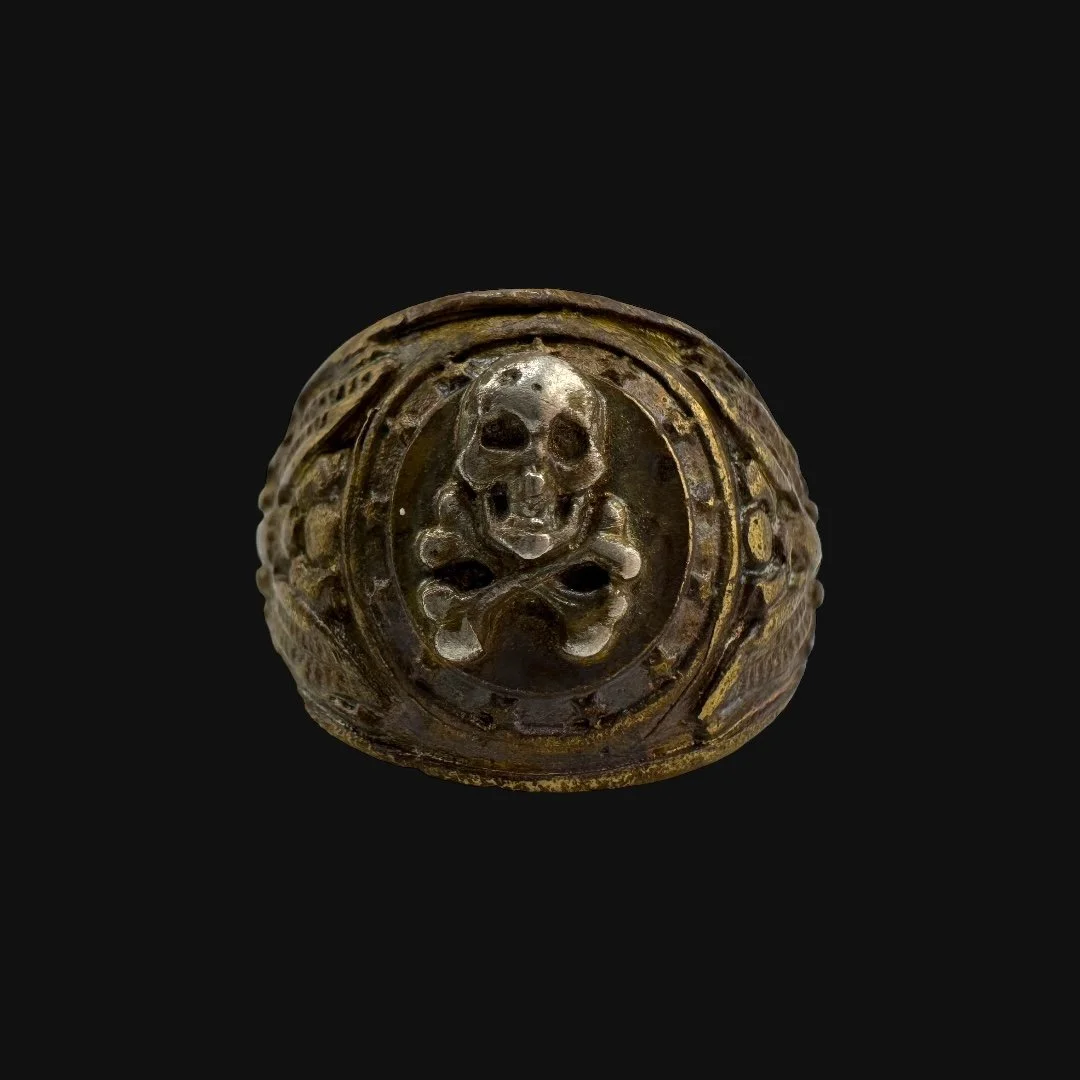 Image 3 of 12
Image 3 of 12

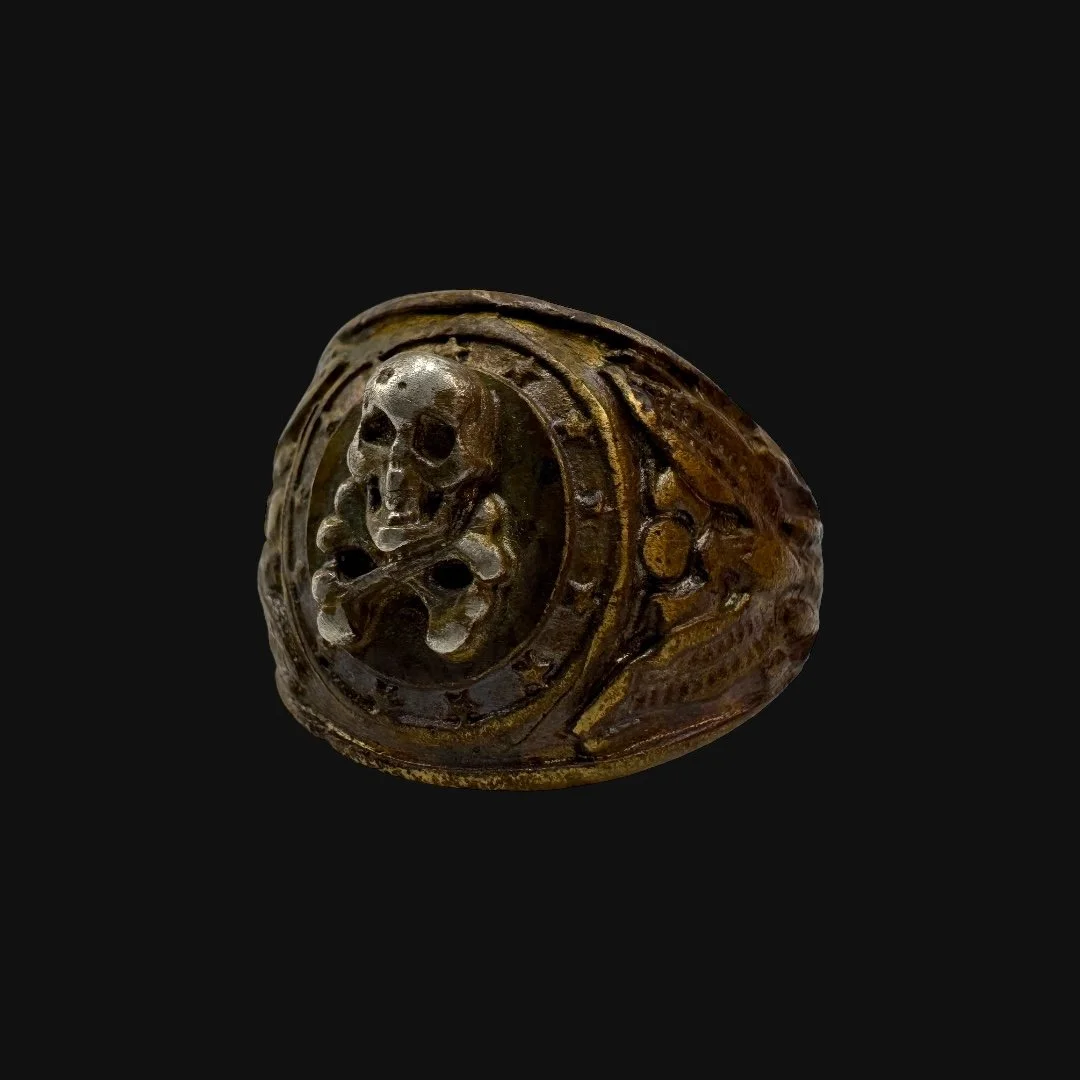 Image 4 of 12
Image 4 of 12

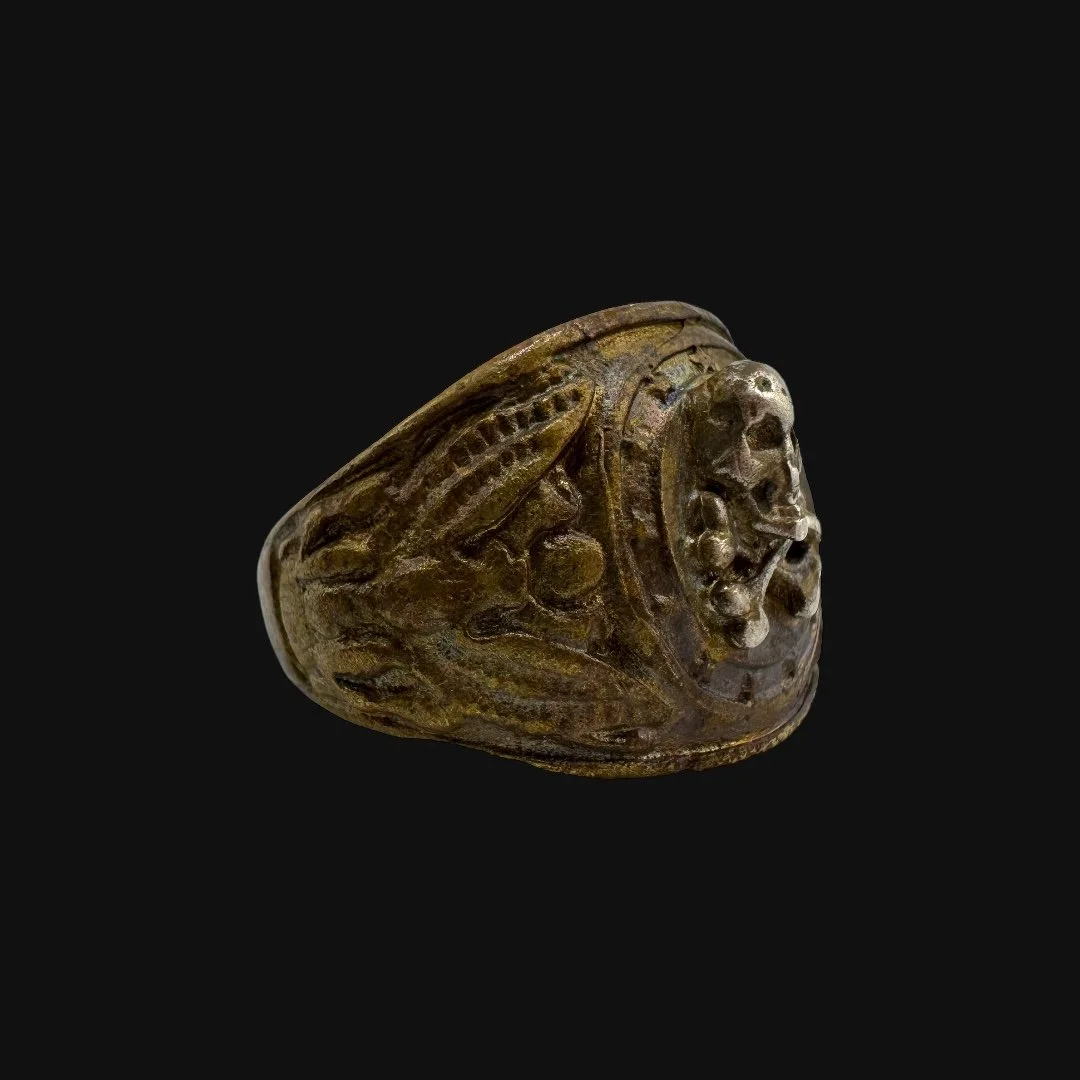 Image 5 of 12
Image 5 of 12

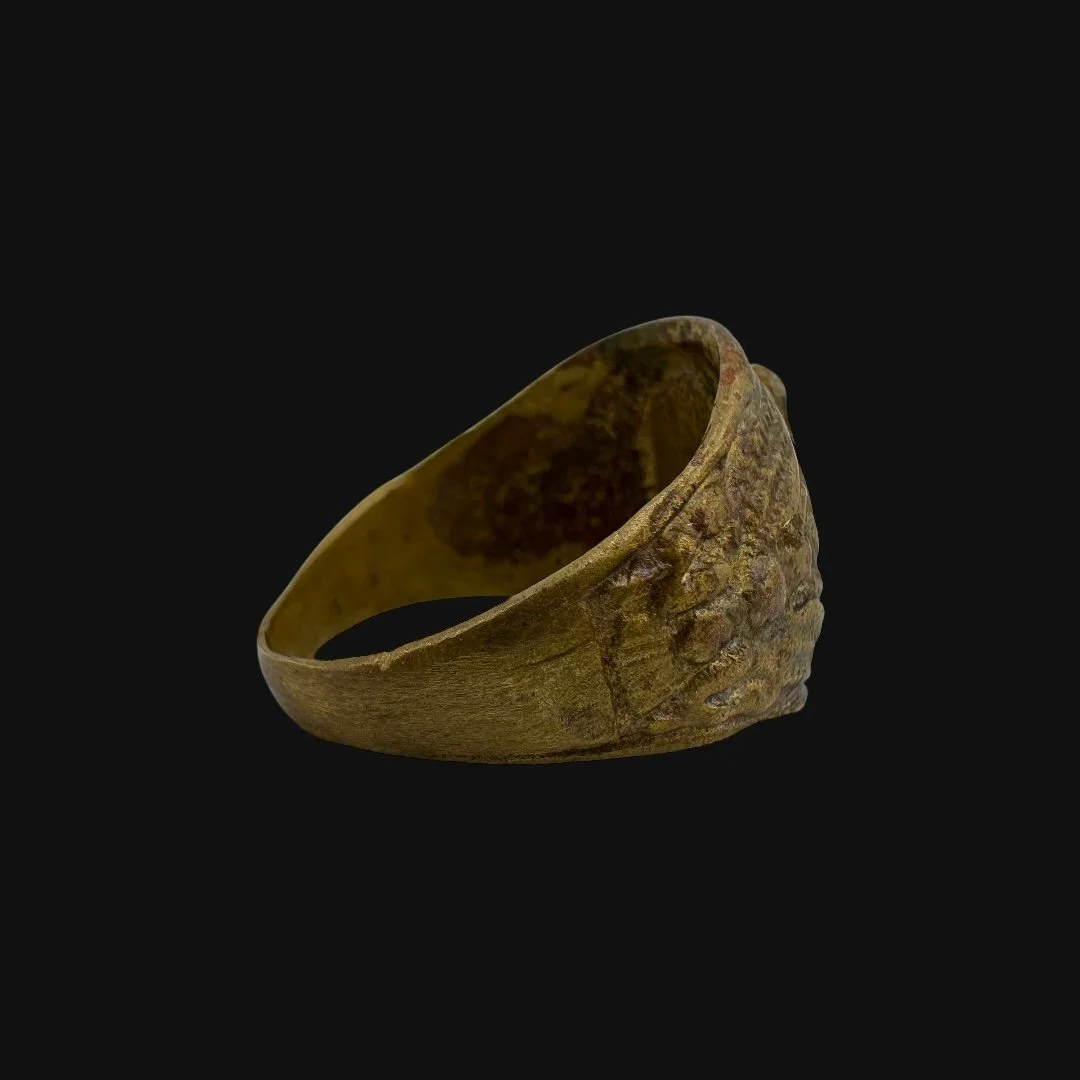 Image 6 of 12
Image 6 of 12

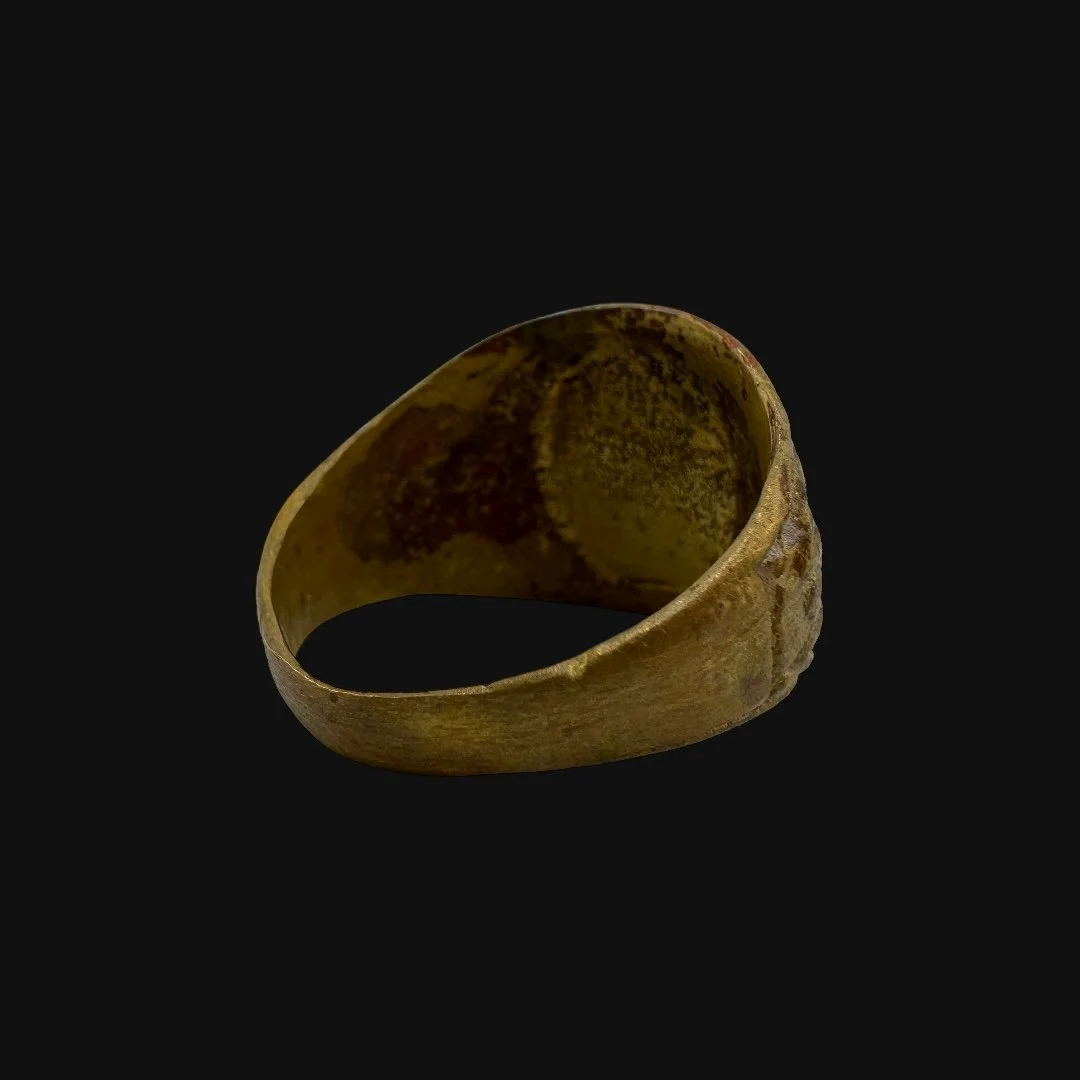 Image 7 of 12
Image 7 of 12

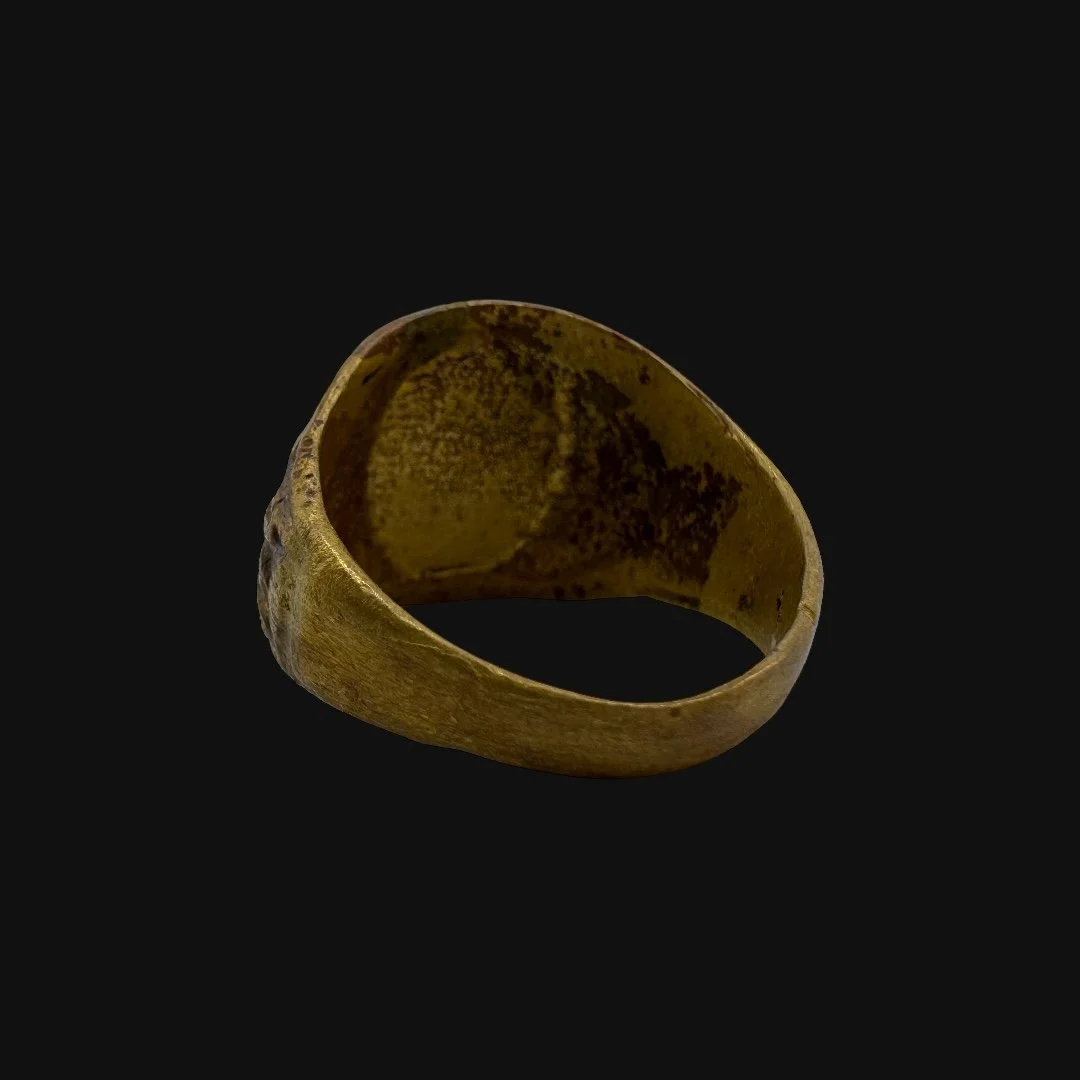 Image 8 of 12
Image 8 of 12

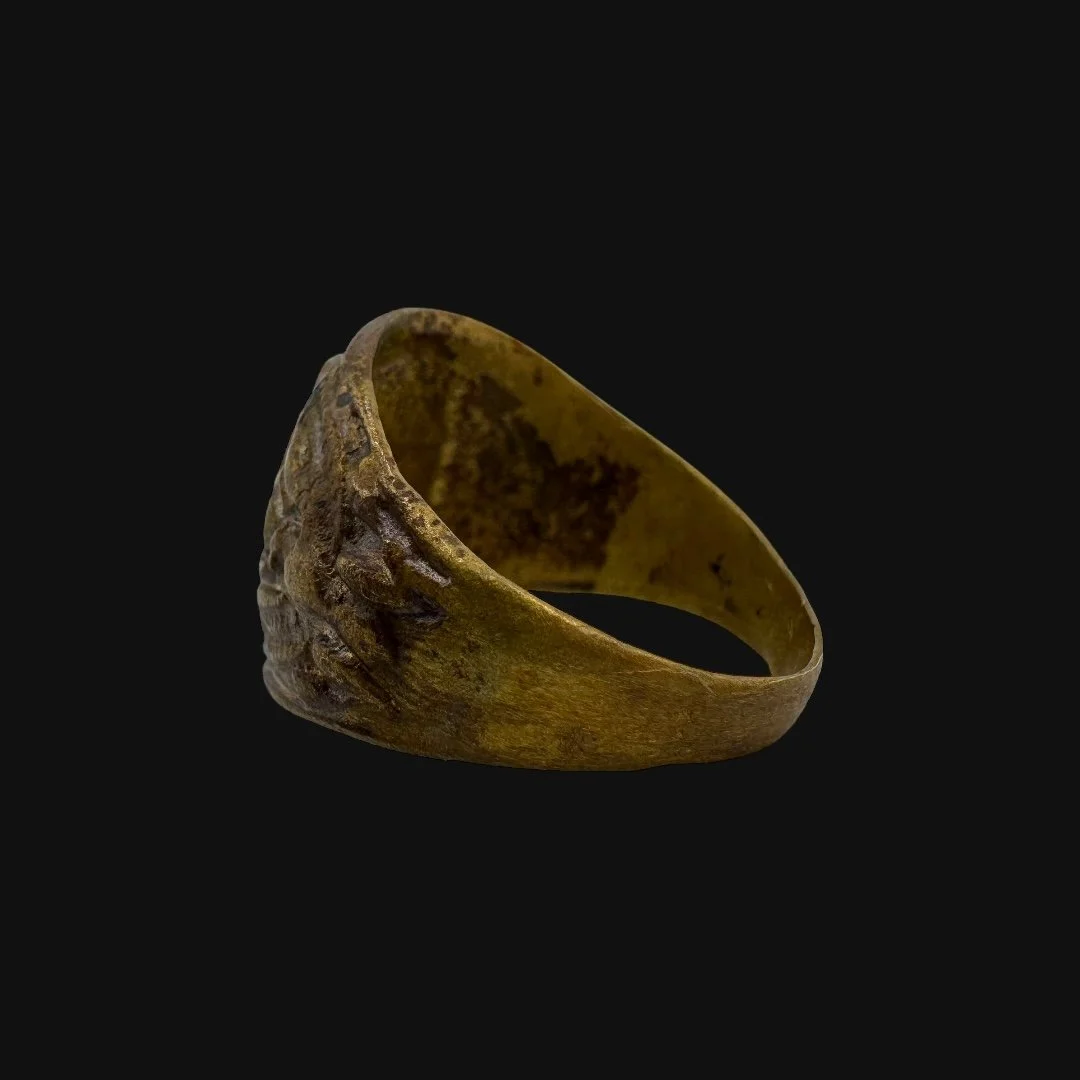 Image 9 of 12
Image 9 of 12

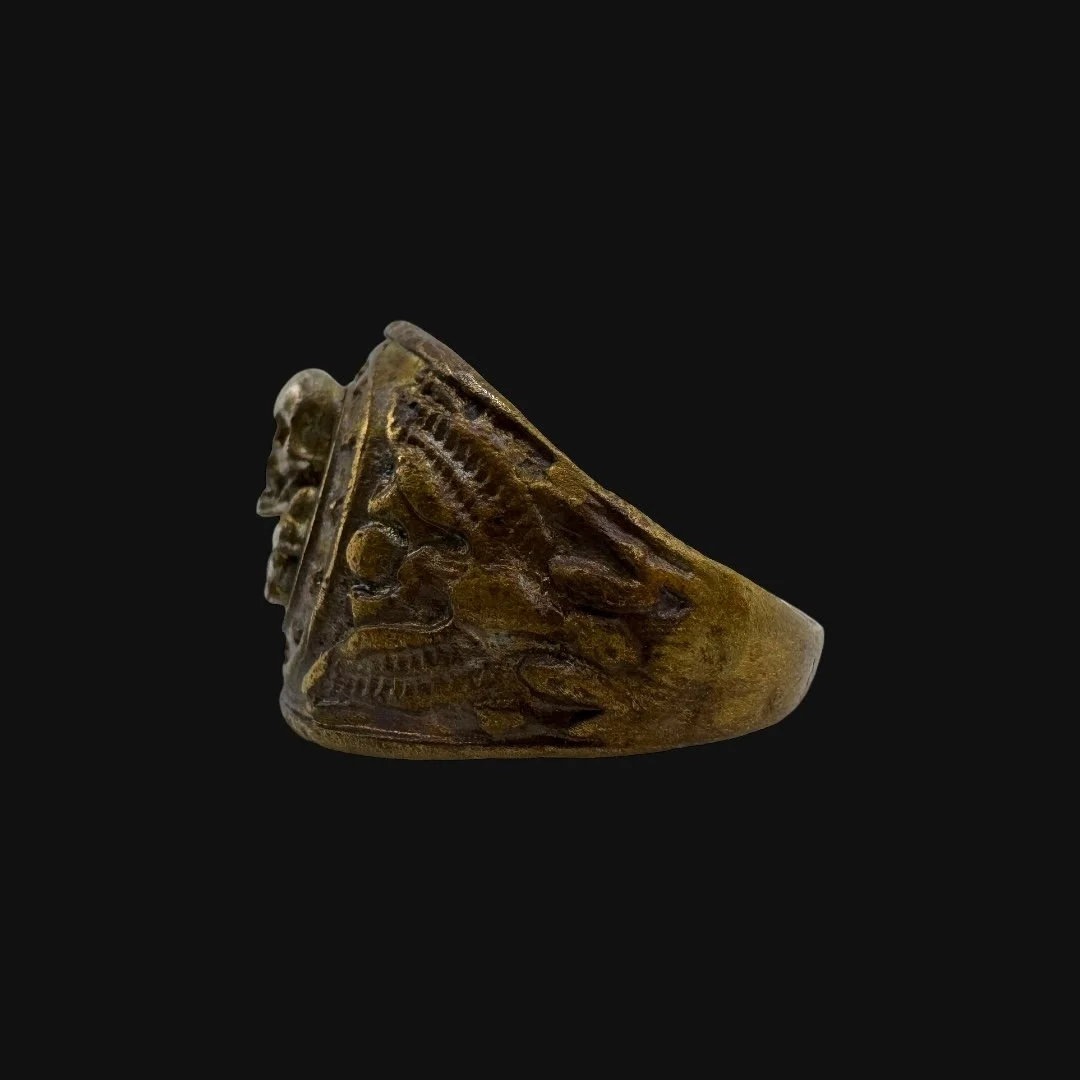 Image 10 of 12
Image 10 of 12

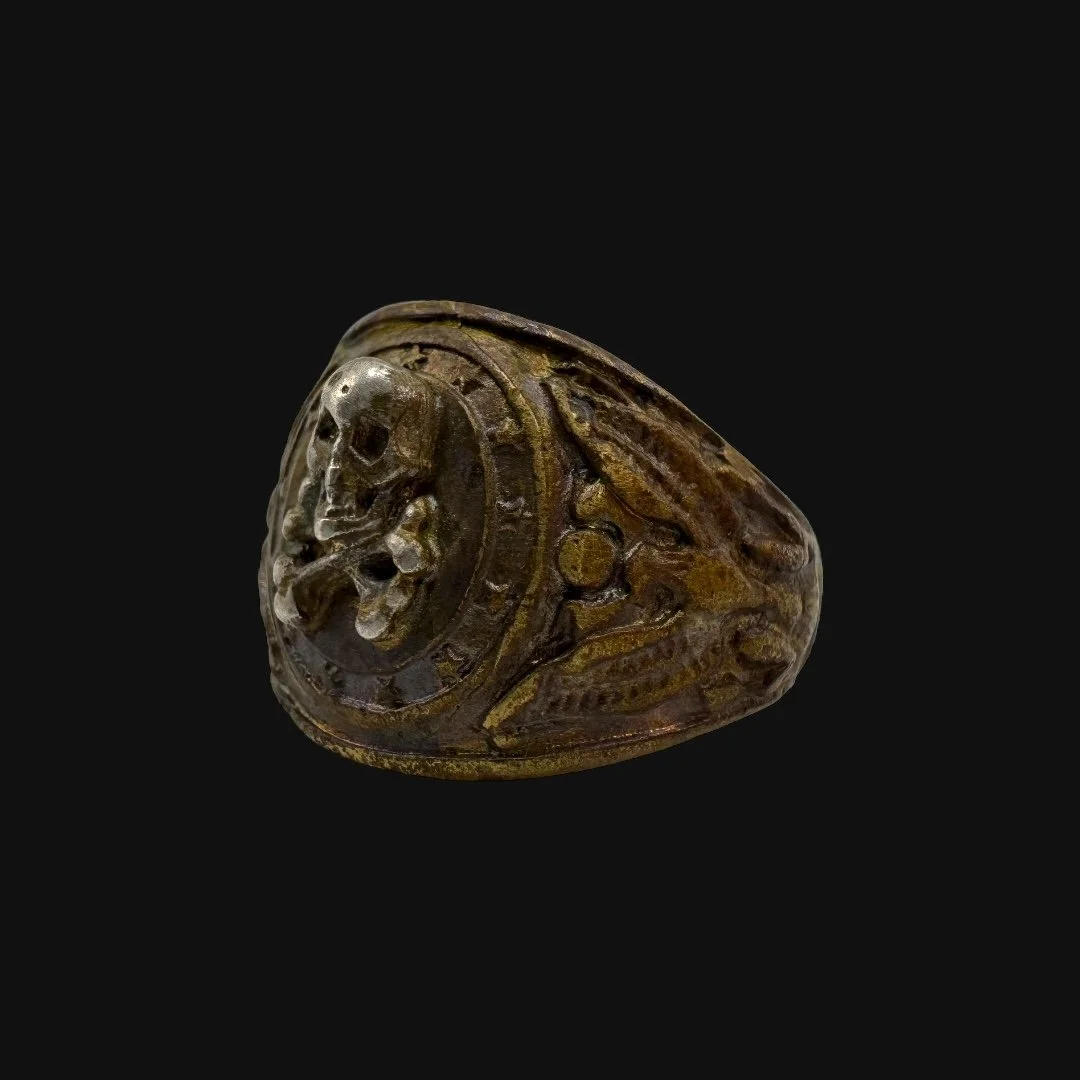 Image 11 of 12
Image 11 of 12

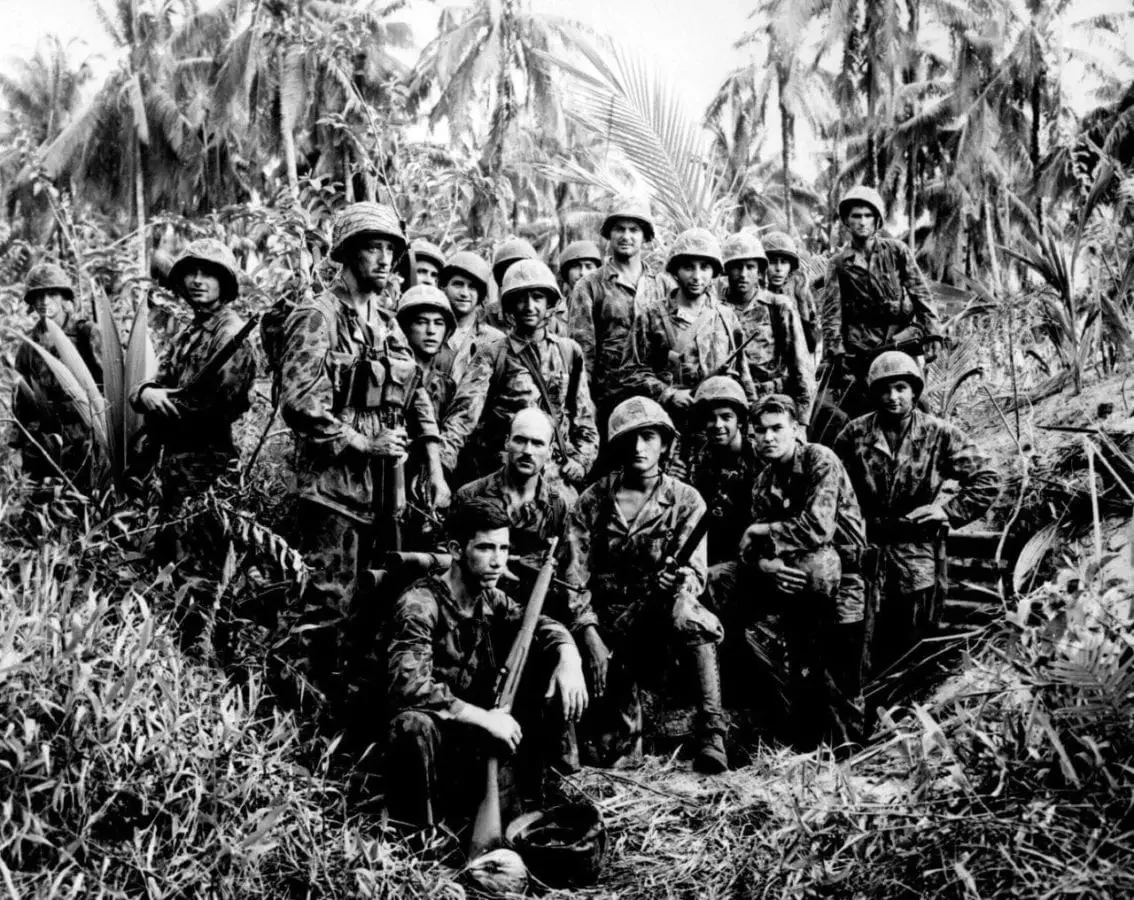 Image 12 of 12
Image 12 of 12













Original 1942-1945 WWII U.S. Marine Raiders “Skull Insignia” USMC Military Ring (Size 11)
Comes with a hand-signed C.O.A. and a full historical research write-up
From: World War II
Branch: U.S. Marine Corps (Marine Raiders)
Dated: 1942-1945
Ring Size: 11 (US)
Material: Bronze & Sterling Silver
Wearable History Collection:
This authentic 1942-1945 WWII-era ring, preserved in its original and unaltered condition, combines exceptional craftsmanship with lasting durability, making it fully suitable for modern wear today. As part of our exclusive World War II “Wearable History Ring Collection,” it offers the rare opportunity to own and wear a genuine piece of World War II. Both a timeless accessory and a tangible link to the past, this truly one-of-a-kind ring stands as a wearable tribute to the courage and sacrifice of a generation.
Historical Significance to the Marine Raiders During World War II:
The Marine Raiders were among the most distinctive and historically significant units of World War II, created in 1942 at the request of President Roosevelt to conduct unconventional operations modeled after British Commandos. Organized under leaders such as Merritt “Red Mike” Edson and Evans Carlson, the Raiders were trained for amphibious raids, jungle warfare, demolitions, and infiltration. They became known for their rigorous discipline and the “gung ho” spirit of teamwork that Carlson introduced. Their identity was reinforced by their striking skull insignia, which symbolized their fearlessness and set them apart as an elite force within the Corps.
The Raiders’ combat record was brief but impactful. They carried out the Makin Island raid in August 1942, a daring amphibious strike that boosted American morale early in the Pacific war. Soon after, they earned their most celebrated victory at the Battle of Edson’s Ridge during the Guadalcanal campaign, where Edson’s Raiders held off overwhelming Japanese assaults and secured Henderson Field. This battle became a defining moment in their history and earned Edson the Medal of Honor. Raiders went on to fight in some of the Pacific’s toughest campaigns, including New Georgia and Bougainville, where they conducted grueling jungle marches, launched surprise attacks on entrenched positions, and endured extreme conditions that tested their endurance and resolve.
Although the Raider battalions were disbanded in 1944 and reorganized into conventional infantry, their achievements proved the value of small, highly trained units capable of rapid and flexible operations. They laid important groundwork for modern U.S. special operations, and their legacy was honored decades later when Marine Forces Special Operations Command (MARSOC) adopted the “Raider” name in 2006. The Raiders’ daring campaigns, their iconic skull insignia, and their reputation for resilience ensured that their story remained one of the most celebrated chapters in Marine Corps history, marking them as pioneers of America’s special warfare tradition.
The Legacy Within This Ring:
This original World War II Marine Raider ring carries the fierce spirit of America’s first special operations force. On its face rests a variation of the infamous Marine Raider Raider skull emblem, a symbol of daring, brotherhood, and the willingness to fight in the most perilous conditions. Along its sides, the details recall the airborne-style wings and weaponry that defined these warriors, men trained to strike swiftly from sea or jungle against entrenched Japanese positions. For the Raiders who marched through the heat of Guadalcanal, braved the jungles of New Georgia, or held the ridges above Henderson Field, such a ring was never just decoration. It was a quiet token of identity. A reminder of the courage demanded on night raids, the endurance through disease and exhaustion, and the unshakable camaraderie of those who lived by the “gung ho” spirit. Today, the ring stands as a rare relic of Marine Raider history, a piece of wearable heritage that preserves not only the memory of the individual who once wore it but also the legacy of an elite force whose sacrifice and innovation helped shape the path to victory in World War II.
Comes with a hand-signed C.O.A. and a full historical research write-up
From: World War II
Branch: U.S. Marine Corps (Marine Raiders)
Dated: 1942-1945
Ring Size: 11 (US)
Material: Bronze & Sterling Silver
Wearable History Collection:
This authentic 1942-1945 WWII-era ring, preserved in its original and unaltered condition, combines exceptional craftsmanship with lasting durability, making it fully suitable for modern wear today. As part of our exclusive World War II “Wearable History Ring Collection,” it offers the rare opportunity to own and wear a genuine piece of World War II. Both a timeless accessory and a tangible link to the past, this truly one-of-a-kind ring stands as a wearable tribute to the courage and sacrifice of a generation.
Historical Significance to the Marine Raiders During World War II:
The Marine Raiders were among the most distinctive and historically significant units of World War II, created in 1942 at the request of President Roosevelt to conduct unconventional operations modeled after British Commandos. Organized under leaders such as Merritt “Red Mike” Edson and Evans Carlson, the Raiders were trained for amphibious raids, jungle warfare, demolitions, and infiltration. They became known for their rigorous discipline and the “gung ho” spirit of teamwork that Carlson introduced. Their identity was reinforced by their striking skull insignia, which symbolized their fearlessness and set them apart as an elite force within the Corps.
The Raiders’ combat record was brief but impactful. They carried out the Makin Island raid in August 1942, a daring amphibious strike that boosted American morale early in the Pacific war. Soon after, they earned their most celebrated victory at the Battle of Edson’s Ridge during the Guadalcanal campaign, where Edson’s Raiders held off overwhelming Japanese assaults and secured Henderson Field. This battle became a defining moment in their history and earned Edson the Medal of Honor. Raiders went on to fight in some of the Pacific’s toughest campaigns, including New Georgia and Bougainville, where they conducted grueling jungle marches, launched surprise attacks on entrenched positions, and endured extreme conditions that tested their endurance and resolve.
Although the Raider battalions were disbanded in 1944 and reorganized into conventional infantry, their achievements proved the value of small, highly trained units capable of rapid and flexible operations. They laid important groundwork for modern U.S. special operations, and their legacy was honored decades later when Marine Forces Special Operations Command (MARSOC) adopted the “Raider” name in 2006. The Raiders’ daring campaigns, their iconic skull insignia, and their reputation for resilience ensured that their story remained one of the most celebrated chapters in Marine Corps history, marking them as pioneers of America’s special warfare tradition.
The Legacy Within This Ring:
This original World War II Marine Raider ring carries the fierce spirit of America’s first special operations force. On its face rests a variation of the infamous Marine Raider Raider skull emblem, a symbol of daring, brotherhood, and the willingness to fight in the most perilous conditions. Along its sides, the details recall the airborne-style wings and weaponry that defined these warriors, men trained to strike swiftly from sea or jungle against entrenched Japanese positions. For the Raiders who marched through the heat of Guadalcanal, braved the jungles of New Georgia, or held the ridges above Henderson Field, such a ring was never just decoration. It was a quiet token of identity. A reminder of the courage demanded on night raids, the endurance through disease and exhaustion, and the unshakable camaraderie of those who lived by the “gung ho” spirit. Today, the ring stands as a rare relic of Marine Raider history, a piece of wearable heritage that preserves not only the memory of the individual who once wore it but also the legacy of an elite force whose sacrifice and innovation helped shape the path to victory in World War II.
